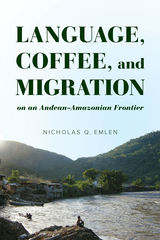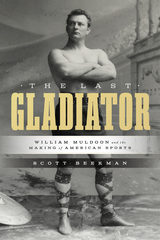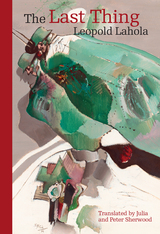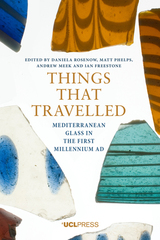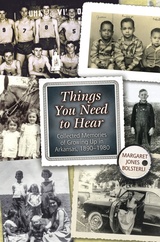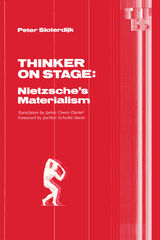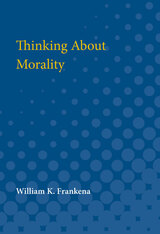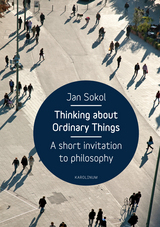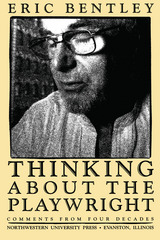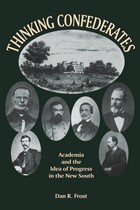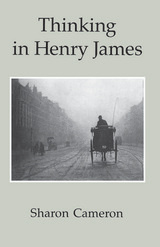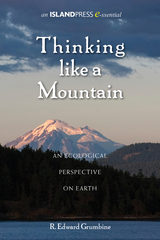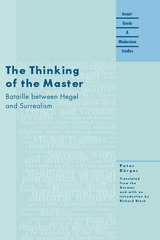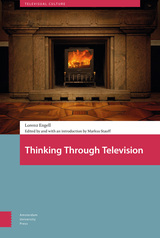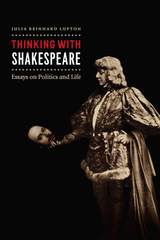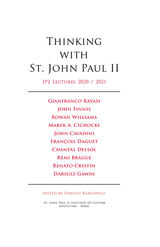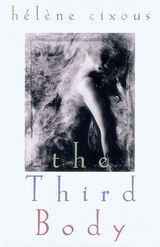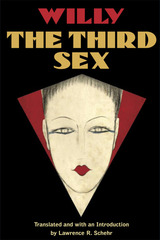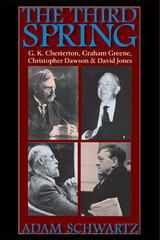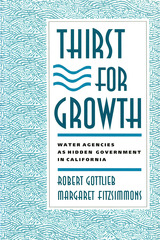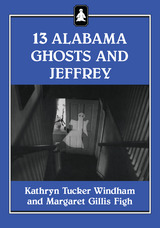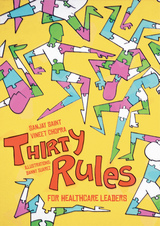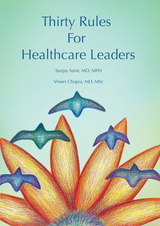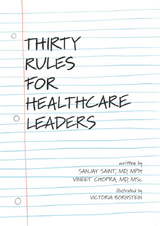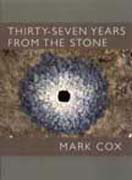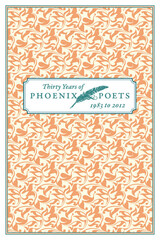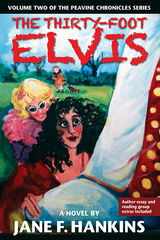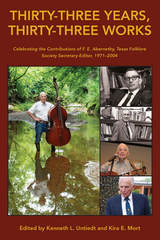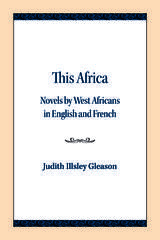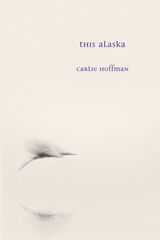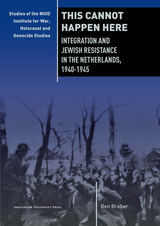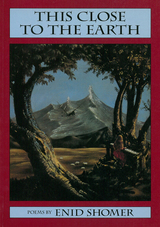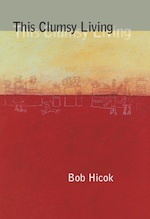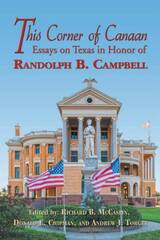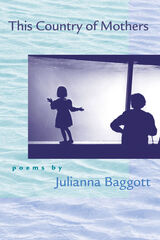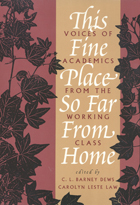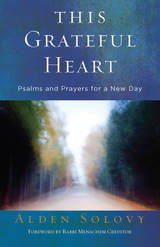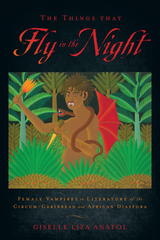 The Things That Fly in the Night: Female Vampires in Literature of the Circum-Caribbean and African Diaspora
Giselle Liza Anatol
Rutgers University Press, 2015 The Things That Fly in the Night explores images of vampirism in Caribbean and African diasporic folk traditions and in contemporary fiction. Giselle Liza Anatol focuses on the figure of the soucouyant, or Old Hag—an aged woman by day who sheds her skin during night’s darkest hours in order to fly about her community and suck the blood of her unwitting victims. In contrast to the glitz, glamour, and seductiveness of conventional depictions of the European vampire, the soucouyant triggers unease about old age and female power. Tracing relevant folklore through the English- and French-speaking Caribbean, the U.S. Deep South, and parts of West Africa, Anatol shows how tales of the nocturnal female bloodsuckers not only entertain and encourage obedience in pre-adolescent listeners, but also work to instill particular values about women’s “proper” place and behaviors in society at large. Alongside traditional legends, Anatol considers the explosion of soucouyant and other vampire narratives among writers of Caribbean and African heritage who in the past twenty years have rejected the demonic image of the character and used her instead to urge for female mobility, racial and cultural empowerment, and anti colonial resistance. Texts include work by authors as diverse as Nobel Laureate Toni Morrison, U.S. National Book Award winner Edwidge Danticat, and science fiction/fantasy writers Octavia Butler and Nalo Hopkinson. This book is available as an audio book (https://www.abantuaudio.com/books/1197052/The-Things-That-Fly-in-the-Night).
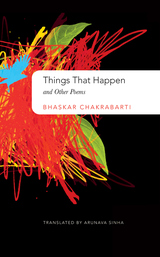 Things That Happen: and Other Poems
Bhaskar Chakrabarti
Seagull Books, 2016 Bhaskar Chakrabarti’s poetry is synonymous with the romantic melancholia inherent to Calcutta. His trenchant poetic voice was one of the most significant to emerge in the 1960s and ’70s—perhaps the most prolific period of modern Bengali poetry. Spanning the rise of militant leftism, the spread of crippling poverty across India, the war in Bangladesh, the influx of millions of refugees, the dark, dictatorial days of Indira Gandhi’s reign, and the disillusionment of communist rule in Bengal, Chakrabarti’s poems plumb the depths of urban angst, expressing the spirit of sadness and alienation in delicate metaphors wrapped in deceptively lucid language.
In this first-ever comprehensive translation of Chakrabarti’s work, award-winning translator Arunava Sinha masterfully articulates that clarity of vision, retaining the unique cadence and idioms of the Bengali language. Presenting verses and prose poems from all of Chakrabarti’s life—from his first volume, When Will Winter Come, published in 1971, to his last, The Language of Giraffes, published just before his death in 2005, and collecting several unpublished works as well—Things That Happen and Other Poems introduces the world to a brilliant and universal poetic voice of urban life.
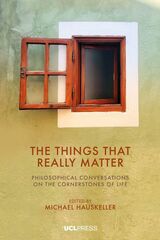 The Things That Really Matter: Philosophical Conversations on the Cornerstones of Life
Michael Hauskeller
University College London, 2022 A comprehensive exploration of the most fundamental aspects of human life through accessible conversations with contemporary philosophers.
While rooted in academic discourse, The Things That Really Matter comprehensively explores the most fundamental aspects of human life in approachable, non-technical language, adding fresh perspectives and new arguments and considerations that are designed to stimulate further debate. It features a series of conversations about the things in our life that we all, in one way or another, wrestle with if we are at all concerned about what kind of world we live in and what our role in it is: things like birth, age, and death, good and evil, the meaning of life, the nature of the self and the role the body plays for our identity, our gendered existence, love and faith, free will, beauty, and our experience of the sacred.
Situating abstract ideas in concrete experience, The Things That Really Matter encourages the reader to participate in an open-ended dialogue involving a variety of thinkers with different backgrounds and orientations. Lively and accessible, it shows thinking as a process and a collaborative endeavor that benefits from our talking to each other rather than against each other, featuring real conversations, where ideas are explored, tested, changed, and occasionally dropped. It is thinking in motion, personal yet universal.
Things that Travelled: Mediterranean Glass in the First Millennium AD
Edited by Daniela Rosenow, Matt Phelps, Andrew Meek, and Ian Freestone
University College London, 2018 This volume brings together contributions by key researchers of first-millennium glass from the Eastern Mediterranean and Europe. Taking an integrative approach combining scientific, archaeological, and cultural studies, the contributors illuminate changes in production and distribution and contend that variations in trade patterns reflected larger political, social, and economic developments in the Roman, Byzantine, and Early Medieval/Early Islamic eras.
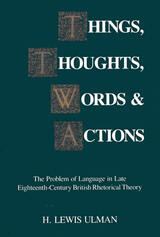 Things, Thoughts, Words, and Actions: The Problem of Language in Late Eighteenth-Century British Rhetorical Theory
H. Lewis Ulman
Southern Illinois University Press, 1994 H. Lewis Ulman here examines the roles of language theory in eighteenth-century British rhetorics, linking those roles to philosophical issues informing twentieth-century rhetorical theory. In doing so, Ulman develops a general model of the "problem of language" for rhetorical theory, a model that transcends the impasse between realism and skepticism that marks both eighteenth- and twentieth-century rhetorical theory. The nature of language was never more central to rhetorical theory than in the second half of the eighteenth century. Yet, until now, the articulation of theories of language and the arts of rhetoric in eighteenth-century Britain has received little attention. Ulman examines the role of grammar and theories of language in the formation of eighteenth-century rhetorical theory, investigating the significance of language theory for such key concerns of eighteenth-century rhetoric as verbal criticism, style, and elocution. His study highlights what he understands as the central motive of late eighteenth-century British rhetoricians—to construct for their particular cultural context philosophically rigorous accounts of verbal communication based on carefully articulated theories of thought and language. Toward this end, Ulman examines three eighteenth-century British rhetorical treatises: George Campbell’s Philosophy of Rhetoric, Hugh Blair’s Lectures on Rhetoric and Belles Lettres, and Thomas Sheridan’s Course of Lectures on Elocution. He then identifies the continuities and discontinuities between the problem of language for eighteenth- and twentieth-century rhetorical theory and proposes a pluralistic stance toward the problem of language in rhetoric as an alternative to the theoretical standoff that currently characterizes the debate between realist and antirealist rhetorics.
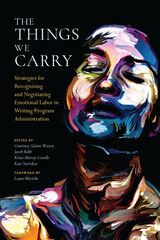 The Things We Carry: Strategies for Recognizing and Negotiating Emotional Labor in Writing Program Administration
Courtney Adams Wooten
Utah State University Press, 2020 Emotional labor is not adequately talked about or addressed by writing program administrators. The Things We Carry makes this often-invisible labor visible, demonstrates a variety of practical strategies to navigate it reflectively, and opens a path for further research. Particularly timely, this collection considers how writing program administrators work when their schools or regions experience crisis situations.
The book is broken into three sections: one emphasizing the WPA’s own work identity, one on fostering community in writing programs, and one on balancing the professional and personal. Chapters written by a diverse range of authors in different institutional and WPA contexts examine the roles of WPAs in traumatic events, such as mass shootings and natural disasters, as well as the emotional labor WPAs perform on a daily basis, such as working with students who have been sexually assaulted or endured racist, sexist, homophobic, and otherwise disenfranchising interactions on campus. The central thread in this collection focuses on “preserving” by acknowledging that emotions are neither good nor bad and that they must be continually reflected upon as WPAs consider what to do with emotional labor and how to respond. Ultimately, this book argues for more visibility of the emotional labor WPAs perform and for WPAs to care for themselves even as they care for others.
The Things We Carry extends conversations about WPA emotional labor and offers concrete and useful strategies for administrators working in both a large range of traumatic events as well as daily situations that require tactical work to preserve their sense of self and balance. It will be invaluable to writing program administrators specifically and of interest to other types of administrators as well as scholars in rhetoric and composition who are interested in emotion more broadly.
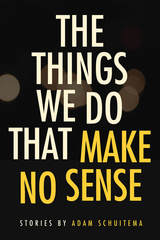 The Things We Do That Make No Sense: Stories
Adam Schuitema
Northern Illinois University Press, 2017 We are guilty of actions that make no sense. We perform acts of beauty and acts of ugliness. We give in to hidden ambitions, latent hungers, and clumsy grasps at insight.
At the heart of these stories are the rituals—grand and small—in which we humans partake; the peculiar gestures we hope will forge meaning or help us glean some sort of understanding. They may be formally ceremonial and spiritual, like the imposition of ashes in a darkened church. But often they are secular, private, and bizarre. A woman slipping her son’s old baby tooth into her mouth as he’s led away to prison. A girl in a tunnel playing an invisible piano while bombs ravage the city above. A man with a laser machine, creating a private galaxy to rekindle lost love. A daughter frantically searching a wax museum for her mother’s second self.
The power of ritual weaves through this collection amid lush descriptions and poignant dialogue. And from both the everyday and the sacred, these characters piece together the strange mosaic of life. Set mostly in Michigan, these stories will appeal to those who appreciate literary fiction, especially those with a connection to the Midwest.
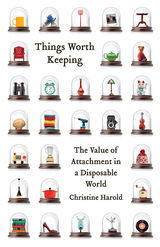 Things Worth Keeping: The Value of Attachment in a Disposable World
Christine Harold
University of Minnesota Press, 2020 A timely examination of the attachments we form to objects and how they might be used to reduce waste
Rampant consumerism has inundated our planet with pollution and waste. Yet attempts to create environmentally friendly forms of consumption are often co-opted by corporations looking to sell us more stuff. In Things Worth Keeping, Christine Harold investigates the attachments we form to the objects we buy, keep, and discard, and explores how these attachments might be marshaled to create less wasteful practices and balance our consumerist and ecological impulses. Although all economies produce waste, no system generates as much or has become so adept at hiding its excesses as today’s mode of global capitalism. This book suggests that managing the material excesses of our lives as consumers requires us to build on, rather than reject, our desire for and attraction to objects. Increasing environmental awareness on its own will be ineffective at reversing ecological devastation, Harold argues, unless it is coupled with a more thorough understanding of how and why we love the things that imbue our lives with pleasure, meaning, and utility. From Marie Kondo’s method for decluttering that asks whether the things in our lives “spark joy” to the advent of emotionally durable design, which seeks to reduce consumption and waste by increasing the meaningfulness of the relationship between user and product, Harold explores how consumer psychology and empathetic design can transform our perception of consumer products from disposable to interconnected. An urgent call for rethinking consumerism, Things Worth Keeping shows that by recognizing our responsibility for the things we produce, we can become better stewards of the planet.
Things You Need to Hear: Collected Memories of Growing Up in Arkansas, 1890–1980
Margaret Jones Bolsterli
University of Arkansas Press, 2016 Things You Need to Hear gathers memories of Arkansans from all over the state with widely different backgrounds. In their own words, these people tell of the things they did growing up in the early twentieth century to get an education, what they ate, how they managed to get by during difficult times, how they amused themselves and earned a living, and much more. Some of Margaret Bolsterli's "informants," as she calls them, are famous (Johnny Cash, Maya Angelou, Levon Helm, Joycelyn Elders), but many more are not. Their vivid personal stories have been taken from published works and from original interviews conducted by Bolsterli. All together, these tales preserve memories of ways of life that are compelling, entertaining, and certainly well worth remembering.
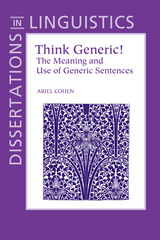 Think Generic!: The Meaning and Use of Generic Sentences
Ariel Cohen
CSLI, 1999 Our knowledge about the world is often expressed by generic sentences, yet their meanings are far from clear. This book provides answers to central problems concerning generics: what do they mean? Which factors affect their interpretation? How can one reason with generics? Cohen proposes that the meanings of generics are probability judgments, and shows how this view accounts for many of their puzzling properties, including lawlikeness. Generics are evaluated with respect to alternatives. Cohen argues that alternatives are induced by the kind as well as by the predicated property, and thus provides a uniform account of the varied interpretations of generics. He studies the formal properties of alternatives and provides a compositional account of their derivation by focus and presupposition. Cohen uses his semantics of generics to provide a formal characterization of adequate default reasoning, and proves some desirable results of this formalism.
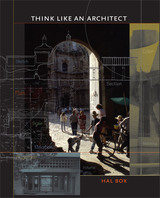 Think Like an Architect
By Hal Box
University of Texas Press, 2007 The design of cities and buildings affects the quality of our lives. Making the built environment useful, safe, comfortable, efficient, and as beautiful as possible is a universal quest. We dream about how we might live, work, and play. From these dreams come some 95 percent of all private and public buildings; professional architects design only about 5 percent of the built environment. While much of what non-architects build is beautiful and useful, the ugliness and inconveniences that blight many urban areas demonstrate that an understanding of good architectural design is vital for creating livable buildings and public spaces. To help promote this understanding among non-architects, as well as among those considering architecture as a profession, award-winning architect and professor Hal Box explains the process of making architecture from concept to completed building, using real-life examples to illustrate the principles involved in designing buildings that enhance the quality of life for those who live with them. To cause what we build to become architecture, we have three choices: hire an architect, become an architect, or learn to think like an architect. Box believes that everyone should be involved in making architecture and has organized this book as a series of letters to friends and students about the process of creating architecture. He describes what architecture should be and do; how to look at and appreciate good buildings; and how to understand the design process, work with an architect, or become an architect. He also provides an overview of architectural history, with lists of books to read and buildings to see. For those involved in building projects, Box offers practical guidance about what goes into constructing a building, from the first view of the site to the finished building. For students thinking of becoming architects, he describes an architect's typical training and career path. And for the wide public audience interested in architecture and the built environment, Box addresses how architecture relates to the city, where the art of architecture is headed, and why good architecture matters.
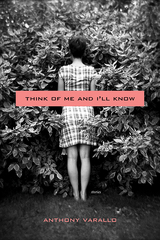 Think of Me and I'll Know: Stories
Anthony Varallo
Northwestern University Press, 2013 The characters in Think of Me and I’ll Know, Anthony Varallo’s probing new collection of stories, face moments in which insight comes too late, or proves insufficient, often to humorous effect. The characters approach the edge of learning something about themselves or about their relationships with other people, only to be left with knowledge that is not particularly useful.Varallo ably captures the often confused and heartrending perspective of adolescents discovering the world, such as in "No One at All," in which an eleven-year-old boy comes to see that another boy, two years older, is something less than a reliable friend. The author also captures the complications of family dynamics, such as the three generations of women in the related stories "Lucky Us" and "Tragic Little Me." The stories in Think of Me and I’ll Know show that we are perhaps not much more comprehensible to ourselves than others are to us.
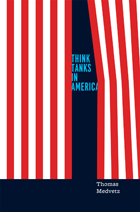 Think Tanks in America
Thomas Medvetz
University of Chicago Press, 2012 Over the past half-century, think tanks have become fixtures of American politics, supplying advice to presidents and policy makers, expert testimony on Capitol Hill, and convenient facts and figures to journalists and media specialists. But what are think tanks? Who funds them? What kind of “research” do they produce? Where does their authority come from? And how influential have they become? In Think Tanks in America, Thomas Medvetz argues that the unsettling ambiguity of the think tank is less an accidental feature of its existence than the very key to its impact. By combining elements of more established sources of public knowledge—universities, government agencies, businesses, and the media—think tanks exert a tremendous amount of influence on the way citizens and lawmakers perceive the world, unbound by the more clearly defined roles of those other institutions. In the process, they transform the government of this country, the press, and the political role of intellectuals. Timely, succinct, and instructive, this provocative book will force us to rethink our understanding of the drivers of political debate in the United States.
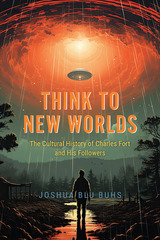 Think to New Worlds: The Cultural History of Charles Fort and His Followers
Joshua Blu Buhs
University of Chicago Press, 2024 How a writer who investigated scientific anomalies inspired a factious movement and made a lasting impact on American culture.
Flying saucers. Bigfoot. Frogs raining from the sky. Such phenomena fascinated Charles Fort, the maverick writer who scanned newspapers, journals, and magazines for reports of bizarre occurrences: dogs that talked, vampires, strange visions in the sky, and paranormal activity. His books of anomalies advanced a philosophy that saw science as a small part of a larger system in which truth and falsehood continually transformed into one another. His work found a ragged following of skeptics who questioned not only science but the press, medicine, and politics. Though their worldviews varied, they shared compelling questions about genius, reality, and authority. At the center of this community was adman, writer, and enfant terrible Tiffany Thayer, who founded the Fortean Society and ran it for almost three decades, collecting and reporting on every manner of oddity and conspiracy.
In Think to New Worlds, Joshua Blu Buhs argues that the Fortean effect on modern culture is deeper than you think. Fort’s descendants provided tools to expand the imagination, explore the social order, and demonstrate how power is exercised. Science fiction writers put these ideas to work as they sought to uncover the hidden structures undergirding reality. Avant-garde modernists—including the authors William Gaddis, Henry Miller, and Ezra Pound, as well as Surrealist visual artists—were inspired by Fort’s writing about metaphysical and historical forces. And in the years following World War II, flying saucer enthusiasts convinced of alien life raised questions about who controlled the universe.
Buhs’s meticulous and entertaining book takes a respectful look at a cast of oddballs and eccentrics, plucking them from history’s margins and spotlighting their mark on American modernism. Think to New Worlds is a timely consideration of a group united not only by conspiracies and mistrust of science but by their place in an ever-expanding universe rich with unexplained occurrences and visionary possibilities.
 The Thinker As Artist: From Homer To Plato and Aristotle
George Anastaplo
Ohio University Press, 1997 In an attempt to subject representative texts of a dozen ancient authors to a more or less Socratic inquiry, the noted scholar George Anastaplo suggests in The Thinker as Artist how one might usefully read as well as enjoy such texts, which illustrate the thinking done by the greatest artists and how they “talk” among themselves across the centuries. In doing so, he does not presume to repeat the many fine things said about these and like authors, but rather he discusses what he himself has noticed about them, text by text. Drawing upon a series of classical authors ranging from Homer and Sappho to Plato and Aristotle, Anastaplo examines issues relating to chance, art, nature, and divinity present in the artful works of philosophers and other thinkers. As he has done in his earlier work, Anastaplo mines the great texts to help us discover who we are and what we should be. Some of the works used are familiar, while others were once better known than they are now. The approach to all of them is fresh and provocative, demonstrating the value of such texts in showing the reader what to look for and how to talk about matters that have always engaged thoughtful human beings. These imaginative yet disciplined discussions of important texts of ancient Greek thought and of Raphael’s The School of Athens should appeal to both the specialist and the general reader.
 Thinker, Faker, Spinner, Spy: Corporate PR and the Assault on Democracy
Edited by David Miller and William Dinan
Pluto Press, 2007 The public relations industry is not just about celebrity gossip. This book shows how, whenever big business is threatened, spin doctors, lobbyists, think tanks and front groups are on hand to push the corporate interest, often at the public's expense.
Written by leading activists and writers, this book reveals the secrets of the PR trade including deception, the use of fake 'institutes', spying and dirty tricks. The impact can be devastating -- when the public is denied access to the truth, the results are rising inequality and environmental catastrophe.
Exposing the misdeeds of famous companies including Coca Cola, British Aerospace, Exxon and Monsanto, and revealing information about the covert funding of various apparently independent thinks tanks and institutes, the authors offer a guide to campaigns that can help us roll back corporate power and resist deceptive PR.
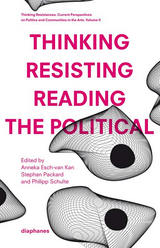 Thinking - Resisting - Reading the Political: Current Perspectives on Politics and Communities in the Arts Vol. 2
Edited by Anneka Esch-van Kan, Stephan Packard, and Philipp Schulte
Diaphanes, 2013 This volume contrasts a number of recently suggested concepts of the political – each of which connects to certain instances of art and literature in its discourse – with questions concerning the rigidity of those connections: How strongly do such claims to politics depend on their specific examples, what is the scope of their validity to understand art with regard to politics, and how can they help us grasp the political within other pieces of art? In each case, manners of thinking concepts of the political, the mutual resistance of such concepts and their academic treatment, and the turn towards specific readings informed by those concepts converge.
The essays collected in “Thinking Resistances. Current Perspectives on Politics, Community, and Art“ engage with political phenomena in their interrelations with arts as well as with recent theoretical and philosophical perspectives on the very meaning of politics, the political, and community.
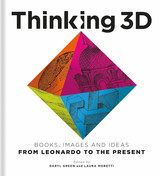 Thinking 3D: Books, Images and Ideas from Leonardo to the Present
Edited by Daryl Green and Laura Moretti
Bodleian Library Publishing, 2019 During the Renaissance, artists and illustrators developed the representation of truthful three-dimensional forms into a highly skilled art. As reliable illustrations of three-dimensional subjects became more prevalent, they also influenced the ways in which disciplines developed: architecture could be communicated much more clearly, mathematical concepts and astronomical observations could be quickly relayed, and observations of the natural world moved towards a more realistic method of depiction.
Through essays on some of the world’s greatest artists and thinkers—such as Leonardo da Vinci, Luca Pacioli, Andreas Vesalius, Johann Kepler, Galileo Galilei, William Hunter, and many more—this book tells the story of how of we learned to communicate three-dimensional forms on the two-dimensional page. It features some of Leonardo da Vinci’s ground-breaking drawings now in the Royal Collections and British Library as well as extraordinary anatomical illustrations, early paper engineering such as volvelles and flaps, beautiful architectural plans, and even views of the moon. With in-depth analysis of more than forty manuscripts and books, Thinking 3D also reveals the impact that developing techniques had on artists and draftsmen throughout time and across space, culminating in the latest innovations in computer software and 3D printing.
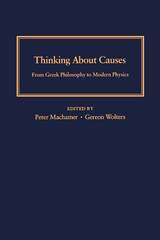 Thinking about Causes: From Greek Philosophy to Modern Physics
Peter Machamer
University of Pittsburgh Press, 2007
Emerging as a hot topic in the mid-twentieth century, causality is one of the most frequently discussed issues in contemporary philosophy. Causality has been a central concept in philosophy as well as in the sciences, especially the natural sciences, dating back to its beginning in Greek thought. David Hume famously claimed that causality is the cement of the universe. In general terms, it links eventualities, predicts the consequences of action, and is the cognitive basis for the acquisition and the use of categories and concepts in the child. Indeed, how could one answer why-questions, around which early rational thought begins to revolve, without hitting on the relationships between reason and consequence, cause and effect, or without drawing these distinctions? But a comprehensive definition of causality has been notoriously hard to provide, and virtually every aspect of causation has been subject to much debate and analysis.
Thinking about Causes brings together top philosophers from the United States and Europe to focus on causality as a major force in philosophical and scientific thought. Topics addressed include: ancient Stoicism and moral philosophy; the case of sacramental causality; traditional causal concepts in Descartes; Kant on transcendental laws; the influence of J. S. Mill's politics on his concept of causation; plurality in causality; causality in modern physics; causality in economics; and the concept of free will.
Taken together, the essays in this collection provide the best current thinking about causality, especially as it relates to the philosophy of science.
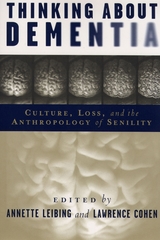 Thinking About Dementia: Culture, Loss, and the Anthropology of Senility
Leibing, Annette
Rutgers University Press, 2006 Bringing together essays by nineteen respected scholars, this volume approaches dementia from a variety of angles, exploring its historical, psychological, and philosophical implications. The authors employ a cross-cultural perspective that is based on ethnographic fieldwork and focuses on questions of age, mind, voice, self, loss, temporality, memory, and affect. Taken together, the essays make four important and interrelated contributions to our understanding of the mental status of the elderly. First, cross-cultural data show that the aging process, while biologically influenced, is also culturally constructed. Second, ethnographic reports raise questions about the diagnostic criteria used for defining the elderly as demented. Third, case studies show how a diagnosis affects a patient's treatment in both clinical and familial settings. Finally, the collection highlights the gap that separates current biological understandings of aging from its cultural meanings. As Alzheimer's disease and other forms of dementia continue to command an ever-increasing amount of attention in medicine and psychology, this book will be essential reading for anthropologists, social scientists, and health care professionals.
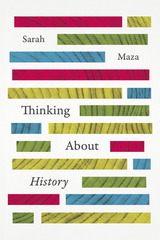 Thinking About History
Sarah Maza
University of Chicago Press, 2017 What distinguishes history as a discipline from other fields of study? That's the animating question of Sarah Maza’s Thinking About History, a general introduction to the field of history that revels in its eclecticism and highlights the inherent tensions and controversies that shape it.
Designed for the classroom, Thinking About History is organized around big questions: Whose history do we write, and how does that affect what stories get told and how they are told? How did we come to view the nation as the inevitable context for history, and what happens when we move outside those boundaries? What is the relation among popular, academic, and public history, and how should we evaluate sources? What is the difference between description and interpretation, and how do we balance them? Maza provides choice examples in place of definitive answers, and the result is a book that will spark classroom discussion and offer students a view of history as a vibrant, ever-changing field of inquiry that is thoroughly relevant to our daily lives.
Thinking About Morality
William K. Frankena
University of Michigan Press, 1980 Many people think about, and talk about, morality: journalists, novelists, social scientists, doctors, lawyers, and theologians. Most of their thinking and talking is either polemical—attacking or defending morality or proclaiming a "new" morality—or it is concerned with some popular, practical moral issue like abortion, euthanasia, or war. The author of Thinking About Morality believes that, to be helpful and sound, such moral thinking must be done in the context of a general theory or systematic philosophy of morality—something moral philosophers have long been trying to provide. In this book the author offers much of his own basic theory of morality, hoping that it will be of use to his readers in their thinking about morality, whatever the nature of their interest may be.
Thinking about Ordinary Things: A Short Invitation to Philosophy
Jan Sokol
Karolinum Press, 2013 In this compact yet informative book, former dissident, occasional politician, software developer, and noted Czech philosopher, Jan Sokol offers a way to teach young radical students about philosophy. Drawing on his own experiences, Sokol explains that one does not start teaching by talking about philosophers and theories specifically, but by aiming to excite students and from there leading them to think philosophically about the important questions that have faced humans for centuries. Divided into thirty short chapters, Thinking about Ordinary Things is a unique perspective on the teaching of philosophy.
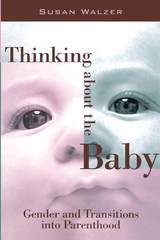 Thinking about the Baby: Gender and Transitions into Parenthood
Susan Walzer
Temple University Press, 1998 Many new mothers and fathers are surprised at how they change as individuals and as couples after a baby is born. Susan Walzer's interviews explore the tendency for men and women to experience their transitions into parenthood in different ways -- a pattern that has been linked to marital stress.
How do new mothers and fathers think about babies, and what is the influence of parental consciousness in reproducing motherhood and fatherhood as different experiences? The reports of new parents in this book illustrate the power of gendered cultural imagery in how women and men think about their roles and negotiate their parenting arrangement.
New parents talk about what it means to them to be a "good" mother or father and how this plays out in their working arrangements and their everyday interactions over child care. The author carefully unravels the effects of social norms, personal relationships, and social institutions in channeling parents toward gender-differentiated approaches to parenting.
 Thinking about the Earth: A History of Ideas in Geology
David Oldroyd
Harvard University Press, 1996 Not quite a history of geology, Thinking about the Earth is a history of the geological tradition of Western science. Beginning with a discussion of "organic" views of the earth in ancient cultures, David Oldroyd traverses such topics as "mechanical" and "historicist" views of the earth, map-work, chemical analyses of rocks and minerals, geomorphology, experimental petrology, seismology, theories of mountain building, and geochemistry. He brings us back to the idea that the earth may, in a sense, be regarded as a living entity, or at least that life is an essential feature of its behavior.
Oldroyd offers a broad-brush contribution to the history of ideas and theories about the earth, providing a general synthesis of what science-historians have written about the history of the earth sciences. He shows us that ideas about the earth have been changing constantly since the beginnings of geological science in the seventeenth and eighteenth centuries, and indeed that ideas changed much more rapidly after the establishment of this science than in preceding centuries.
Thinking about the Earth does not assume previous knowledge of earth science. What it does require is an openness to the notion that an understanding of what geologists have to tell us today about the earth can be achieved by examining the evolving history of ideas in geology. This book will be of considerable interest to historians of science, historians of ideas, geologists, students of earth science, and general readers as well.
Thinking about the Playwright: Comments from Four Decades
Eric Bentley
Northwestern University Press, 1987 Essays discuss Ibsen, Strindberg, O'Neill, Brecht, Shaw, acting styles, theater controversies, translation, regional drama, and the nature of theater.
 Thinking Across the American Grain: Ideology, Intellect, and the New Pragmatism
Giles Gunn
University of Chicago Press, 1992 In Thinking Across the American Grain Giles Gunn makes a
major contribution to the current revival of pragmatism in
America by showing how it provides the most critically
resilient and constructive response to the intellectual
challenges of postmodernism.
Gunn reclaims and refurbishes elements of the pragmatic
tradition that either have been lost or have undergone
important changes and shows how newer critical approaches
have strong roots in the pragmatic tradition. For Gunn,
pragmatism is no longer concerned solely with the nature of
knowledge and the meaning of truth. Because of its
insistence on critical self-awareness, its opposition to
closed systems of thought, and its concern with the ethical,
political, and practical contexts of ideas, pragmatism offers
a blueprint for performing intellectual work in a world
without absolutes. The world Gunn's pragmatism recognizes is
one of multiple truths, unstable interpretations, and
competing interests.
After critically reexamining the nature and scope of the
pragmatic legacy, Gunn explores the way pragmatism
successfully responds to conceptual and methodological
controversies, from the rebirth of ideology, the spread of
interdisciplinarity, and the development of the new
historicism, to the revolt against theory, the erosion of
public discourse, and the problematics of American civil
religion. Drawing throughout on the work of William James,
Henry James, Sr., John Dewey, Kenneth Burke, W. E. B. Du
Bois, Richard Poirier, Stanley Cavell, Clifford Geertz, Frank
Lentricchia, Richard Rorty, Richard J. Bernstein, and
others, Gunn shows that pragmatism, because it offers a way
of thinking across the categories of modern intellectual
specializations, is located at the intersection of these
critical, and often competitive, discourses. The postmodern
challenge for the pragmatist thinker is not only how to
render these different discourses conversible with one
another, but how to turn the salient insights of each into
elements of a new democratic and critical public culture, one
able to counter the twin threats of ideology and solipsism.
Giles Gunn is one of our most acclaimed contemporary critics,
and this broad and ambitious book is certain to become one of
the central works in the current revival of critical
pragmatism and cultural studies.
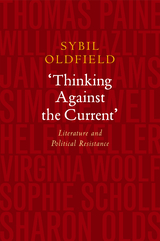 'Thinking Against the Current': Literature and Political Resistance
Sybil Oldfield
Sussex Academic Press, 2022 This collection of literary/historical essays, written 1970-2010, covers political subjects as diverse as 17th Century Quaker persecution history, the social impact of Malthus, the self-emancipation of English women, Eleanor Rathbone on the human rights of girls and German women's resistance to Hitler. The more literary subjects include the social thinking of the English Romantics, Dickens' Great Expectations, Simone Weil's great essays attacking militarism and Virginia Woolf's opposition to the State -- as well as contemporary American women poets on the problem of war. But despite all its diversity, this collection has one unifying theme -- the necessity for resistance, for 'thinking against the current', as Virginia Woolf wrote in 'Thoughts on Peace in an Air-raid'. The torch of resistance to oppression and militarism is shown to have been continuously handed on through the generations from the seventeenth century to our own day by men and women who had the courage, at whatever personal cost, to 'fight with the mind'. This book of passionate, lively essays is not merely a treasure trove for biographical researchers; it is also strengthening medicine, introducing us to unfamiliar forebears who can help us in our current struggle for a better world. As Simone Weil said: "We can find something better than ourselves in the past".
 Thinking Aloud
Jerry Pinto
Seagull Books, 2025 Compelling and personal essays that underscore the importance of inclusive storytelling in understanding our world.
In Thinking Aloud, Jerry Pinto examines the notion of Bollywood as a national cinema in a linguistically diverse India. He traces its evolution from films from the 1940s–50s like Kismet and Mother India—which contributed to national identity through its themes of sacrifice and unity—to male-centric cinematic narratives of the 1970s–80s. Writing on Bollywood, biography, translation, and teaching with candor and empathy, Pinto argues that Bollywood's simplistic, good-versus-evil narratives have deeply influenced the public’s perception of their past.
Drawing from his translations of works such as Sachin Kunalkar’s Cobalt Blue and Daya Pawar’s Baluta, Pinto stresses the importance of biographies in providing personal insights into historical events, challenging monolithic narratives, and enriching our understanding of history through diverse, often overlooked, experiences. He delves deeply into the vital role of translation in bridging cultural and linguistic divides. This book also explores Pinto’s unconventional journey as an educator. Reflecting on his reluctant start as a teacher at fourteen and his innovative methods promoting the inclusion of marginalized voices, he offers a poignant commentary on the transformative power of education.
 Thinking and Being
Irad Kimhi
Harvard University Press, 2018 Opposing a long-standing orthodoxy of the Western philosophical tradition running from ancient Greek thought until the late nineteenth century, Frege argued that psychological laws of thought—those that explicate how we in fact think—must be distinguished from logical laws of thought—those that formulate and impose rational requirements on thinking. Logic does not describe how we actually think, but only how we should. Yet by thus sundering the logical from the psychological, Frege was unable to explain certain fundamental logical truths, most notably the psychological version of the law of non-contradiction—that one cannot think a thought and its negation simultaneously.
Irad Kimhi’s Thinking and Being marks a radical break with Frege’s legacy in analytic philosophy, exposing the flaws of his approach and outlining a novel conception of judgment as a two-way capacity. In closing the gap that Frege opened, Kimhi shows that the two principles of non-contradiction—the ontological principle and the psychological principle—are in fact aspects of the very same capacity, differently manifested in thinking and being.
As his argument progresses, Kimhi draws on the insights of historical figures such as Aristotle, Kant, and Wittgenstein to develop highly original accounts of topics that are of central importance to logic and philosophy more generally. Self-consciousness, language, and logic are revealed to be but different sides of the same reality. Ultimately, Kimhi’s work elucidates the essential sameness of thinking and being that has exercised Western philosophy since its inception.
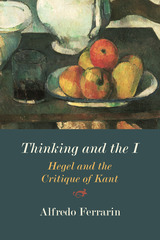 Thinking and the I: Hegel and the Critique of Kant
Alfredo Ferrarin
Northwestern University Press, 2019 What is the relation between thinking and the I that thinks? And what is the relation between thought and reality? The ordinary view shared by modern philosophers from Descartes to Kant, as well as by common sense, is that there is only thought when someone thinks something, and thoughts and concepts are mental acts that refer to objects outside us.
In Thinking and the I: Hegel and the Critique of Kant, Alfredo Ferrarin shows that Hegel’s philosophy entails a radical criticism of this ordinary conception of thinking. Breaking with the habitual presuppositions of both modern philosophy and common sense, Ferrarin explains that thought, negation, truth, reflection, and dialectic for Hegel are not properties of an I and cannot be reduced to the subjective activity of a self-conscious subject. Rather, he elucidates, thought is objective for Hegel in different senses. Reality as a whole is animated by a movement of thought and an unconscious logic as a spontaneity that reifies itself in determinate forms. Ferrarin concludes the book with a comprehensive comparison of Hegel’s and Kant’s concepts of reason.
While it mainly focuses on Hegel’s Phenomenology, Science of Logic, and Encyclopaedia, this ambitious book covers all aspects of Hegel’s philosophy. Its originality and strength lie in its recovery of the original core of Hegel’s dialectic over and above its currently predominant transcendental, neopragmatist, or realist appropriations. It will be essential reading for all students of Hegel, Kant, and German idealism in general for years to come.
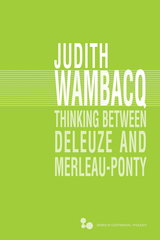 Thinking between Deleuze and Merleau-Ponty
Judith Wambacq
Ohio University Press, 2017 Thinking between Deleuze and Merleau-Ponty is the first book-length examination of the relation between these two major thinkers of the twentieth century. Questioning the dominant view that the two have little of substance in common, Judith Wambacq brings them into a compelling dialogue to reveal a shared, historically grounded concern with the transcendental conditions of thought. Both Merleau-Ponty and Deleuze propose an immanent ontology, differing more in style than in substance. Wambacq’s synthetic treatment is nevertheless critical; she identifies the limitations of each thinker’s approach to immanent transcendental philosophy and traces its implications—through their respective relationships with Bergson, Proust, Cézanne, and Saussure—for ontology, language, artistic expression, and the thinking of difference. Drawing on primary texts alongside current scholarship in both French and English, Thinking between Deleuze and Merleau-Ponty is comprehensive and rigorous while remaining clear, accessible, and lively. It is certain to become the standard text for future scholarly discussion of these two major influences on contemporary thought.
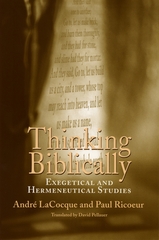 Thinking Biblically: Exegetical and Hermeneutical Studies
André LaCocque and Paul Ricoeur
University of Chicago Press, 1998 Unparalled in its poetry, richness, and religious and historical significance, the Hebrew Bible has been the site and center of countless commentaries, perhaps none as unique as Thinking Biblically. This remarkable collaboration sets the words of a distinguished biblical scholar, André LaCocque, and those of a leading philosopher, Paul Ricoeur, in dialogue around six crucial passages from the Old Testament: the story of Adam and Eve; the commandment "thou shalt not kill"; the valley of dry bones passage from Ezekiel; Psalm 22; the Song of Songs; and the naming of God in Exodus 3:14. Commenting on these texts, LaCocque and Ricoeur provide a wealth of new insights into the meaning of the different genres of the Old Testament as these made their way into and were transformed by the New Testament.
LaCocque's commentaries employ a historical-critical method that takes into account archaeological, philological, and historical research. LaCocque includes in his essays historical information about the dynamic tradition of reading scripture, opening his exegesis to developments and enrichments subsequent to the production of the original literary text. Ricoeur also takes into account the relation between the texts and the historical communities that read and interpreted them, but he broadens his scope to include philosophical speculation. His commentaries highlight the metaphorical structure of the passages and how they have served as catalysts for philosophical thinking from the Greeks to the modern age.
This extraordinary literary and historical venture reads the Bible through two different but complementary lenses, revealing the familiar texts as vibrant, philosophically consequential, and unceasingly absorbing.
Thinking Confederates: Academia and the Idea of Progress in the New South
Dan R. Frost
University of Tennessee Press, 2001
In the wake of their defeat in the Civil War, many southern intellectuals recognized that their institutions had failed to supply antebellum graduates with the skills needed to compete with the North. Thus, educators who had previously served as Confederate officers led an effort to promote academic reform throughout the region.
In Thinking Confederates, Dan R. Frost details how these men set about transforming southern higher education, shifting their schools from a classical orientation to a new emphasis on science and engineering. Although they espoused a reverence for the past, they recognized that the eradication of slavery had been necessary for southern progress, and they upheld an idea of a New South that embraced beliefs both in the “Lost Cause” and in national reconciliation.
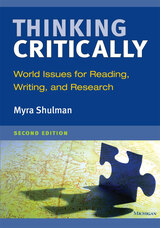 Thinking Critically, Second Edition: World Issues for Reading, Writing, and Research
Myra Shulman
University of Michigan Press, 2014 Just like its predecessor, Thinking Critically helps students improve reading, writing, and research skills while exploring and analyzing major global issues. Although many of the same topics are explored in this second edition—world hunger, global health, gender equality, regional conflict, cultural heritage, and immigration policies—all 31 authentic readings in the second edition are new. New topics included in this edition are cybersecurity, climate change, education reform, leadership, and human rights. Each chapter contains two or three readings (from print and online news sources, journals, and blogs) designed to raise rather than provide answers; a vocabulary review and discussion questions for each reading; a reaction writing task; a question on the topic to research; a writing assignment for a specific academic or business genre (with models in an appendix); speaking activities (oral presentation, debate, or role-play); and a Thinking about It task. The Thinking about It task calls on students’ ability to evaluate a complex issue with objectivity and to propose a realistic approach, making this textbook good preparation for academic courses that require critical-thinking skills to express opinions both orally and in writing. Several new academic/business written genres (abstract, fact sheet, briefing paper, report on a survey) have also been added.
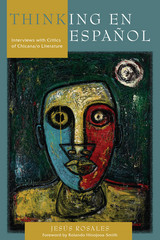 Thinking en español: Interviews with Critics of Chicana/o Literature
Jesús Rosales; Foreword by Rolando Hinojosa-Smith
University of Arizona Press, 2014 Thinking en español captures conversations with leading Chicana and Chicano literary critics. This unique book consists of interviews with founding members of Chicano criticism conducted by the author, Jesús Rosales, who, through his conversations with leaders such as Luis Leal, María Herrera-Sobek, Tey Diana Rebolledo, and Juan Rodríguez, shows the path of criticism from 1848 to the present.
The twelve critics interviewed for this project share certain characteristics. For each one, Mexico plays an essential role in his or her personal and academic background, and each is bilingual and bicultural, having received formal literary education in Spanish graduate programs. As products of the working class, each scholar here shares a sense of social consciousness and commitment that lends an urgency to their desire to promote Chicano literature and culture at the local, regional, national, and international levels. They serve as a source of inspiration and commitment for future generations of scholars of Chicano literature and leave a lasting legacy of their own.
Thinking en español legitimizes Chicana/o criticism as an established discipline, and documents the works of some of the most important critics of Chicano literature at the turn of the twentieth and into the twenty-first century. This timely book immortalizes literary historical figures and documents the trajectory of Chicano criticism.
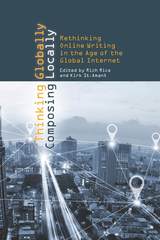 Thinking Globally, Composing Locally: Rethinking Online Writing in the Age of the Global Internet
Rich Rice
Utah State University Press, 2018 Thinking Globally, Composing Locally explores how writing and its pedagogy should adapt to the ever-expanding environment of international online communication. Communication to a global audience presents a number of new challenges; writers seeking to connect with individuals from many different cultures must rethink their concept of audience. They must also prepare to address friction that may arise from cross-cultural rhetorical situations, variation in available technology and in access between interlocutors, and disparate legal environments. The volume offers a pedagogical framework that addresses three interconnected and overarching objectives: using online media to contact audiences from other cultures to share ideas; presenting ideas in a manner that invites audiences from other cultures to recognize, understand, and convey or act upon them; and composing ideas to connect with global audiences to engage in ongoing and meaningful exchanges via online media. Chapters explore a diverse range of pedagogical techniques, including digital notebooks designed to create a space for active dialogic and multicultural inquiry, experience mapping to identify communication disruption points in international customer service, and online forums used in global distance education. Thinking Globally, Composing Locally will prove an invaluable resource for instructors seeking to address the many exigencies of online writing situations in global environments. Contributors: Suzanne Blum Malley, Katherine Bridgman, Maury Elizabeth Brown, Kaitlin Clinnin, Cynthia Davidson, Susan Delagrange, Scott Lloyd Dewitt, Amber Engelson, Kay Halasek, Lavinia Hirsu, Daniel Hocutt, Vassiliki Kourbani, Tika Lamsal, Liz Lane, Ben Lauren, J. C. Lee, Ben McCorkle, Jen Michaels, Minh-Tam Nguyen, Beau S. Pihlaja, Mª Pilar Milagros, Cynthia L. Selfe, Heather Turner, Don Unger, Josephine Walwema
 Thinking How to Live
Allan Gibbard
Harvard University Press, 2008 Philosophers have long suspected that thought and discourse about what we ought to do differ in some fundamental way from statements about what is. But the difference has proved elusive, in part because the two kinds of statement look alike. Focusing on judgments that express decisions—judgments about what is to be done, all things considered—Allan Gibbard offers a compelling argument for reconsidering, and reconfiguring, the distinctions between normative and descriptive discourse—between questions of “ought” and “is.”
Gibbard considers how our actions, and our realities, emerge from the thousands of questions and decisions we form for ourselves. The result is a book that investigates the very nature of the questions we ask ourselves when we ask how we should live, and that clarifies the concept of “ought” by understanding the patterns of normative concepts involved in beliefs and decisions.
An original and elegant work of metaethics, this book brings a new clarity and rigor to the discussion of these tangled issues, and will significantly alter the long-standing debate over “objectivity” and “factuality” in ethics.
Thinking in Henry James
Sharon Cameron
University of Chicago Press, 1989 Thinking in Henry James identifies what is genuinely strange and radical about James's concept of consciousness—first, the idea that it may not always be situated within this or that person but rather exists outside or "between," in some transpersonal place; and second, the idea that consciousness may have power over things and people outside the person who thinks. Examining these and other counterintuitive representations of consciousness, Cameron asks, "How do we make sense of these conceptions of thinking?"
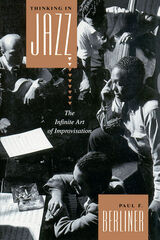 Thinking in Jazz: The Infinite Art of Improvisation
Paul F. Berliner
University of Chicago Press, 1994 A landmark in jazz studies, Thinking in Jazz reveals as never before how musicians, both individually and collectively, learn to improvise. Chronicling leading musicians from their first encounters with jazz to the development of a unique improvisatory voice, Paul Berliner documents the lifetime of preparation that lies behind the skilled improviser's every idea.
The product of more than fifteen years of immersion in the jazz world, Thinking in Jazz combines participant observation with detailed musicological analysis, the author's experience as a jazz trumpeter, interpretations of published material by scholars and performers, and, above all, original data from interviews with more than fifty professional musicians: bassists George Duvivier and Rufus Reid; drummers Max Roach, Ronald Shannon Jackson, and Akira Tana; guitarist Emily Remler; pianists Tommy Flanagan and Barry Harris; saxophonists Lou Donaldson, Lee Konitz, and James Moody; trombonist Curtis Fuller; trumpeters Doc Cheatham, Art Farmer, Wynton Marsalis, and Red Rodney; vocalists Carmen Lundy and Vea Williams; and others. Together, the interviews provide insight into the production of jazz by great artists like Betty Carter, Miles Davis, Dizzy Gillespie, Coleman Hawkins, and Charlie Parker.
Thinking in Jazz overflows with musical examples from the 1920s to the present, including original transcriptions (keyed to commercial recordings) of collective improvisations by Miles Davis's and John Coltrane's groups. These transcriptions provide additional insight into the structure and creativity of jazz improvisation and represent a remarkable resource for jazz musicians as well as students and educators.
Berliner explores the alternative ways—aural, visual, kinetic, verbal, emotional, theoretical, associative—in which these performers conceptualize their music and describes the delicate interplay of soloist and ensemble in collective improvisation. Berliner's skillful integration of data concerning musical development, the rigorous practice and thought artists devote to jazz outside of performance, and the complexities of composing in the moment leads to a new understanding of jazz improvisation as a language, an aesthetic, and a tradition. This unprecedented journey to the heart of the jazz tradition will fascinate and enlighten musicians, musicologists, and jazz fans alike.
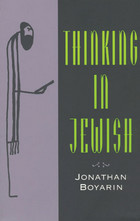 Thinking in Jewish
Jonathan Boyarin
University of Chicago Press, 1996 How does one "think" in Jewish? What does it mean to speak in English of Yiddish as Jewish, as a certain intermediary generation of immigrants and children of immigrants from Jewish Eastern Europe has done?
A fascination with this question prompted Jonathan Boyarin, one of America's most original thinkers in critical theory and Jewish ethnography, to offer the unexpected Jewish perspective on the vexed issue of identity politics presented here. Boyarin's essays explore the ways in which a Jewish—or, more particularly, Yiddish—idiom complicates the question of identity. Ranging from explorations of a Lower East Side synagogue to Fichte's and Derrida's contrasting notions of the relation between the Jews and the idea of Europe, from the Lubavitch Hasidim to accounts of self-making by Judith Butler and Charles Taylor, Thinking in Jewish will be indispensable reading for students of critical theory, cultural studies, and Jewish studies.
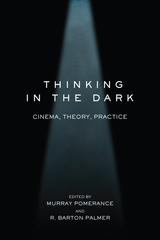 Thinking in the Dark: Cinema, Theory, Practice
Pomerance, Murray
Rutgers University Press, 2015 Today’s film scholars draw from a dizzying range of theoretical perspectives—they’re just as likely to cite philosopher Gilles Deleuze as they are to quote classic film theorist André Bazin. To students first encountering them, these theoretical lenses for viewing film can seem exhilarating, but also overwhelming.
Thinking in the Dark introduces readers to twenty-one key theorists whose work has made a great impact on film scholarship today, including Rudolf Arnheim, Sergei Eisenstein, Michel Foucault, Siegfried Kracauer, and Judith Butler. Rather than just discussing each theorist’s ideas in the abstract, the book shows how those concepts might be applied when interpreting specific films by including an analysis of both a classic film and a contemporary one. It thus demonstrates how theory can help us better appreciate films from all eras and genres: from Hugo to Vertigo, from City Lights to Sunset Blvd., and from Young Mr. Lincoln to A.I. and Wall-E.
The volume’s contributors are all experts on their chosen theorist’s work and, furthermore, are skilled at explaining that thinker’s key ideas and terms to readers who are not yet familiar with them. Thinking in the Dark is not only a valuable resource for teachers and students of film, it’s also a fun read, one that teaches us all how to view familiar films through new eyes.
Theorists examined in this volume are: Rudolf Arnheim, Béla Balázs, Roland Barthes, André Bazin, Walter Benjamin, Judith Butler, Stanley Cavell, Michel Chion, Gilles Deleuze, Jean Douchet, Sergei Eisenstein, Jean Epstein, Michel Foucault, Siegfried Kracauer, Jacques Lacan, Vachel Lindsay, Christian Metz, Hugo Münsterberg, V. F. Perkins, Jacques Rancière, and Jean Rouch.
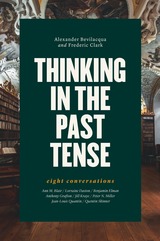 Thinking in the Past Tense: Eight Conversations
Alexander Bevilacqua and Frederic Clark
University of Chicago Press, 2019 If the vibrancy on display in Thinking in the Past Tense is any indication, the study of intellectual history is enjoying an unusually fertile period in both Europe and North America. This collection of conversations with leading scholars brims with insights from such diverse fields as the history of science, the reception of classical antiquity, book history, global philology, and the study of material culture. The eight practitioners interviewed here specialize in the study of the early modern period (c. 1400–1800), for the last forty years a crucial laboratory for testing new methods in intellectual history. The lively conversations don’t simply reveal these scholars’ depth and breadth of thought; they also disclose the kind of trade secrets that historians rarely elucidate in print. Thinking in the Past Tense offers students and professionals alike a rare tactile understanding of the practice of intellectual history. Here is a collectively drawn portrait of the historian’s craft today.
 Thinking in the Ruins: Wittgenstein and Santayana on Contingency
Michael P. Hodges
Vanderbilt University Press, 2000 While Ludwig Wittgenstein (1889-1951) and George Santayana (1863-1952) may never have met or even have studied one another's work, they experienced similar cultural conditions and their thinking took similar shapes. Yet, until now, their respective bodies of work have been examined separately and in isolation from one another.
Santayana is often regarded as an aesthetician and metaphysician, but Wittgenstein's work is usually seen as antithetical to the philosophical approaches favored by Santayana. In this insightful new study, Michael Hodges and John Lachs argue that behind the striking differences in philosophical style and vocabulary there is a surprising agreement in position. The similarities have largely gone unnoticed because of their divergent styles, different metaphilosophies, and separate spheres of influence. Hodges and Lachs show that Santayana's and Wittgenstein's works express their philosophical responses to contingency. Surprisingly, both thinkers turn to the integrity of human practices to establish a viable philosophical understanding of the human condition.
Both of these important twentieth-century philosophers formed their mature views at a time when the comfortable certainties of Western civilization were crumbling all around them. What they say is similar at least in part because they wished to resist the spread of ruin by relying on the calm sanity of our linguistic and other practices. According to both, it is not living human knowledge but a mistaken philosophical tradition that demands foundations and thus creates intellectual homelessness and displacement. Both thought that, to get our house in order, we have to rethink our social, religious, philosophical, and moral practices outside the context of the search for certainty. This insight and the projects that flowed from it define their philosophical kinship.
Thinking in the Ruins will enhance our understanding of these monumental thinkers' intellectual accomplishments and show how each influenced subsequent American philosophers. The book also serves as a call to philosophers to look beyond traditional classifications to the substance of philosophical thought.
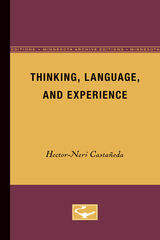 Thinking, Language, and Experience
Hector-Neri Castañeda
University of Minnesota Press, 1989
Thinking, Language, and Experience was first published in 1989.Hector-Neri Castañeda’s intricate and provocative essays have been widely influential, especially his work in epistemology and ethics, and his theory on the relation of thought to action. The fourteen essays in Thinking, Language, and Experience -- half of them written expressly for this volume -- demonstrate the breadth and richness of his recent work on the unitary structure of human experience.A comprehensive, unified study of phenomena at the intersection between experience, thinking, language, and reality, this book focuses on singular reference -- that is, reference to individuals insofar as they are thought of as individuals: indicators, quasi-indicators, proper names, singular descriptions. Castañeda establishes a large number of new facts -- linguistic, semantic, psychological, and sociological -- about the workings of language in human experience, and from them develops a network of new theories, all grounded in his comprehensive Guise Theory.These theories offer a systematic account for: the structure of human experience and the world at large; the mental powers required to think of the world and to undergo experiences; self-consciousness; the language for thinking of other minds; perception and the interaction between indexical reference and perceptual fields; and the role of subjectivity in perception and intentional action.
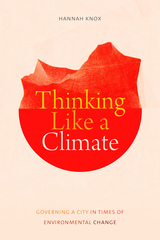 Thinking Like a Climate: Governing a City in Times of Environmental Change
Hannah Knox
Duke University Press, 2020 In Thinking Like a Climate Hannah Knox confronts the challenges that climate change poses to knowledge production and modern politics. Drawing on ethnographic fieldwork among policy makers, politicians, activists, scholars, and the public in Manchester, England—birthplace of the Industrial Revolution—Knox explores the city's strategies for understanding and responding to deteriorating environmental conditions. Climate science, Knox argues, frames climate change as a very particular kind of social problem that confronts the limits of administrative and bureaucratic techniques of knowing people, places, and things. Exceeding these limits requires forging new modes of relating to climate in ways that reimagine the social in climatological terms. Knox contends that the day-to-day work of crafting and implementing climate policy and translating climate knowledge into the work of governance demonstrates that local responses to climate change can be scaled up to effect change on a global scale.
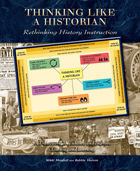 Thinking Like a Historian: Rethinking History Instruction
Nikki Mandell
Wisconsin Historical Society Press, 2008 Thinking Like a Historian: Rethinking History Instruction by Nikki Mandell and Bobbie Malone is a teaching and learning framework that explains the essential elements of history and provides "how to" examples for building historical literacy in classrooms at all grade levels. With practical examples, engaging and effective lessons, and classroom activities that tie to essential questions, Thinking Like a Historian provides a framework to enhance and improve teaching and learning history. We invite you to use Thinking Like a Historian to bring history into your classroom or to re-energize your teaching of this crucial discipline in new ways.
The contributors to Thinking Like a Historian are experienced historians and educators from elementary through university levels. This philosophical and pedagogical guide to history as a discipline uses published standards of the American Historical Association, the Organization of American Historians, the National Council for History Education, the National History Standards and state standards for Wisconsin and California.
 Thinking Like a Lawyer: A New Introduction to Legal Reasoning
Frederick Schauer
Harvard University Press, 2009 This primer on legal reasoning is aimed at law students and upper-level undergraduates. But it is also an original exposition of basic legal concepts that scholars and lawyers will find stimulating. It covers such topics as rules, precedent, authority, analogical reasoning, the common law, statutory interpretation, legal realism, judicial opinions, legal facts, and burden of proof.
In addressing the question whether legal reasoning is distinctive, Frederick Schauer emphasizes the formality and rule-dependence of law. When taking the words of a statute seriously, when following a rule even when it does not produce the best result, when treating the fact of a past decision as a reason for making the same decision again, or when relying on authoritative sources, the law embodies values other than simply that of making the best decision for the particular occasion or dispute. In thus pursuing goals of stability, predictability, and constraint on the idiosyncrasies of individual decision-makers, the law employs forms of reasoning that may not be unique to it but are far more dominant in legal decision-making than elsewhere.
Schauer’s analysis of what makes legal reasoning special will be a valuable guide for students while also presenting a challenge to a wide range of current academic theories.
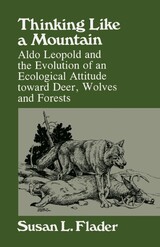 Thinking Like a Mountain: Aldo Leopold and the Evolution of an Ecological Attitude toward Deer, Wolves, and Forests
Susan L. Flader
University of Wisconsin Press, 1994 When initially published more than twenty years ago, Thinking Like a Mountain was the first of a handful of efforts to capture the work and thought of America's most significant environmental thinker, Aldo Leopold. This new edition of Susan Flader's masterful account of Leopold's philosophical journey, including a new preface reviewing recent Leopold scholarship, makes this classic case study available again and brings much-deserved attention to the continuing influence and importance of Leopold today.
Thinking Like a Mountain unfolds with Flader's close analysis of Leopold's essay of the same title, which explores issues of predation by studying the interrelationships between deer, wolves, and forests. Flader shows how his approach to wildlife management and species preservation evolved from his experiences restoring the deer population in the Southwestern United States, his study of the German system of forest and wildlife management, and his efforts to combat the overpopulation of deer in Wisconsin. His own intellectual development parallels the formation of the conservation movement, reflecting his struggle to understand the relationship between the land and its human and animal inhabitants.
Drawing from the entire corpus of Leopold's works, including published and unpublished writing, correspondence, field notes, and journals, Flader places Leopold in his historical context. In addition, a biographical sketch draws on personal interviews with family, friends, and colleagues to illuminate his many roles as scientist, philosopher, citizen, policy maker, and teacher. Flader's insight and profound appreciation of the issues make Thinking Like a Mountain a standard source for readers interested in Leopold scholarship and the development of ecology and conservation in the twentieth century.
Thinking Like a Mountain: An Ecological Perspective on Earth
R. Edward Grumbine
Island Press, 2012 In Thinking Like a Mountain, we have excerpted a clear and inviting introduction to the science of conservation biology from Ed Grumbine's previous book, Ghost Bears. Grumbine offers a succinct and evocative description of why we should all care about biodiversity, protected lands, connectivity, and extinction rates, and the advantages to be gained by attempting to 'think like a mountain', as so eloquently phrased by Aldo Leopold.
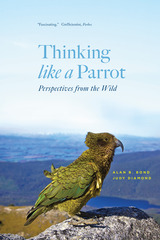 Thinking like a Parrot: Perspectives from the Wild
Alan B. Bond and Judy Diamond
University of Chicago Press, 2019 From two experts on wild parrot cognition, a close look at the intelligence, social behavior, and conservation of these widely threatened birds.
People form enduring emotional bonds with other animal species, such as dogs, cats, and horses. For the most part, these are domesticated animals, with one notable exception: many people form close and supportive relationships with parrots, even though these amusing and curious birds remain thoroughly wild creatures. What enables this unique group of animals to form social bonds with people, and what does this mean for their survival?
In Thinking like a Parrot, Alan B. Bond and Judy Diamond look beyond much of the standard work on captive parrots to the mischievous, inquisitive, and astonishingly vocal parrots of the wild. Focusing on the psychology and ecology of wild parrots, Bond and Diamond document their distinctive social behavior, sophisticated cognition, and extraordinary vocal abilities. Also included are short vignettes—field notes on the natural history and behavior of both rare and widely distributed species, from the neotropical crimson-fronted parakeet to New Zealand’s flightless, ground-dwelling kākāpō. This composite approach makes clear that the behavior of captive parrots is grounded in the birds’ wild ecology and evolution, revealing that parrots’ ability to bond with people is an evolutionary accident, a by-product of the intense sociality and flexible behavior that characterize their lives.
Despite their adaptability and intelligence, however, nearly all large parrot species are rare, threatened, or endangered. To successfully manage and restore these wild populations, Bond and Diamond argue, we must develop a fuller understanding of their biology and the complex set of ecological and behavioral traits that has led to their vulnerability. Spanning the global distribution of parrot species, Thinking like a Parrot is rich with surprising insights into parrot intelligence, flexibility, and—even in the face of threats—resilience.
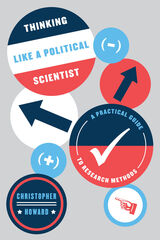 Thinking Like a Political Scientist: A Practical Guide to Research Methods
Christopher Howard
University of Chicago Press, 2017 Each year, tens of thousands of students who are interested in politics go through a rite of passage: they take a course in research methods. Many find the subject to be boring or confusing, and with good reason. Most of the standard books on research methods fail to highlight the most important concepts and questions. Instead, they brim with dry technical definitions and focus heavily on statistical analysis, slighting other valuable methods. This approach not only dulls potential enjoyment of the course, but prevents students from mastering the skills they need to engage more directly and meaningfully with a wide variety of research.
With wit and practical wisdom, Christopher Howard draws on more than a decade of experience teaching research methods to transform a typically dreary subject and teach budding political scientists the critical skills they need to read published research more effectively and produce better research of their own. The first part of the book is devoted to asking three fundamental questions in political science: What happened? Why? Who cares? In the second section, Howard demonstrates how to answer these questions by choosing an appropriate research design, selecting cases, and working with numbers and written documents as evidence. Drawing on examples from American and comparative politics, international relations, and public policy, Thinking Like a Political Scientist highlights the most common challenges that political scientists routinely face, and each chapter concludes with exercises so that students can practice dealing with those challenges.
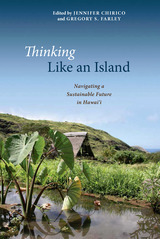 Thinking Like an Island: Navigating a Sustainable Future in Hawai`i
Edited by Jennifer Chirico and Gregory S. Farley
University of Hawaii Press, 2015 Hawai‘i is a rare and special place, in which beauty and isolation combine to form a vision of paradise. That isolation, though, comes at a price: resources in modern-day Hawai‘i are strained and expensive, and current economic models dictate that the Hawaiian Islands are reliant upon imported food, fuels, and other materials. Yet the islands supported a historic Hawaiian population of a million people or more. This was possible because Hawaiians, prior to European contact, had learned the ecological limits of their islands and how to live sustainably within them. Today, Hawai‘i is experiencing a surge of new strategies that make living in the islands more ecologically, economically, and socially resilient. A vibrant native agriculture movement helps feed Hawaiians with traditional foods, and employs local farmers using traditional methods; efforts at green homebuilding help provide healthy, comfortable housing that exists in better harmony with the environment; efforts to recycle wastewater help reduce stress on fragile freshwater resources; school gardens help feed families and reconnect them with local food and farming. At the same time, many of the people who have developed these strategies find that their processes reflect, and in some cases draw from, the lessons learned by Hawaiians over thousands of years. This collection of case studies is a road map to help other isolated communities, island and mainland, navigate their own paths to sustainability, and establishes Hawai‘i as a model from which other communities can draw inspiration, practical advice, and hope for the future.
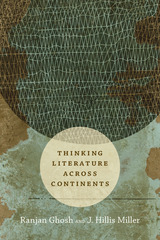 Thinking Literature across Continents
Ranjan Ghosh and J. Hillis Miller
Duke University Press, 2016 Thinking Literature across Continents finds Ranjan Ghosh and J. Hillis Miller—two thinkers from different continents, cultures, training, and critical perspectives—debating and reflecting upon what literature is and why it matters. Ghosh and Miller do not attempt to formulate a joint theory of literature; rather, they allow their different backgrounds and lively disagreements to stimulate generative dialogue on poetry, world literature, pedagogy, and the ethics of literature. Addressing a varied literary context ranging from Victorian literature, Chinese literary criticism and philosophy, and continental philosophy to Sanskrit poetics and modern European literature, Ghosh offers a transnational theory of literature while Miller emphasizes the need to account for what a text says and how it says it. Thinking Literature across Continents highlights two minds continually discovering new paths of communication and two literary and cultural traditions intersecting in productive and compelling ways.
The Thinking of the Master: Bataille between Hegel and Surrealism
Peter Burger
Northwestern University Press, 2002 Mastery of many sorts emerges in new configurations in Peter Bürger's The Thinking of the Master as an idea developed by Hegel in the master/slave dialectic in his Phenomenology of Spirit as a quality embodied in the work of certain twentieth-century maître-penseurs, or "master thinkers"; and, not least, in the expertise of Bürger himself as he negotiates and clarified a critical intersection of contemporary French and German thought. The author of the classic Theory of the Avant-Garde, Bürger here considers what several seminal thinkers—among them Bataille, Barthes, Foucault, and Derrida—owe to Hegel's dialectic and measures their accomplishments against the avant-garde project. Succinct, witty, and instructive, each of his essays stands alone as a valuable exposition of a significant strain of postmodern thought.
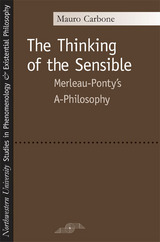 The Thinking of the Sensible: Merleau-Ponty's A-Philosophy
Mauro Carbone
Northwestern University Press, 2004 In this first English publication of a well-known and widely respected Italian scholar, readers will encounter the preeminent interpreter of the works of Maurice Merleau-Ponty engaged in a dialogue of critical concern to contemporary philosophy. In subtle and sensitive language eminently suited to the style and substance of Merleau-Ponty's own writings, Mauro Carbone fashions four essays around a central theme-the relations of the sensible and the intelligible, and of philosophy and non-philosophy-that occupied Merleau-Ponty in his later work.
An original and innovative interpretation of the ontology of Merleau-Ponty--and themselves a significant contribution to the field of Continental thought--these essays constitute a sustained exploration of what Merleau-Ponty detected, and greeted, as a "mutation within the relations of man and Being," which would provide him with the basis for a new idea of philosophy or "a-philosophy." In lucid, often elegant terms, Carbone analyzes key elements of Merleau-Ponty's thought in relation to Proust's Recherche, Hegel's Phenomenology of Spirit, the new biology of Von Uexküll, Rimbaud's Lettre du voyant, and Heidegger's conception of "letting-be." His work clearly demonstrates the vitality of Merleau-Ponty's late revolutionary philosophy by following its most salient, previously unexplored paths. This is essential reading for any scholar with an interest in Merleau-Ponty, in the questions of embodiment, temporality and Nature, or in the possibility of philosophy today.
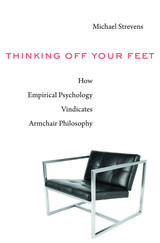 Thinking Off Your Feet: How Empirical Psychology Vindicates Armchair Philosophy
Michael Strevens
Harvard University Press, 2019 Many philosophers believe they can gain knowledge about the world from the comfort of their armchairs, simply by reflecting on the nature of things. But how can the mind arrive at substantive knowledge of the world without seeking its input? Michael Strevens proposes an original defense of the armchair pursuit of philosophical knowledge, focusing on “the method of cases,” in which judgments about category membership—Does this count as causation? Does that count as the right action to take?—are used to test philosophical hypotheses about such matters as causality, moral responsibility, and beauty.
Strevens argues that the method of cases is capable of producing reliable, substantial knowledge. His strategy is to compare concepts of philosophical things to concepts of natural kinds, such as water. Philosophical concepts, like natural kind concepts, do not contain the answers to philosophers’ questions; armchair philosophy therefore cannot be conceptual analysis. But just as natural kind concepts provide a viable starting point for exploring the nature of the material world, so philosophical concepts are capable of launching and sustaining fruitful inquiry into philosophical matters, using the method of cases. Agonizing about unusual “edge cases,” Strevens shows, can play a leading role in such discoveries.
Thinking Off Your Feet seeks to reshape current debates about the nature of philosophical thinking and the methodological implications of experimental philosophy, to make significant contributions to the cognitive science of concepts, and to restore philosophy to its traditional position as an essential part of the human quest for knowledge.
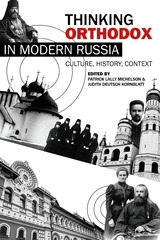 Thinking Orthodox in Modern Russia: Culture, History, Context
Edited by Patrick Lally Michelson and Judith Deutsch Kornblatt
University of Wisconsin Press, 2014 Thinking Orthodox in Modern Russia illuminates the significant role of Russian Orthodox thought in shaping the discourse of educated society during the imperial and early Soviet periods. Bringing together an array of scholars, this book demonstrates that Orthodox reflections on spiritual, philosophical, and aesthetic issues of the day informed much of Russia’s intellectual and cultural climate.
Volume editors Patrick Lally Michelson and Judith Deutsch Kornblatt provide a historical overview of Russian Orthodox thought and a critical essay on the current state of scholarship about religious thought in modern Russia. The contributors explore a wide range of topics, including Orthodox claims to a unique religious Enlightenment, contests over authority within the Russian Church, tensions between faith and reason in academic Orthodoxy, the relationship between sacraments and the self, the religious foundations of philosophical and legal categories, and the effect of Orthodox categories in the formation of Russian literature.
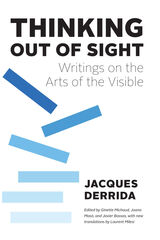 Thinking Out of Sight: Writings on the Arts of the Visible
Jacques Derrida
University of Chicago Press, 2021 Jacques Derrida remains a leading voice of philosophy, his works still resonating today—and for more than three decades, one of the main sites of Derridean deconstruction has been the arts. Collecting nineteen texts spanning from 1979 to 2004, Thinking out of Sight brings to light Derrida’s most inventive ideas about the making of visual artworks.
The book is divided into three sections. The first demonstrates Derrida’s preoccupation with visibility, image, and space. The second contains interviews and collaborations with artists on topics ranging from the politics of color to the components of painting. Finally, the book delves into Derrida’s writings on photography, video, cinema, and theater, ending with a text published just before his death about his complex relationship to his own image. With many texts appearing for the first time in English, Thinking out of Sight helps us better understand the critique of representation and visibility throughout Derrida’s work, and, most importantly, to assess the significance of his insights about art and its commentary.
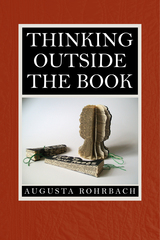 Thinking Outside the Book
Augusta Rohrbach
University of Massachusetts Press, 2014 In Thinking Outside the Book, Augusta Rohrbach works through the increasing convergences between digital humanities and literary studies to explore the meaning and primacy of the book as a literary, material, and cultural artifact. Rohrbach assembles a rather unlikely cohort of nineteenth-century women writers—Jane Johnston Schoolcraft, Sojourner Truth, Hannah Crafts, Augusta Evans, and Mary Chesnut—to consider the publishing culture of their period from the perspective of our current digital age, bringing together scholarly concepts from both print culture and new media studies. In nineteenth-century America, women from a variety of racial and class affiliations were bombarding the print market with their literary productions, taking advantage of burgeoning rates of literacy and advances in publishing technology. Their work challenged prevailing modes of authorship and continues to do so today. Each chapter of Thinking Outside the Book positions a focal figure as both paradigmatic and problematic within the context of key terms that define the study of the book. In lieu of terms such as literacy, authorship, publication, edition, and editor, Rohrbach develops an alternate typology that includes mediation, memory, history, testimony, and loss. Recognizing that the field spans radio, cinema, television, and the Internet, she draws comparisons to the present day, when Web 2.0 allows writers from varying backgrounds and positions to seek out readers without “gatekeepers” limiting their exposure. More than a literary history, this book takes up theories of recovery, literacy, authorship, narrative, the book, and new media in connection with race, gender, class, and region.
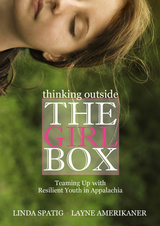 Thinking Outside the Girl Box: Teaming Up with Resilient Youth in Appalachia
Linda Spatig
Ohio University Press, 2014 Thinking Outside the Girl Box is a true story about a remarkable youth development program in rural West Virginia. Based on years of research with adolescent girls—and adults who devoted their lives to working with them—Thinking Outside the Girl Box reveals what is possible when young people are challenged to build on their strengths, speak and be heard, and engage critically with their world. Based on twelve years of field research, the book traces the life of the Lincoln County Girls’ Resiliency Program (GRP), a grassroots, community nonprofit aimed at helping girls identify strengths, become active decision makers, and advocate for social change. In the late 1990s and early 2000s, the GRP flourished. Its accomplishments were remarkable: girls recorded their own CDs, published poetry, conducted action research, opened a coffeehouse, performed an original play, and held political rallies at West Virginia’s State Capitol. The organization won national awards, and funding flowed in. Today, in 2013, the programming and organization are virtually nonexistent. Thinking Outside the Girl Box raises pointed questions about how to define effectiveness and success in community-based programs and provides practical insights for anyone working with youth. Written in an accessible, engaging style and drawing on collaborative ethnographic research that the girls themselves helped conduct, the book tells the story of an innovative program determined to challenge the small, disempowering “boxes” girls and women are so often expected to live in.
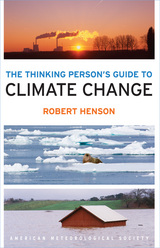 The Thinking Person's Guide to Climate Change
Robert Henson
American Meteorological Society, 2014 Everybody can be a thinking person when it comes to climate change, and this book is a perfect roadmap. Start a web search for “climate change” and the first three suggestions are “facts,” “news,” and “hoax.” The Thinking Person's Guide to Climate Change is rooted in the first, up to date on the second, and anything but the last. Produced by one of the most venerable atmospheric science organizations, it is a must-read for anyone looking for the full story on climate change.
Using global research and written with nonscientists in mind, the Guide breaks down the issues into straightforward categories: “Symptoms” covers signs such as melting ice and extreme weather, while “Science” lays out what we know and how we figured it out. “Debates” tackles the controversy and politics, while “Solutions” and “Actions” discuss what we can do as individuals and communities to create the best possible future. Full-color illustrations offer explanations of everything from how the greenhouse effect traps heat to which activities in everyday life emit the most carbon. Special-feature boxes zoom in on locations across the globe already experiencing the effects of a shifting climate.
The Thinking Person's Guide to Climate Change combines years of data with recent research, including conclusions from the Fifth Assessment Report of the Intergovernmental Panel on Climate Change. This reference provides the most comprehensive, yet accessible, overview of where climate science stands today, acknowledging controversies but standing strong in its stance that the climate is changing— and something needs to be done.
The Thinking Person's Guide to Climate Change is a full update and revision of Robert Henson’s The Rough Guide to Climate Change and is now published through the American Meteorological Society, with distribution through University of Chicago Press.
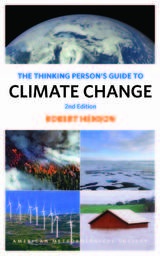 The Thinking Person's Guide to Climate Change: Second Edition
Robert Henson
American Meteorological Society, 2019 Everybody can be a thinking person when it comes to climate change, and this book is a perfect roadmap. Start a web search for “climate change” and the first three suggestions are “facts,” “news,” and “hoax.” The Thinking Person's Guide to Climate Change is rooted in the first, up to date on the second, and anything but the last. Produced by one of the most venerable atmospheric science organizations, it is a must-read for anyone looking for the full story on climate change.
Using global research and written with nonscientists in mind, the Guide breaks down the issues into straightforward categories: “Symptoms” covers signs such as melting ice and extreme weather, while “Science” lays out what we know and how we figured it out. “Debates” tackles the controversy and politics, while “Solutions” and “Actions” discuss what we can do as individuals and communities to create the best possible future. Full-color illustrations offer explanations of everything from how the greenhouse effect traps heat to which activities in everyday life emit the most carbon. Special-feature boxes zoom in on locations across the globe already experiencing the effects of a shifting climate.
The new edition of The Thinking Person's Guide to Climate Change has been thoroughly updated, including content on new global record highs, new research across the spectrum, and the Paris Agreement to cut greenhouse gases. This reference provides the most comprehensive, yet accessible, overview of where climate science stands today, acknowledging controversies but standing strong in its stance that the climate is changing—and something needs to be done.
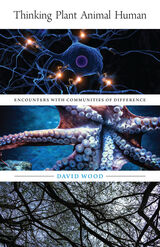 Thinking Plant Animal Human: Encounters with Communities of Difference
David Wood
University of Minnesota Press, 2020 Collected essays by a leading philosopher situating the question of the animal in the broader context of a relational ontology
There is a revolution under way in our thinking about animals and, indeed, life in general, particularly in the West. The very words man, animal, and life have turned into flimsy conceptual husks—impediments to thinking about the issues in which they are embroiled. David Wood was a founding member of the early 1970s Oxford Group of philosophers promoting animal rights; he also directed Ecology Action (UK). Thinking Plant Animal Human is the first collection of this major philosopher’s influential essays on “animals,” bringing together his many discussions of nonhuman life, including the classic “Thinking with Cats.” Exploring our connections with cats, goats, and sand crabs, Thinking Plant Animal Human introduces the idea of “kinnibalism” (the eating of mammals is eating our own kin), reflects on the idea of homo sapiens, and explores the place of animals both in art and in children’s stories. Finally, and with a special focus on trees, the book delves into remarkable contemporary efforts to rescue plants from philosophical neglect and to rethink and reevaluate their status. Repeatedly bubbling to the surface is the remarkable strangeness of other forms of life, a strangeness that extends to the human. Wood shows that the best way of resisting simplistic classification is to attend to our manifold relationships with other living beings. It is not anthropocentric to focus on such relationships; they cast light in complex ways on the living communities of which we are part, and exploring them recoils profoundly on our understanding of ourselves.
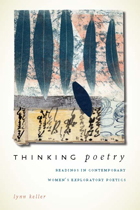 Thinking Poetry: Readings in Contemporary Women’s Exploratory Poetics
Lynn Keller
University of Iowa Press, 2010 As the twentieth century drew to a close, experimentalism in American poetry was most commonly identified with Language writing. At the same time, however, a number of poets, many of them women, were developing their own alternative forms of experimentalism, creating “uncommon languages” often indebted to Language writing but distinct from it. With impressive intellectual engagement and nuanced presentation, Thinking Poetry provides a meticulous and provocative analysis of the ways in which Alice Fulton, Myung Mi Kim, Joan Retallack, Cole Swensen, Rosmarie Waldrop, Susan Wheeler, and C. D. Wright explored varied compositional strategies and created their own innovative works. In doing so, Lynn Keller resourcefully models a range of reading strategies that will assist others in analyzing the complex epistemology and craft of recent “exploratory” writing. The seven women whose work is discussed here demonstrate widely differing ways of using poetry to, as Swensen puts it, “stretch the boundaries of the sayable.” Thinking Poetry examines approaches to women’s poetic exploration, ranging from radically open, thoroughly disjunctive writing to feminist experimentation within relatively conventional free verse forms; from texts testing the resources of visual elements and page space to those in which multilingualism or digital technology provide arenas for innovation; from revitalized forms of ekphrasis to fresh approaches to pop culture. Keller illuminates as well a transitional era in U.S. poetry that presaged current developments that are often seen as combining the poetics of personal lyric and Language writing. Thinking Poetry challenges reductive notions of such a synthesis as it makes clear that the groundwork for current poetic trends was laid by poets who, in a far more polarized climate, pursued their own, often distinctly feminist, visions of necessary innovation.
 Thinking Prayer: Theology and Spirituality amid the Crises of Modernity
Andrew Prevot
University of Notre Dame Press, 2015 In Thinking Prayer, Andrew Prevot presents a new, integrated approach to Christian theology and spirituality, focusing on the centrality of prayer to theology in the modern age. Prevot’s clear and in-depth analysis of notable philosophical and theological thinkers’ responses to modernity through the theme of prayer charts a new spiritual path through the crises of modernity.
Prevot offers critical interpretations of Martin Heidegger, Hans Urs von Balthasar, Jean-Louis Chrétien, Johann Baptist Metz, Ignacio Ellacuría, and James Cone, among others, integrating their insights into a constructive synthesis. He explains how doxological and contemplative forms of prayer help one avoid dangers associated with metaphysics, including nihilism, conceptual idolatry, and the concealment of difference. He considers the powerful impact that the prayers of oppressed peoples have on their efforts to resist socioeconomic and racialized violence. The book upholds modern aspirations to critical freedom, while arguing that such freedom can best be preserved and deepened through prayerful interactions with the infinite freedom of God. Throughout, the book uncovers the contemplative dimensions of postmodern phenomenology and liberation theology and suggests how prayer shapes liberative ways of thinking (theology) and living (spirituality) that are crucial for the future of this crisis-ridden world.
"Andrew Prevot presents a range of theological and philosophical interlocutors with a depth of scholarly knowledge that makes the reading of these pages an engaging tour of the last eighty years of theological and philosophical thought. There is insightful analysis of the text's announced focus on prayer, a theme that is usually addressed in popular books on practical theology but rarely in a sophisticated monograph like the present work. The impressive achievement of Thinking Prayer is the sweeping range of its scholarship, presented in interpretive sophistication and communicated in flourishing style." —John Thiel, author of Icons of Hope: The "Last Things" in Catholic Imagination
"Drawing on an impressive range of theological and philosophical sources, Andrew Prevot argues for the indispensability of prayer to both Christian theology and social praxis. He insists that, more specifically, Christian theology and social praxis must be rooted in the 'spirituality that emerges from the prayerful struggles of many Christian communities of the poor and oppressed.' Such a preferential option for the poor itself demands a reintegration of theology and spirituality. The sustained intellectual rigor, spiritual depth, and prophetic courage of this scholarship will no doubt establish Prevot as a leading voice among a new generation of Christian theologians." —Roberto Goizueta, Margaret O'Brien Flatley Professor of Catholic Theology, Boston College
"This ambitious and ultimately successful book will fundamentally change how theologians understand prayer. Prevot handles the most complex philosophical and theological figures with skill, from Heidegger to Balthasar, from Cone to Marion. Writing about prayer tends to be fluffy or dismissive, but Prevot manages to be both rigorous and graceful. As the title advertises, this book brings together thought and prayer—lucidly, powerfully, and elegantly. It is a must-read for all theologians thinking and praying today." —Vincent Lloyd, Syracuse University
“With clarity, breadth, and depth, Andrew Prevot reintroduces the subject of prayer within theology as the quest for a synthesis of prayer with thought. It is unusual for a scholar to dare—and to have the intellectual patience needed—to bring Hans Urs von Balthasar on doxology and his postmetaphysical interlocutors into nuanced engagement with German political theology, with Latin American liberation theology, but above all and to the greatest effect, with the heritage of the narratives and music of African American slaves as honored and interrogated by black theologian James Cone. Prevot proposes that prayer, thought in terms of doxology and liberation, can provide an effective protest against secularity and violence. This is an unusually good book that should be widely read and discussed.” —Bradford Hinze, Karl Rahner, S.J., Professor of Theology, Fordham University
"Thinking Prayer is a passionate manifesto. Through subtle, discriminating readings of an impressive range of contemporary philosophers and theologians, Andrew Prevot argues that the practice of Christian prayer can point us beyond the intellectual and moral crises of modernity. At the same time, he moves forward Christian theological discussion with a new exuberance and rigor." —Philip Endean, S.J., author of Karl Rahner and Ignatian Spirituality
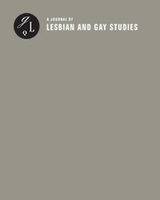 Thinking Sexuality Transnationally, Volume 5
George and Elizabeth A. Povinelli
Duke University Press Thinking Sexuality Transnationally examines the emergence of new forms of sexuality and desire from a global perspective. Legal, pop-culture, and academic approaches to these new forms are considered from both national—China, Brazil, Indonesia, and Thailand—and transnational—Puerto Rico, Guatemala, and the United States—standpoints. The contributors approach their subjects with the corollary understanding that these new forms of sexuality and desire arise in borderlands, and what constitutes a borderland has been redefined with the onset of mass media and communication abilities. Included in this collection are a study of the construction of male gay identities in China; a consideration of sexual pedagogy, the state, and the “new Brazilian homosexuality”; the format of amnesty applications submitted by lesbians in Guatemala; the roles of gender and sexuality in Taiwanese opera; and a review of transgender literature and language. One of the first comprehensive inquiries into the effects of globalization on sexuality and desire, Thinking Sexuality Transnationally brings together essayists from several disciplines to look at how sexuality and global movement are involved and evolving. Contributors. Tom Boellstorff, George Chauncey, Peter Jackson, Don Kulick, Patrick Larvie, Heather McClure, Frances Negron-Munter, Elizabeth A. Povinelli, Lisa Rofel, Teri Silvio
 Thinking Small: The United States and the Lure of Community Development
Daniel Immerwahr
Harvard University Press, 2014 Winner of the Merle Curti Award in Intellectual History, Organization of American Historians
Co-Winner of the Society for U.S. Intellectual History Book Award
Thinking Small tells the story of how the United States sought to rescue the world from poverty through small-scale, community-based approaches. And it also sounds a warning: such strategies, now again in vogue, have been tried before, with often disastrous consequences.
“Unfortunately, far from eliminating deprivation and attacking the social status quo, bottom-up community development projects often reinforced them…This is a history with real stakes. If that prior campaign’s record is as checkered as Thinking Small argues, then its intellectual descendants must do some serious rethinking… How might those in twenty-first-century development and anti-poverty work forge a better path? They can start by reading Thinking Small.”
—Merlin Chowkwanyun, Boston Review
“As the historian Daniel Immerwahr demonstrates brilliantly in Thinking Small, the history of development has seen constant experimentation with community-based and participatory approaches to economic and social improvement…Immerwahr’s account of these failures should give pause to those who insist that going small is always better than going big.”
—Jamie Martin, The Nation
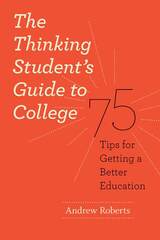 The Thinking Student's Guide to College: 75 Tips for Getting a Better Education
Andrew Roberts
University of Chicago Press, 2010 Each fall, thousands of eager freshmen descend on college and university campuses expecting the best education imaginable: inspiring classes taught by top-ranked professors, academic advisors who will guide them to a prestigious job or graduate school, and an environment where learning flourishes outside the classroom as much as it does in lecture halls. Unfortunately, most of these freshmen soon learn that academic life is not what they imagined. Classes are taught by overworked graduate students and adjuncts rather than seasoned faculty members, undergrads receive minimal attention from advisors or administrators, and potentially valuable campus resources remain outside their grasp. Andrew Roberts’ Thinking Student’s Guide to College helps students take charge of their university experience by providing a blueprint they can follow to achieve their educational goals—whether at public or private schools, large research universities or small liberal arts colleges. An inside look penned by a professor at Northwestern University, this book offers concrete tips on choosing a college, selecting classes, deciding on a major, interacting with faculty, and applying to graduate school. Here, Roberts exposes the secrets of the ivory tower to reveal what motivates professors, where to find loopholes in university bureaucracy, and most importantly, how to get a personalized education. Based on interviews with faculty and cutting-edge educational research, The Thinking Student’s Guide to College is a necessary handbook for students striving to excel academically, creatively, and personally during their undergraduate years.
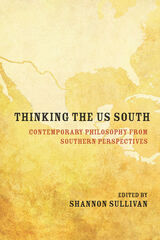 Thinking the US South: Contemporary Philosophy from Southern Perspectives
Edited by Shannon Sullivan
Northwestern University Press, 2021 Knowledge emerges from contexts, which are shaped by people’s experiences. The varied essays in Thinking the US South: Contemporary Philosophy from Southern Perspectives demonstrate that Southern identities, borders, and practices play an important but unacknowledged role in ethical, political, emotional, and global issues connected to knowledge production. Not merely one geographical region among others, the US South is sometimes a fantasy and other times a nightmare, but it is always a prominent component of the American national imaginary. In connection with the Global North and Global South, the US South provides a valuable perspective from which to explore race, class, gender, and other inter- and intra-American differences. The result is a fresh look at how identity is constituted; the role of place, ancestors, and belonging in identity formation; the impact of regional differences on what counts as political resistance; the ways that affect and emotional labor circulate; practices of boundary policing, deportation, and mourning; issues of disability and slowness; racial and other forms of suffering; and above all, the question of whether and how doing philosophy changes when done from Southern standpoints. Examining racist tropes, Indigenous land claims, Black Southern philosophical perspectives, migrant labor, and more, this incisive anthology makes clear that roots matter.
 Thinking through Art: Aesthetic Agency and Global Modernity, Volume 25
Daniel T. O’Hara and Alan Singer, eds.
Duke University Press In the eighteenth century the category of the aesthetic sought to bridge the gap between the prevalent dualities of Cartesian thought: art and science, history and science, prejudice and truth. This special issue of boundary 2 addresses current debates about the status of art in the context of global modernity. The range of arguments represented here cover a broad historical scope—from Cartesianism to present-day global modernity—of cultural discourse on the aesthetic to bring a focus to contemporary discussions of the corollary concepts of beauty, virtue, taste, and truth. These essays present a rich and provocative account of the place of the aesthetic in late-twentieth-century culture. Included in this volume are considerations of the relation between theories of art and the avant-garde; art’s relation to cognition; the aesthetic as history; the aesthetic as a unique access to modernity; and its impact on problems of identity formation, ideology, and resistances to the institutional powers inherent in dominant social formations. Contributors. Charles Altieri, Peter Burger, David Carroll, Anthony J. Cascardi, Howard Caygill, Allen Dunn, Eric Gans, Agnes Heller, Ronald A. T. Judy, Marie-Rose Logan, Daniel T. O’Hara, Donald E. Pease, Alan Singer
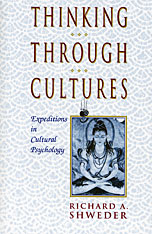 Thinking Through Cultures: Expeditions in Cultural Psychology
Richard A. Shweder
Harvard University Press, 1991 A discipline is emerging called cultural psychology; it will serve as a force of renewal for both anthropology and psychology. In this book Richard Shweder presents its manifesto. Its central theme is that we have to understand the way persons, cultures, and natures make each other up. Its goal is to seek the mind indissociably embedded in the meanings and resonances that are both its product and its components.
Over the past thirty years the person as a category has disappeared from ethnography. Shweder aims to reverse this trend, focusing on the search for meaning and the creation of intentional worlds. He examines the prospect for a reconciliation of rationality and relativism and defines an intellectual agenda for cultural psychology.
What Shweder calls for is an exploration of the human mind, and of one’s own mind, by thinking through the ideas and practices of other peoples and their cultures. He examines evidence of cross-cultural similarities and differences in mind, self, emotion, and morality with special reference to the cultural psychology of a traditional Hindu temple town in India, where he has done considerable work in comparative anthropology. And he critiques the concept of the “person” implicit in Western social science, as well as psychiatric theories of the “subject.” He maintains that it will come as no surprise to cultural psychology if it should turn out that there are different psychological generalizations or “nomological networks”—a Hindu psychology, a Protestant psychology—appropriate for the different semiotic regions of the world. Shweder brings the news that God is alive not dead, but that there are many gods.
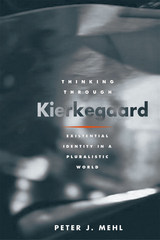 Thinking through Kierkegaard: Existential Identity in a Pluralistic World
Peter J. Mehl
University of Illinois Press, 2010 Thinking through Kierkegaard is a critical evaluation of Søren Kierkegaard's vision of the normatively human, of who we are and might aspire to become, and of what Mehl calls our existential identity. Through a pragmatist examination of three of Kierkegaard's key pseudonymous "voices" (Judge William, Climacus, and Anti-Climacus), Peter J. Mehl argues that Kierkegaard's path is not the only end of our search, but instead leads us to affirm a plurality of paths toward a fulfilling existential identity.
Contrary to Kierkegaard's ideal of moral personhood and orthodox Christian identity, Mehl aims to acknowledge the possibility of pluralism in existential identities. By demanding sensitivity to the deep ways social and cultural context influences human perception, interpretation and self?representation, Mehl argues that Kierkegaard is not simply discovering but also participating in a cultural construction of the human being.
Drawing on accounts of what it is to be a person by prominent philosophers outside of Kierkegaard scholarship, including Charles Taylor, Owen Flanagan, Alasdair MacIntyre, and Thomas Nagel, Mehl also works to bridge the analytic and continental traditions and reestablishes Kierkegaard as a rich resource for situating moral and spiritual identity. This reexamination of Kierkegaard is recommended for anyone interested in what it means to be a person.
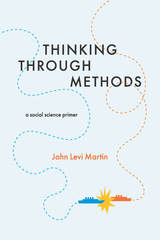 Thinking Through Methods: A Social Science Primer
John Levi Martin
University of Chicago Press, 2017 Sociological research is hard enough already—you don’t need to make it even harder by smashing about like a bull in a china shop, not knowing what you’re doing or where you’re heading. Or so says John Levi Martin in this witty, insightful, and desperately needed primer on how to practice rigorous social science. Thinking Through Methods focuses on the practical decisions that you will need to make as a researcher—where the data you are working with comes from and how that data relates to all the possible data you could have gathered.
This is a user’s guide to sociological research, designed to be used at both the undergraduate and graduate level. Rather than offer mechanical rules and applications, Martin chooses instead to team up with the reader to think through and with methods. He acknowledges that we are human beings—and thus prone to the same cognitive limitations and distortions found in subjects—and proposes ways to compensate for these limitations. Martin also forcefully argues for principled symmetry, contending that bad ethics makes for bad research, and vice versa. Thinking Through Methods is a landmark work—one that students will turn to again and again throughout the course of their sociological research.
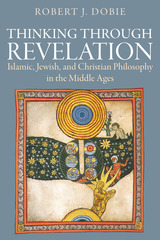 Thinking Through Revelation
Robert J. Dobie
Catholic University of America Press, 2019 Navigating the seemingly competing claims of human reason and divine revelation to truth is without a doubt one of the central problems of medieval philosophy. Medieval thinkers argued a whole gamut of positions on the proper relation of religious faith to human reason. Thinking Through Revelation attempts to ask deeper questions: what possibilities for philosophical thought did divine revelation open up for medieval thinkers? How did the contents of the sacred scriptures of Judaism, Christianity, and Islam put into question established philosophical assumptions? But most fundamentally, how did not merely the content of the sacred books but the very mode in which revelation itself is understood to come to us – as a book “sent down” from on high, as a covenant between God and his people, or as incarnate person - create or foreclose possibilities for the resolution of the philosophical problems that the Abrahamic revelations themselves raised?
 Thinking Through Soil: Wastewater Agriculture in the Mezquital Valley
Montserrat Bonvehi Rosich and Seth Denizen
Harvard University Press, 2025 To think through soil is to engage with some of the most critical issues of our time. In addition to its agricultural role in feeding eight billion people, soil has become the primary agent of carbon storage in global climate models, and it is crucial for biodiversity, flood control, and freshwater resources. Perhaps no other material is asked to do so much for the human environment, and yet our basic conceptual model of what soil is and how it works remains surprisingly vague.
In cities, soil occupies a blurry category whose boundaries are both empirically uncertain and politically contested. Soil functions as a nexus for environmental processes through which the planet’s most fundamental material transformations occur, but conjuring what it actually is serves as a useful exercise in reframing environmental thought, design thinking, and city and regional planning toward a healthier, more ethical, and more sustainable future.
Through a sustained analysis of the world’s largest wastewater agricultural system, located in the Mexico City–Mezquital hydrological region, Thinking Through Soil imagines what a better environmental future might look like in central Mexico. More broadly, this case study offers a new image of soil that captures its shifting identity, explains its profound importance to rural and urban life, and argues for its capacity to save our planet.
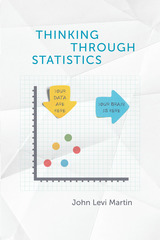 Thinking Through Statistics
John Levi Martin
University of Chicago Press, 2018 Simply put, Thinking Through Statistics is a primer on how to maintain rigorous data standards in social science work, and one that makes a strong case for revising the way that we try to use statistics to support our theories. But don’t let that daunt you. With clever examples and witty takeaways, John Levi Martin proves himself to be a most affable tour guide through these scholarly waters.
Martin argues that the task of social statistics isn't to estimate parameters, but to reject false theory. He illustrates common pitfalls that can keep researchers from doing just that using a combination of visualizations, re-analyses, and simulations. Thinking Through Statistics gives social science practitioners accessible insight into troves of wisdom that would normally have to be earned through arduous trial and error, and it does so with a lighthearted approach that ensures this field guide is anything but stodgy.
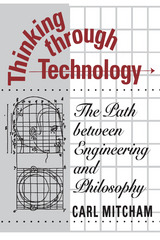 Thinking through Technology: The Path between Engineering and Philosophy
Carl Mitcham
University of Chicago Press, 1994 What does it mean to think about technology philosophically? Why try? These are the issues that Carl Mitcham addresses in this work, a comprehensive, critical introduction to the philosophy of technology and a discussion of its sources and uses.
Tracing the changing meaning of "technology" from ancient times to our own, Mitcham identifies the most important traditions of critical analysis of technology: the engineering approach, which assumes the centrality of technology in human life; and the humanities approach, which is concerned with its moral and cultural boundaries.
Mitcham bridges these two traditions through an analysis of discussions of engineering design, of the distinction between tools and machines, and of engineering science itself. He looks at technology as it is experienced in everyday life—as material objects (from kitchenware to computers), as knowledge ( including recipes, rules, theories, and intuitive "know-how"), as activity (design, construction, and use), and as volition (knowing how to use technology and understanding its consequences). By elucidating these multiple aspects, Mitcham establishes criteria for a more comprehensive analysis of ethical issues in applications of science and technology.
This book will guide anyone wanting to reflect on technology and its moral implications.
Thinking Through Television
Lorenz Engell
Amsterdam University Press, 2020 Media philosophy can only be found and revealed in media themselves. The essays collected in this volume thus approach television as a medium both of thought and of action in its own right. Through its specific forms and practices, television implements and reflects on aspects of time, such as synchronicity and succession, seriality and event, history and memory. Additionally, television stages new forms of thinking causality and agency, subject-object relations, tactility, choice, and other founding concepts of everyday experience as well as of outstanding philosophical relevance. In the course of media evolution, television organizes the transition from the analogue to the digital. Last not least, by conceiving of itself, television offers a source of finally thinking through television.
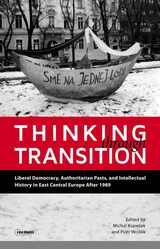 Thinking through Transition: Liberal Democracy, Authoritarian Pasts, and Intellectual History in East Central Europe After 1989
Michal Kopecek
Central European University Press, 2015 Thinking through Transition is the first concentrated effort to explore the most recent chapter of East Central European past from the perspective of intellectual history. Post-communism can be understood as a period of scarcity and preponderance of ideas, the dramatic eclipsing of the dissident legacy (as well as the older political traditions), and the rise of technocratic and post-political governance. This book, grounded in empirical research sensitive to local contexts, proposes instead a history of adaptations, entanglements, and unintended consequences. In order to enable and invite comparison, the volume is structured around major domains of political thought, some of them generic (liberalism, conservatism, the Left), others (populism and politics of history) deemed typical for post-socialism. However, as shown by the authors, the generic often turns out to be heavily dependent on its immediate setting, and the typical resonates with processes that are anything but vernacular.
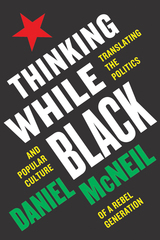 Thinking While Black: Translating the Politics and Popular Culture of a Rebel Generation
Daniel McNeil
Rutgers University Press, 2023 Thinking While Black brings together the work and ideas of the most notorious film critic in America, one of the most influential intellectuals in the United Kingdom, and a political and cultural generation that consumed images of rebellion and revolution around the world as young Black teenagers in the late 1960s. Drawing on hidden and little known archives of resistance and resilience, it sheds new light on the politics and poetics of young people who came together, often outside of conventional politics, to rock against racism in the 1970s and early ‘80s. It re-examines debates in the 1980s and ‘90s about artists who “spread out” to mount aggressive challenges to a straight, white, middle-class world, and entertainers who “sold out” to build their global brands with performances that attacked the Black poor, rejected public displays of introspection, and expressed unambiguous misogyny and homophobia. Finally, it thinks with and through the work of writers who have been celebrated and condemned as eminent intellectuals and curmudgeonly contrarians in the twenty-first century. In doing so, it delivers the smartest and most nuanced investigation into thinkers such as Paul Gilroy and Armond White as they have evolved from “young soul rebels” to “middle-aged mavericks” and “grumpy old men,” lamented the debasement and deskilling of Black film and music in a digital age, railed against the discourteous discourse and groupthink of screenies and Internet Hordes, and sought to stimulate some deeper and fresher thinking about racism, nationalism, multiculturalism, political correctness and social media. Listen along with this Spotify playlist inspired by the book! For copyright reasons, this book is available in the U.S.A only.
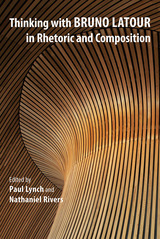 Thinking with Bruno Latour in Rhetoric and Composition
Edited by Paul Lynch and Nathaniel Rivers
Southern Illinois University Press, 2015 Best known for his books We Have Never Been Modern, Laboratory Life, and Science in Action, Bruno Latour has inspired scholarship across many disciplines. In the past few years, the fields of rhetoric and composition have witnessed an explosion of interest in Latour’s work. Editors Paul Lynch and Nathaniel Rivers have assembled leading and emerging scholars in order to focus the debate on what Latour means for the study of persuasion and written communication. Essays in this volume discern, rearticulate, and occasionally critique rhetoric and composition’s growing interest in Latour. These contributions include work on topics such as agency, argument, rhetorical history, pedagogy, and technology, among others. Contributors explain key terms, identify implications of Latour’s work for rhetoric and composition, and explore how his theories might inform writing pedagogies and be used to build research methodologies. Thinking with Bruno Latour in Rhetoric and Composition shows how Latour’s groundbreaking theories on technology, agency, and networks might be taken up, enriched, and extended to challenge scholars in rhetorical studies (both English and communications), composition, and writing studies to rethink some of the field’s most basic assumptions. It is set to become the standard introduction that will appeal not only to those scholars already interested in Latour but also those approaching Latour for the first time.
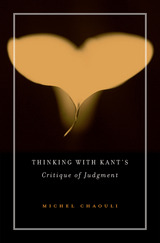 Thinking with Kant’s Critique of Judgment
Michel Chaouli
Harvard University Press, 2017 Why read Kant’s Critique of Judgment today? Does this classic of aesthetic theory still possess the vitality to prompt those of us engaged with art and criticism to think more deeply about issues that move us, issues such as the force of aesthetic experience, the essence of art, and the relationship of beauty and meaning? It does, if we find the right way into it.
Michel Chaouli shows us one such way. He unwraps the gray packing paper of Kant’s prose to reveal the fresh and fierce ideas that dwell in this masterpiece—not just the philosopher’s theory of beauty but also his ruminations on organisms and life. Each chapter in Thinking with Kant’s Critique of Judgment unfolds the complexity of a key concept, to disclose its role in Kant’s thought and to highlight the significance it holds for our own thinking.
Chaouli invites all who are interested in art and interpretation—novice and expert alike—to set out on the path of thinking with the Critique of Judgment. The rewards are handsome: we see just how profoundly Kant’s book can shape our own ideas about aesthetic experience and meaning. By thinking with Kant, we learn to surpass the horizon of his thought and find ourselves pushed to the very edge of what can be grasped firmly. That is where Kant’s book is at its most thrilling.
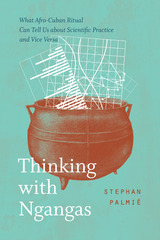 Thinking with Ngangas: What Afro-Cuban Ritual Can Tell Us about Scientific Practice and Vice Versa
Stephan Palmié
University of Chicago Press, 2023 A comparative investigation of Afro-Cuban ritual and Western science that aims to challenge the rationality of Western expert practices.
Inspired by the exercises of Father Lafitau, an eighteenth-century Jesuit priest and protoethnographer who compared the lives of the Iroquois to those of the ancient Greeks, Stephan Palmié embarks on a series of unusual comparative investigations of Afro-Cuban ritual and Western science. What do organ transplants have to do with ngangas, a complex assemblage of mineral, animal, and vegetal materials, including human remains, that serve as the embodiment of the spirits of the dead? How do genomics and “ancestry projects” converge with divination and oracular systems? What does it mean that Black Cubans in the United States took advantage of Edisonian technology to project the disembodied voice of a mystical entity named ecué onto the streets of Philadelphia? Can we consider Afro-Cuban spirit possession as a form of historical knowledge production?
By writing about Afro-Cuban ritual in relation to Western scientific practice, and vice versa, Palmié hopes to challenge the rationality of Western expert practices, revealing the logic that brings together enchantment and experiment.
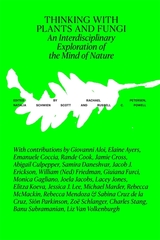 Thinking with Plants and Fungi: Interdisciplinary Explorations of Ecology, Mind, and the More-than-Human World
Rachael Petersen, Natalia Schwien Scott, and Russell C. Powell
Harvard University Press Thinking with Plants and Fungi brings together leading voices from science, the humanities, and the arts to explore how vegetal and fungal life challenge dominant models of consciousness, community, and ecological care. Building on a landmark 2025 conference and years of interdisciplinary collaboration at the Center for the Study of World Religions at Harvard Divinity School, this volume examines the entanglements of mind and matter, nature and culture, human and more-than-human. Essays investigate topics including plant neurobiology, philosophy, decolonial botany, fungal ethics, and the poetics of sessility. Featuring scientists, philosophers, artists, and practitioners—including Banu Subramaniam, Michael Marder, Giuliana Furci, and Jessica J. Lee—Thinking with Plants and Fungi models a transformative form of inquiry for an age of ecological crisis.
Thinking with Shakespeare: Essays on Politics and Life
Julia Reinhard Lupton
University of Chicago Press, 2011 What is a person? What company do people keep with animals, plants, and things? Such questions—bearing fundamentally on the shared meaning of politics and life—animate Shakespearean drama, yet their urgency has often been obscured. Julia Reinhard Lupton gently dislodges Shakespeare’s plays from their historical confines to pursue their universal implications. From Petruchio’s animals and Kate’s laundry to Hamlet’s friends and Caliban’s childhood, Lupton restages thinking in Shakespeare as an embodied act of consent, cure, and care. Thinking with Shakespeare encourages readers to ponder matters of shared concern with the playwright by their side. Taking her cue from Hannah Arendt, Lupton reads Shakespeare for fresh insights into everything from housekeeping and animal husbandry to biopower and political theology.
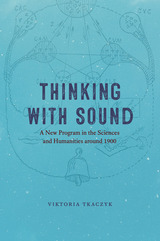 Thinking with Sound: A New Program in the Sciences and Humanities around 1900
Viktoria Tkaczyk
University of Chicago Press, 2023 Thinking with Sound traces the formation of auditory knowledge in the sciences and humanities in the decades around 1900.
When the outside world is silent, all sorts of sounds often come to mind: inner voices, snippets of past conversations, imaginary debates, beloved and unloved melodies. What should we make of such sonic companions? Thinking with Sound investigates a period when these and other newly perceived aural phenomena prompted a far-reaching debate. Through case studies from Paris, Vienna, and Berlin, Viktoria Tkaczyk shows that the identification of the auditory cortex in late nineteenth-century neuroanatomy affected numerous academic disciplines across the sciences and humanities. “Thinking with sound” allowed scholars and scientists to bridge the gaps between theoretical and practical knowledge, and between academia and the social, aesthetic, and industrial domains. As new recording technologies prompted new scientific questions, new auditory knowledge found application in industry and the broad aesthetic realm. Through these conjunctions, Thinking with Sound offers a deeper understanding of today’s second “acoustic turn” in science and scholarship.
 Thinking with St. John Paul II: Vol 2 (2021-2022)
Dariusz Karlowicz
Angelicum University Press Fundacja Swietego Mikolaja, 2025 Thinking with St. John Paul II vol. IIis a result of a series of monthly "JP2 Lectures" held in the academic year 2021/2022 at the Pontifical University of St. Thomas Aquinas-Angelicum in Rome. The "JP2 Lectures" have been introduced to the Angelicum's curriculum by the St. John Paul II Institute of Culture as lectures open to the public and promoting reflection on a wide range of topics in the light of St. John Paul II's intellectual and spiritual legacy. The authors of texts printed in this volume are some of the most prominent intellectuals of our time from across the world. Volume II is nine texts from John Lord Alderdice, Jean-Luc Marion, George Weigel, Andrea Riccardi, John Milbank, Carl A. Anderson, Ewa Thompson and Stanisław Grygiel. Topics include i.a. questions relating to the role of religion in modern European society, reflections of lessons drawn from JP's social and anthropological teaching and summaries of the pontificate from a historical perspective.
 Thinking with St. John Paul II: Vol. 3 (2022-2023)
Dariusz Karlowicz
Angelicum University Press Fundacja Swietego Mikolaja, 2025 Thinking with St. John Paul II vol. III is a result of a series of monthly "JP2 Lectures" held in the academic year 2022/2023 at the Pontifical University of St. Thomas Aquinas-Angelicum in Rome. The "JP2 Lectures" have been introduced to the Angelicum's curriculum by the St. John Paul II Institute of Culture as lectures open to the public and promoting reflection on a wide range of topics in the light of St. John Paul II's intellectual and spiritual legacy. The authors of texts included in this volume are some of the most prominent intellectuals of our time from across the world. Volume III is eight texts from 2022/23 by Antoine Arjakovsky, Mirosława Grabowska, Vittorio Possenti, W.H. Weiler, s. Helen Alford, O.P., Dariusz Karłowicz, Rusty R. Reno, and Fr. Franciszek Longchamps de Berier. Topics include i.a. questions relating the theory and reality of secularisation and the crisis and polarisation of Europe in a Christian perspective.
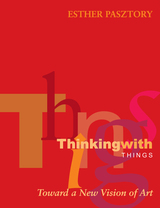 Thinking with Things: Toward a New Vision of Art
By Esther Pasztory
University of Texas Press, 2005 What is "art"? Why have human societies through all time and around the globe created those objects we call works of art? Is there any way of defining art that can encompass everything from Paleolithic objects to the virtual images created by the latest computer technology? Questions such as these have preoccupied Esther Pasztory since the beginning of her scholarly career. In this authoritative volume, she distills four decades of research and reflection to propose a pathbreaking new way of understanding what art is and why human beings create it that can be applied to all cultures throughout time. At its heart, Pasztory's thesis is simple and yet profound. She asserts that humans create things (some of which modern Western society chooses to call "art") in order to work out our ideas—that is, we literally think with things. Pasztory draws on examples from many societies to argue that the art-making impulse is primarily cognitive and only secondarily aesthetic. She demonstrates that "art" always reflects the specific social context in which it is created, and that as societies become more complex, their art becomes more rarefied. Pasztory presents her thesis in a two-part approach. The first section of the book is an original essay entitled "Thinking with Things" that develops Pasztory's unified theory of what art is and why we create it. The second section is a collection of eight previously published essays that explore the art-making process in both Pre-Columbian and Western societies. Pasztory's work combines the insights of art history and anthropology in the light of poststructuralist ideas. Her book will be indispensable reading for everyone who creates or thinks about works of art.
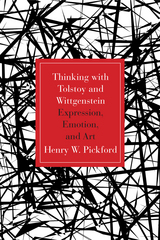 Thinking with Tolstoy and Wittgenstein: Expression, Emotion, and Art
Henry W. Pickford
Northwestern University Press, 2015 In this highly original interdisciplinary study incorporating close readings of literary texts and philosophical argumentation, Henry W. Pickford develops a theory of meaning and expression in art intended to counter the meaning skepticism most commonly associated with the theories of Jacques Derrida. Pickford arrives at his theory by drawing on the writings of Wittgenstein to develop and modify the insights of Tolstoy’s philosophy of art. Pickford shows how Tolstoy’s encounter with Schopenhauer’s thought on the one hand provided support for his ethical views but on the other hand presented a problem, exemplified in the case of music, for his aesthetic theory, a problem that Tolstoy did not successfully resolve. Wittgenstein’s critical appreciation of Tolstoy’s thinking, however, not only recovers its viability but also constructs a formidable position within contemporary debates concerning theories of emotion, ethics, and aesthetic expression.
 Thinking with Whitehead: A Free and Wild Creation of Concepts
Isabelle Stengers
Harvard University Press, 2011 Alfred North Whitehead has never gone out of print, but for a time he was decidedly out of fashion in the English-speaking world. In a splendid work that serves as both introduction and erudite commentary, Isabelle Stengers—one of today’s leading philosophers of science—goes straight to the beating heart of Whitehead’s thought. The product of thirty years’ engagement with the mathematician-philosopher’s entire canon, this volume establishes Whitehead as a daring thinker on par with Gilles Deleuze, Felix Guattari, and Michel Foucault.
Reading the texts in broadly chronological order while highlighting major works, Stengers deftly unpacks Whitehead’s often complicated language, explaining the seismic shifts in his thinking and showing how he called into question all that philosophers had considered settled after Descartes and Kant. She demonstrates that the implications of Whitehead’s philosophical theories and specialized knowledge of the various sciences come yoked with his innovative, revisionist take on God. Whitehead’s God exists within a specific epistemological realm created by a radically complex and often highly mathematical language.
“To think with Whitehead today,” Stengers writes, “means to sign on in advance to an adventure that will leave none of the terms we normally use as they were.”
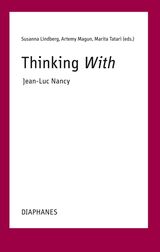 Thinking With—Jean-Luc Nancy
Edited by Susanna Lindberg, Artemy Magun, and Marita Tatari
Diaphanes, 2023 A multifaceted engagement with the thought of Jean-Luc Nancy.
This book continues passionate conversation that Jean-Luc Nancy (1940–2021) was engaged in throughout his life with philosophers and artists from all over the world. The contributors take up Nancy’s philosophical question of truth as a praxis of a “with”—understanding truth without any given measure or comparison as an articulation of a with. It is a thinking responsible for the world from within the world, a language that seeks to respond to the ongoing mutation of our civilization. Contributors include Jean-Christophe Bailly, Rodolphe Burger, Marcia Sá Calvacante Schuback, Marcus Coelen, Alexander García Düttmann, Juan-Manuel Garrido, Martta Heikkilä, Erich Hörl, Valentin Husson, Sandrine Israel-Jost, Ian James, Apostolos Lampropoulos, Nidesh Lawtoo, Jérôme Lèbre, Susanna Lindberg, Michael Marder, Artemy Magun, Boyan Manchev, Dieter Mersch, Hélène Nancy, Jean-Luc Nancy, Aïcha Liviana Messina, Ginette Michaud, Helen Petrovsky, Jacob Rogozinski, Philipp Stoellger, Peter Szendy, Georgios Tsagdis, Marita Tatari, Gert-Jan van der Heiden, and Aukje van Rooden.
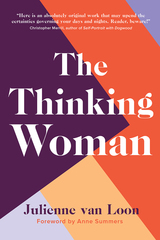 The Thinking Woman
Julienne van Loon
Rutgers University Press, 2021 While women have struggled to gain recognition in the discipline of philosophy, there is no shortage of brilliant female thinkers. What can these women teach us about ethics, politics, and the nature of existence, and how might we relate these big ideas back to the smaller everyday concerns of domestic life, work, play, love, and relationships?
Australian novelist Julienne van Loon goes on a worldwide quest to answer these questions, by engaging with eight world-renowned thinkers who have deep insights on humanity and society: media scholar Laura Kipnis, novelist Siri Hustvedt, political philosopher Nancy Holmstrom, psychoanalytic theorist Julia Kristeva, domestic violence reformer Rosie Batty, peace activist Helen Caldicott, historian Marina Warner, and feminist philosopher Rosi Braidotti. As she speaks to these women, she reflects on her own experiences. Combining the intimacy of a memoir with the intellectual stimulation of a theoretical text, The Thinking Woman draws novel connections between the philosophical, personal, and political. Giving readers a new appreciation for both the ethical complexities and wonder of everyday life, this book is inspiration to all thinking people.
 Thinking Women and Art in the Long Eighteenth Century: Strategic Reinterpretations
Mechthild Fend
Amsterdam University Press, 2025 Thinking Women represents state-of-the-art feminist scholarship in the field of eighteenth-century French and British art and visual culture. Topics range from women and their activities in art and science, to gendered representations of childhood and animals to fashion, femininity and temporality. Some chapters center on individual genres like hunting portraits, or on specific paintings, such as David Martin's Portrait of Dido Elizabeth Belle and Lady Elizabeth Murray (ca. 1780) or Marie Guillemine Benoist's Portrait of a Young Black Woman (Madeleine) (1800). Others make contributions on the work of familiar actors like Jean-Siméon Chardin or Élisabeth Louise Vigée Le Brun. The volume also brings to the fore lesser-known figures including Marie-Thérèse Reboul, Madeleine Basseporte, Marguerite Le Comte, and Gabrielle Capet. Written by eleven distinguished (art) historians, the assembled essays engage with and honor the work of the late Mary D. Sheriff, whose unpublished chapter on women artists’ self-portraiture opens the book.
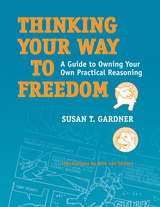 Thinking Your Way to Freedom: A Guide to Owning Your Own Practical Reasoning
Susan T. Gardner
Temple University Press, 2009 Thinking Your Way to Freedom is a critical-thinking textbook with a difference. Rather than focusing exclusively on improving college students’ academic achievement, Susan Gardner seeks to dramatically change how students think through issues that are important in their lives beyond school. Gardner created 66 original and entertaining comic strips—featuring her dogs, Diva and Ben—that add a light touch as they encourage intellectual and personal autonomy. Through a clear step-by-step method of practical reasoning, students are taught how to think impartially and how to neutralize invisible biases that limit their freedom of thought and action. With the help of Diva and Ben, readers learn to evaluate the strengths of arguments and to recognize fallacies, all the while avoiding the paralyzing effects of relativism. Thinking Your Way to Freedom includes the writing of short essays so that students can improve their critical thinking and writing at the same time. A Teacher’s Manual for this book will be available online.
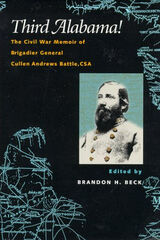 Third Alabama!: The Civil War Memoir of Brigadier General Cullen Andrews Battle, CSA
Cullen Andrews Battle
University of Alabama Press, 2002 This memoir is a dramatic, intelligent first-person account of an Alabama regiment central to the Confederate campaign, written by its commander. From Seven Pines to Sharpsburg and Chancellorsville to Spotsylvania, the Third Alabama Regiment played a key role in the Civil War. One of the first infantry units from the Deep South to make the journey to Virginia in 1861, the Third Alabama was the first to cross the Potomac into Maryland and to enter the streets of Gettysburg in 1863. As the regiment’s leader and one of General Robert E. Lee’s brigade commanders, General Cullen Andrews Battle witnessed the extent of the many triumphs and sufferings of the Army of Northern Virginia. Trained as a journalist and lawyer, he records these events honestly and with compassion. Battle captures the courage of citizen soldiers fighting without prior military training, always paying tribute to the heroism of those under his command, while providing vivid accounts of some of the war’s bloodiest fights. He assesses Confederate mistakes, particularly at Seven Pines—and sheds light on the third Battle of Winchester, the only decisive defeat in which the regiment was involved. Brandon Beck’s introductory notes provide a thorough review of Battle’s life and valuable biographical information on soldiers under his command as well as on other officers in the Army of Northern Virginia. A worthwhile addition to all Civil War libraries, public or private, Third Alabama! offers an informative, dramatic reading of the wartime activities of one of the Confederacy’s bravest fighting units.
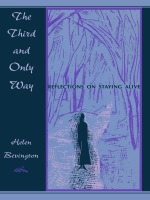 The Third and Only Way: Reflections on Staying Alive
Helen Bevington
Duke University Press, 1996 In this autobiographical volume, the remarkable Helen Bevington looks for answers to the question of how to live or, more specifically, how to confront growing older. A familiar face on the literary landscape since the mid-1940s, Bevington contemplates the course of her own life in view of the suicide of her father, the final years her mother spent in unwilling solitude, and the tragic suicide of her son following a crippling automobile accident from which he could never recover. How is one to face the inevitability of death? What is the third alternative? How to persevere in life?
The unique Bevington way of autobiography recreates lessons and insights of other lives, historical figures, and compelling incidents, and combines them in a narrative that follows the emotional currents of her life. Evoking a wide range of historical and literary figures, including Chekhov, Marcus Aurelius, Flannery O’Connor, Simone de Beauvoir, Thoreau, Beatrix Potter, Sappho, Yeats, Alexander the Great, Montaigne, Saint Cecilia, Virginia Woolf, Liv Ullmann, and many others, Bevington finds in these lives a path that has guided her search away from solitude. Through her reflections on the ten years that followed her son’s death, we become aware of how far she has traveled, how the search has brightened, how she has eloquently evolved into old age. In the end she is sitting, like the Buddha, under her own fig tree, waiting not for death but for further illumination.
An original contemplation of the universal dilemmas and tragedies of existence, The Third and Only Way is at once warm, funny, and inspiring—full of learning and wisdom.
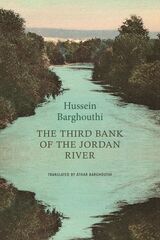 The Third Bank of the Jordan River
Hussein Barghouthi
Seagull Books, 2026 A dreamlike novel from Palestine that traces a restless soul’s journey through landscapes of memory, longing, alienation, and exile.
In this profound and evocative novel, acclaimed Palestinian author Hussein Barghouthi invites readers on an extraordinary, youthful journey through a landscape of memory, longing, alienation, and exile. Translated with great sensitivity by his son, Áthar Barghouthi, this deeply personal narrative unfurls as a stream-of-consciousness odyssey, blurring the lines between reality and dream. Haunted by a pervasive sense of loss, the prose, rich with poetic imagery, explores themes of displacement, identity, and the enduring shadows of a contested homeland.
The Third Bank of the Jordan River is a powerful, meditative work that defies conventional boundaries. With unflinching honesty, Barghouthi confronts the political through deeply human stories, capturing the restless search for meaning and the enduring human hunger for connection and freedom.
The Third Body
Helene Cixous
Northwestern University Press, 2009 In The Third Body, the poet, novelist, feminist critic, and theorist Hélène Cixous interweaves a loose narrative line with anecdotes, autobiography, lyricism, myth, dream, fantasy, philosophical insights, and intertextual citations of and conversations with other authors and thinkers. Cixous evokes the relationship of the female narrator and her over, a relationship of alternating presences and absences, separations and rejoinings. This relationship assumes protean forms within a complex web of writing, creating a "third body" out of the entwined bodies of the narrator and her lover.
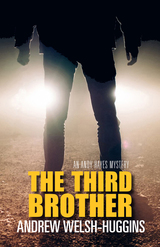 The Third Brother: An Andy Hayes Mystery
Andrew Welsh-Huggins
Ohio University Press, 2018 It’s a violent encounter that private investigator Andy Hayes could have done without. One minute he’s finishing up some grocery shopping ahead of a custody visit with his sons. The next, he must come to the rescue of a Somali American mother and her young children as anti-immigrant bullies torment them. Grateful for his intervention, the Somali community hires Andy to find a missing teenager who vanished without a trace and is now accused of plotting a terror attack in his adopted hometown of Columbus, Ohio. The government is certain that nineteen-year-old Abdi Mohamed followed in the footsteps of his brother, who died in Syria a few months earlier in a jihadi assault. But Mohamed’s family isn’t convinced, describing a soccer-loving American kid who renounced his brother’s actions and planned to attend college in the fall and become a diplomat someday. Soon Andy is fending off fed-up FBI agents and dueling with a mysterious foe with links to the white supremacist movement. As he draws ever closer to the truth behind Mohamed’s disappearance, Hayes stumbles onto a conspiracy that could put hundreds of lives in danger, including his own two boys.
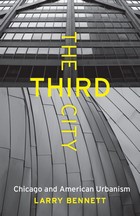 The Third City: Chicago and American Urbanism
Larry Bennett
University of Chicago Press, 2010 Our traditional image of Chicago—as a gritty metropolis carved into ethnically defined enclaves where the game of machine politics overshadows its ends—is such a powerful shaper of the city’s identity that many of its closest observers fail to notice that a new Chicago has emerged over the past two decades. Larry Bennett here tackles some of our more commonly held ideas about the Windy City—inherited from such icons as Theodore Dreiser, Carl Sandburg, Daniel Burnham, Robert Park, Sara Paretsky, and Mike Royko—with the goal of better understanding Chicago as it is now: the third city.
Bennett calls contemporary Chicago the third city to distinguish it from its two predecessors: the first city, a sprawling industrial center whose historical arc ran from the Civil War to the Great Depression; and the second city, the Rustbelt exemplar of the period from around 1950 to 1990. The third city features a dramatically revitalized urban core, a shifting population mix that includes new immigrant streams, and a growing number of middle-class professionals working in new economy sectors. It is also a city utterly transformed by the top-to-bottom reconstruction of public housing developments and the ambitious provision of public works like Millennium Park. It is, according to Bennett, a work in progress spearheaded by Richard M. Daley, a self-consciously innovative mayor whose strategy of neighborhood revitalization and urban renewal is a prototype of city governance for the twenty-first century. The Third City ultimately contends that to understand Chicago under Daley’s charge is to understand what metropolitan life across North America may well look like in the coming decades.
 The Third Coast: America’s Great Lakes Shoreline
Zurick, David
Northwestern University Press, 2025 A full-color photographic journey around the Great Lakes
Locals affectionately call the Great Lakes the “third coast”—though at 4,500 miles, this beloved freshwater shoreline is the nation’s longest, covering more distance than the country’s Atlantic and Pacific coasts combined.
Divided into four galleries by lake and season, David Zurick’s award-winning photographs spotlight the distinct personality of each coastline and the people who call its shores home. We visit windswept Lake Superior in winter, Lake Michigan bursting into spring, Lakes Erie and Ontario under the summer sun, and Lake Huron in the changing palette of autumn, with an additional gallery devoted to the straits and rivers that connect them. An evocative foreword from award-winning nature writer Jerry Dennis sets the stage for this sweeping visual tour.
In Zurick’s photographs, lifelong lovers of the Great Lakes will find the familiar shorelines of coastal hometowns, summer refuges, and secret fishing spots—as well as images that reawaken us to the majesty and mystery of North America’s “freshwater seas.”
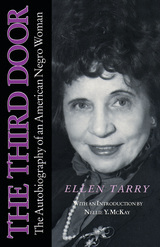 The Third Door: The Autobiography of an American Negro Woman
Ellen Tarry
University of Alabama Press, 1992 Tarry relates her life against the background of a changing American society
In pursuit of her dream of becoming a writer, Tarry moved to New York, where she worked for black newspapers and became acquainted with some of the prominent black artists and writers of the day, particularly Claude McKay and James Weldon Johnson. Her devotion to the church found expression in social work activities, first in Harlem, then in Chicago, and, during World War II, in Anniston, Alabama, where she directed a USO for black soldiers stationed at Fort McClellan. Tarry wrote several books for young readers, including biographies of James Weldon Johnson and Pierre Toussaint. She continued her social work career after the war and now lives in New York. Devoid of pronounced racial markings, Tarry’s interactions with white Americans were not characterized by fear or distrust. But when her own brown daughter was subjected to racial discrimination she wrote The Third Door in 1955 to tell America about the plight of her people. With prose that is both moving and powerful, Tarry relates her life against the background of a changing American society. She still awaits the third door, designated neither “white” nor “colored,” through which all American will someday walk.
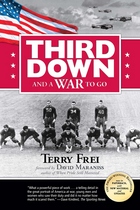 Third Down and a War to Go
Terry Frei
Wisconsin Historical Society Press, 2007 On December 11, 1941, All-American football player Dave Schreiner wrote to his parents, "I'm not going to sit here snug as a bug, playing football, when others are giving their lives for their country. ... If everyone tried to stay out of it, what a fine country we'd have!" Schreiner didn't stay out of it. Neither did his Wisconsin Badger teammates, including friend and co-captain Mark "Had" Hoskins and standouts "Crazylegs" Hirsch and Pat Harder. After that legendary 1942 season, the Badgers scattered to serve, fight, and even die around the world. This fully revised edition of the popular hardcover includes follow-up research and updates about many of the '42 Badgers, plus a new foreword by Pulitzer Prize-winning journalist and author David Maraniss. Readers and reviewers agree: Terry Frei's heart-wrenching story of Schreiner and his band of brothers is much more than one team's tale. It's an All-American story.
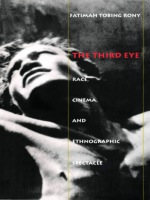 The Third Eye: Race, Cinema, and Ethnographic Spectacle
Fatimah Tobing Rony
Duke University Press, 1996 Charting the intersection of technology and ideology, cultural production and social science, Fatimah Tobing Rony explores early-twentieth-century representations of non-Western indigenous peoples in films ranging from the documentary to the spectacular to the scientific. Turning the gaze of the ethnographic camera back onto itself, bringing the perspective of a third eye to bear on the invention of the primitive other, Rony reveals the collaboration of anthropology and popular culture in Western constructions of race, gender, nation, and empire. Her work demonstrates the significance of these constructions—and, more generally, of ethnographic cinema—for understanding issues of identity.
In films as seemingly dissimilar as Nanook of the North, King Kong, and research footage of West Africans from an 1895 Paris ethnographic exposition, Rony exposes a shared fascination with—and anxiety over—race. She shows how photographic “realism” contributed to popular and scientific notions of evolution, race, and civilization, and how, in turn, anthropology understood and critiqued its own use of photographic technology. Looking beyond negative Western images of the Other, Rony considers performance strategies that disrupt these images—for example, the use of open resistance, recontextualization, and parody in the films of Katherine Dunham and Zora Neale Hurston, or the performances of Josephine Baker. She also draws on the work of contemporary artists such as Lorna Simpson and Victor Masayesva Jr., and writers such as Frantz Fanon and James Baldwin, who unveil the language of racialization in ethnographic cinema.
Elegantly written and richly illustrated, innovative in theory and original in method, The Third Eye is a remarkable interdisciplinary contribution to critical thought in film studies, anthropology, cultural studies, art history, postcolonial studies, and women’s studies.
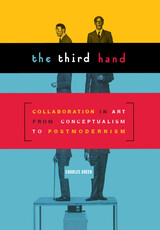 Third Hand: Collaboration in Art from Conceptualism to Postmodernism
Charles Green
University of Minnesota Press, 2001 A major reevaluation of collaboration’s role in art since 1968. The lone artist is a worn cliché of art history but one that still defines how we think about the production of art. Since the 1960s, however, a number of artists have challenged this image by embarking on long-term collaborations that dramatically altered the terms of artistic identity. In The Third Hand, Charles Green offers a sustained critical examination of collaboration in international contemporary art, tracing its origins from the evolution of conceptual art in the 1960s into such stylistic labels as Earth Art, Systems Art, Body Art, and Performance Art. During this critical period, artists around the world began testing the limits of what art could be, how it might be produced, and who the artist is. Collaboration emerged as a prime way to reframe these questions. Green looks at three distinct types of collaboration: the highly bureaucratic identities created by Joseph Kosuth, Ian Burn, Mel Ramsden, and other members of Art & Language in the late 1960s; the close-knit relationships based on marriage or lifetime partnership as practiced by the Boyle Family, Anne and Patrick Poirier, Helen Mayer Harrison and Newton Harrison; and couples-like Christo and Jeanne-Claude, Gilbert & George, or Marina Abramovi´c and Ulay-who developed third identities, effacing the individual artists almost entirely. These collaborations, Green contends, resulted in new and, at times, extreme authorial models that continue to inform current thinking about artistic identity and to illuminate the origins of postmodern art, suggesting, in the process, a new genealogy for art in the twenty-first century.
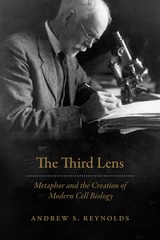 The Third Lens: Metaphor and the Creation of Modern Cell Biology
Andrew S. Reynolds
University of Chicago Press, 2018 Does science aim at providing an account of the world that is literally true or objectively true? Understanding the difference requires paying close attention to metaphor and its role in science. In The Third Lens, Andrew S. Reynolds argues that metaphors, like microscopes and other instruments, are a vital tool in the construction of scientific knowledge and explanations of how the world works. More than just rhetorical devices for conveying difficult ideas, metaphors provide the conceptual means with which scientists interpret and intervene in the world.
Reynolds here investigates the role of metaphors in the creation of scientific concepts, theories, and explanations, using cell theory as his primary case study. He explores the history of key metaphors that have informed the field and the experimental, philosophical, and social circumstances under which they have emerged, risen in popularity, and in some cases faded from view. How we think of cells—as chambers, organisms, or even machines—makes a difference to scientific practice. Consequently, an accurate picture of how scientific knowledge is made requires us to understand how the metaphors scientists use—and the social values that often surreptitiously accompany them—influence our understanding of the world, and, ultimately, of ourselves.
The influence of metaphor isn’t limited to how we think about cells or proteins: in some cases they can even lead to real material change in the very nature of the thing in question, as scientists use technology to alter the reality to fit the metaphor. Drawing out the implications of science’s reliance upon metaphor, The Third Lens will be of interest to anyone working in the areas of history and philosophy of science, science studies, cell and molecular biology, science education and communication, and metaphor in general.
 The Third Millennium: Reflections on Faith and Reason
David Walsh
Georgetown University Press, 1999 This provocative meditation on the turn of the millennium explores the significance that a celebration of Christ's birth can have beyond the Christian community. Writing from the perspective of Christian philosophy, David Walsh ponders the emergence of modern civilization from the medieval Christian past, concluding that Christian theology grounds the dominant ideas of modern society. He professes the importance and promise of Christianity while rejecting the Gnosticism, advocated by Harold Bloom and others, that places the divine within the self. Affirming Christ's place at the heart of civilization, Walsh argues that the Christian faith has relevance beyond its own boundaries for all traditions that find their common ground in reason. This contemplative book asserts that the Christian millennial jubilee has meaning for all and that it points the way toward the fullness of life in this world as well as in eternity.
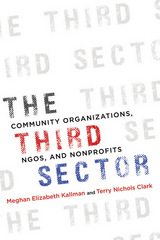 The Third Sector: Community Organizations, NGOs, and Nonprofits
Meghan Elizabeth Kallman and Terry Nichols Clark
University of Illinois Press, 2019 Civil society organizations, nonprofits, national and international nongovernmental organizations, and a variety of formal and informal associations have coalesced into a world political force. Though the components of this so-called third sector vary by country, their cumulative effects play an ever-greater role in global affairs. Looking at relief and welfare organizations, innovation organizations, social networks, and many other kinds of groups, Meghan Elizabeth Kallman and Terry Nichols Clark explore the functions, impacts, and composition of the nonprofit sector in six key countries. Chinese organizations, for example, follow the predominantly Asian model of government funding that links their mission to national political goals. Western groups, by contrast, often explicitly challenge government objectives, and even gain relevance and cache by doing so. In addition, Kallman and Clark examine groups in real-world contexts, providing a wealth of political-historical background, in-depth consideration of interactions with state institutions, region-by-region comparisons, and suggestions for how groups can borrow policy options across systems. Insightful and forward-seeing, The Third Sector provides a rare international view of organizations and agendas driving change in today's international affairs.
 Third Sector Management: The Art of Managing Nonprofit Organizations
William B. Werther Jr. and Evan Berman
Georgetown University Press, 2001 Trying to do good deeds does not guarantee that a nonprofit organization will succeed. The organization must do good deeds well. This textbook offers a blueprint for nonprofit success, adopting a strategic perspective that assumes vision, mission, strategy, and execution as the pillars upon which success is built. While many experts on nonprofits argue that fundraising is the single key to success, William B. Werther Jr., and Evan M. Berman show that effective fundraising depends largely on how the nonprofit is positioned and how it performs. They address such issues as leadership and board development, strategic planning, staffing, fundraising, partnering, productivity improvement, and accountability. Emphasizing the context of nonprofits and detailing improvements than can be made by managers at all levels, the book strikes a balance between policy discussion and practical usefulness. Written for use in graduate courses in nonprofit management, Third Sector Management will also be invaluable to directors, staff, volunteers, and board members of nonprofit organizations.
The Third Sex
Willy. Translated and with an Introduction by Lawrence R. Schehr
University of Illinois Press, 2007 A gold mine of information about a hidden queer culture Thirty-two years before Simone de Beauvoir's classic The Second Sex, popular French novelist Willy published The Third Sex, a vivid description of the world of European homosexuals in France, Italy, and Germany during the late 1920s. Stepping directly into the heart of gay men's culture, Willy follows homosexual nightlife into music halls, nightclubs, casinos, bars, and saunas. While he finds plenty of drug and alcohol abuse, he also discovers homosexual publishers, scientific societies, group rivalries, and opinions--both medical and political--about the nature of homosexuality itself. Lawrence R. Schehr's introduction provides context and translator's notes for this first-ever English edition.
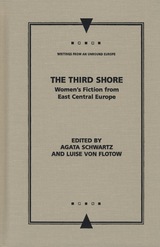 The Third Shore: Women's Fiction from East Central Europe
Agatha Schwartz
Northwestern University Press, 2006 The events of 1989 that brought an end to the so-called East Bloc may have increased women's opportunities to write and publish, or at least changed the circumstances under which they do so. Still writing from a certain historical and cultural margin, these women from East Central Europe have begun to explore a new freedom whose fruits are displayed to exhilarating effect in this book-a freedom to experiment, to innovate, to create a literature uniquely expressive of their world. This volume for the first time allows English-speaking readers to discover the pleasures of these women's writing.
A rich compendium of fiction by twenty-five women from eighteen different nations ranging from Lithuania to Ukraine to Poland, the Czech Republic, Romania, Albania, and Slovenia, The Third Shore brings to light a whole spectrum of women's literary accomplishment and experience virtually unknown in the West. Gracefully translated, and with an introduction that establishes their political, historical, and literary context, these stories written in the decade after the fall of the Iron Curtain are tales of the familiar-of illness and death, love and desire, motherhood and war, feminism, and patriarchy-reconceived and turned into something altogether new by the distinctive experience they reflect.
 The Third Space of Sovereignty: The Postcolonial Politics of U.S.–Indigenous Relations
Kevin Bruyneel
University of Minnesota Press, 2007 The imposition of modern American colonial rule has defined U.S.–indigenous relations since the time of the American Civil War. In resistance, Kevin Bruyneel asserts, indigenous political actors work across American spatial and temporal boundaries, demanding rights and resources from the government while also challenging the imposition of colonial rule over their lives. This resistance engenders what he calls a “third space of sovereignty,” which resides neither inside nor outside the U.S. political system but rather exists on its boundaries, exposing both the practices and limitations of American colonial rule. The Third Space of Sovereignty offers fresh insights on such topics as the crucial importance of the formal end of treaty-making in 1871, indigenous responses to the prospect of U.S. citizenship in the 1920s, native politics during the tumultuous civil rights era of the 1960s, the question of indigenousness in the special election of California’s governor in 2003, and the current issues surrounding gaming and casinos. In this engaging and provocative work, Bruyneel shows how native political actors have effectively contested the narrow limits that the United States has imposed on indigenous people’s ability to define their identity and to develop economically and politically on their own terms. Kevin Bruyneel is assistant professor of politics at Babson College.
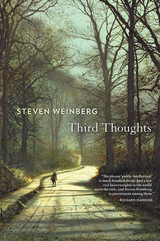 Third Thoughts: The Universe We Still Don’t Know
Steven Weinberg
Harvard University Press, 2018 “The phrase ‘public intellectual’ is much bandied about. Just a few real heavyweights in the world merit the title, and Steven Weinberg is preeminent among them.”
—Richard Dawkins
“Weinberg has a knack for capturing a complex concept in a succinct, unforgettable image… One of the smartest and most diligent scientists around.”
—Nature
In this wise and wide-ranging meditation, one of the most captivating science communicators of our time challenges us to reconsider the entanglement of science and society. From the cosmological to the personal, from astronomy and quantum physics to the folly of manned spaceflight and the rewards of getting things wrong, Steven Weinberg shares his views on the workings of the universe and our aspirations and limitations. Third Thoughts aims to provoke and inform and never loses sight of the human dimension of scientific discovery.
“One of the 20th century’s greatest physicists…shares his strongly-held opinions on everything from the Higgs boson to the state of theoretical physics and the problems of science and society.”
—Forbes
“This book should be read not only for its insightful and illuminating explanations of a wide range of physical phenomena but also for the opportunity it affords to follow the wanderings of a brilliant mind through topics ranging from high-energy physics and the makeup of the cosmos to poetry, and from the history and philosophy of science to the dangers of economic inequality… [A] captivating book.”
—Mario Livio, Science
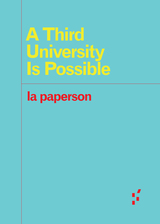 A Third University Is Possible
la la paperson
University of Minnesota Press, 2017 A Third University is Possible unravels the intimate relationship between the more than 200 US land grant institutions, American settler colonialism, and contemporary university expansion. Author la paperson cracks open uncanny connections between Indian boarding schools, Black education, and missionary schools in Kenya; and between the Department of Homeland Security and the University of California. Central to la paperson’s discussion is the “scyborg,” a decolonizing agent of technological subversion. Drawing parallels to Third Cinema and Black filmmaking assemblages, A Third University is Possible ultimately presents new ways of using language to develop a framework for hotwiring university “machines” to the practical work of decolonization. Forerunners: Ideas First is a thought-in-process series of breakthrough digital publications. Written between fresh ideas and finished books, Forerunners draws on scholarly work initiated in notable blogs, social media, conference plenaries, journal articles, and the synergy of academic exchange. This is gray literature publishing: where intense thinking, change, and speculation take place in scholarship.
Third Voice: Poems
Ruth Ellen Kocher
Tupelo Press, 2016 Praising the power of lyric drama, T. S. Eliot described the use of third voice as a means for characters to address and interrogate one another, and second voice as a way for characters to talk to the audience. In this daring new book, the principal narrator presents as a caricature reflecting the tangible experiences of a disembodied “I” posed against absurd selfhood—a voice imbued by sublime otherness. Within a dismantled minstrel show, Ruth Ellen Kocher frames a female voice splintered and re-figured as “self” and “character.” The incomprehensible nature of the sublime emerges through a cast of other personages including Eartha Kitt, Geordi LaForge, Immanuel Kant, W. E. B. Du Bois, and Malcolm X. Third Voice asserts lyric beyond personal expression and drama beyond the stage, using the spectacle of minstrelsy as a deformation of mastery in an audaciously conceptual yet visceral performance.
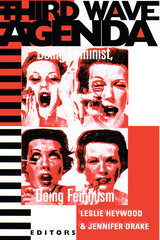 Third Wave Agenda: Being Feminist, Doing Feminism
Leslie Heywood
University of Minnesota Press, 1997 Discusses the challenges and pleasures of creating a new feminism. Young feminists have grown up with a plethora of cultural choices and images-in the distance from Gloria Steinem to Courtney Love, a chasm has been traversed and an entire history made. In Third Wave Agenda, feminists born between the years 1964 and 1973 discuss the things that matter now, both in looking back at the accomplishments and failures of the past and in planning for the challenges of the future. The women and men writing here are activists, teachers, cultural critics, artists, and journalists. They distinguish themselves from a group of young, conservative feminists, including Naomi Wolf and Katie Roiphe, who criticize second wave feminists and are regularly called on to speak for the “next generation” of feminism. In contrast, Third Wave Agenda seeks to complicate our understanding of feminism by not only embracing the second wave critique of beauty culture, sexual abuse, and power structures, but also emphasizing ways that desires and pleasures such as beauty and power can be used to enliven activist work, even while recognizing the importance of maintaining a critique of them.Combining research, theory, and social practice with an autobiographical style, these writers are hard at work creating a new feminism that draws on the submerged histories of other feminisms-black feminism, “womanism,” and working-class feminism, among others. Some topics explored in Third Wave Agenda include feminism in popular music, interracial coalitions, and tensions between individual ambitions and collective action. Contributors: Barry Baldridge, Ana Marie Cox, Ophira Edut, Tali Edut, Carol Guess, Freya Johnson, Melissa Klein, Dyann Logwood, Annalee Newitz, Jeff Niesel, Jennifer Reed, Jillian Sandel, Leigh Shoemaker, Michelle Sidler, Deborah L. Siegel, Jen Smith, Carolyn Sorisio, and Lidia Yukman.
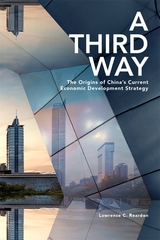 A Third Way: The Origins of China’s Current Economic Development Strategy
Lawrence C. Reardon
Harvard University Press, 2020 From 1949 to 1978, communist elites held clashing visions of China’s economic development. Mao Zedong advocated the “first way” of semi-autarchy characteristic of revolutionary Stalinism (1929–34), while Zhou Enlai adapted bureaucratic Stalinism (1934–53) to promote the “second way” of import substitution industrialization. A Third Way tells the story of Deng Xiaoping’s experimentation with export-led development inspired by Lenin’s New Economic Policy and the economic reforms of Eastern Europe and Asia.
Having uncovered an extraordinary collection of internal party and government documents, Lawrence Reardon meticulously traces the evolution of the coastal development strategy, starting with special economic zones in 1979 and evolving into the fourteen open coastal cities, the Hainan SEZ, and eventual accession to the global trade regime in 2001. Reardon details how Deng and Zhao Ziyang tackled large-scale smuggling operations, compromised with Chen Yun’s conservative views, and overcame Deng Liqun’s ideological opposition. Although Zhao Ziyang was airbrushed out of official Chinese history after June 4, 1989, Reardon argues that Zhao was the true architect of China’s opening strategy. A Third Way provides important new insights about the crucial period of the 1980s and how it paved the way for China’s transformation into a global economic superpower.
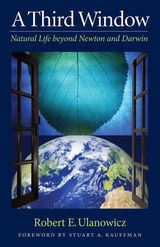 A Third Window: Natural Life beyond Newton and Darwin
Robert W. Ulanowicz
Templeton Press, 2009 Thus far, the dominant paradigms through which modern scientists have viewed nature have been structured primarily around Newtonian and Darwinian approaches. As theoretical ecologist Robert E. Ulanowicz observes in his new work, A Third Window, neither of these models is sufficient for explaining how real change—in the form of creative advance or emergence—takes place in nature. The metaphysical foundations laid by these great thinkers centuries ago are ill suited to sustain today's search for a comprehensive description of complex living systems. Ecosystem dynamics, for example, violate each and every one of the Newtonian presuppositions. Hence, Ulanowicz offers his titular "third window"—a new way of understanding evolution and other natural processes beyond the common mechanistic or materialistic philosophies of nature.
Drawing on the writings of Walter Elsasser, Karl Popper, Gregory Bateson, Robert Rosen, and Alfred North Whitehead, as well as his own experience as a theoretical ecologist, Ulanowicz offers a new set of axioms for how nature behaves. Chance and disarray in natural processes are shown to be necessary conditions for real change. Randomness is shown to contribute richness and autonomy to the natural world. The metaphysical implications of these new axioms will lend A Third Window a wide appeal not only among scientists, but also among philosophers, theologians, and general readers who follow the science and religion dialogue. Ulanowicz's fresh perspective adds a new voice to the discussion.
 The Third World: A Vital New Force in International Affairs
Peter Worsley
University of Chicago Press, 1970 Today the colonial empires of the world are shrinking, and the new nations which have emerged from the colonial past are rapidly developing into an important force in international affairs—the "third world." They are faced by a common problem, the urgent necessity to transform a peasant society into a modern industrial economy, and they are united by a common outlook, absolute opposition to all forms of colonialism and neocolonialism.
In this work Peter Worsley analyzes the unique political forms that have evolved as a result of these two basic conditions. In his view the third world has rejected both of the great ideologies of today. Their new solutions are unique in world history, being based on populism, socialism, and, often, the one-party state, which, although anathema to the Western liberal, is a natural development in societies united by the common enemy of colonialism.
"No one seriously concerned with the greatest problem of our time, the division of the world between the developed, industrialized, 'affluent' countries and les nations prolétaires, can afford to miss this book. . . . Professor Worsley has succeeded in giving us more solid information about underdeveloped parts of the world than can be found in any other book of comparable length."—The Times Literary Supplement
"Peter Worsley . . . has written an excellent descriptive analysis of the evolution and present state of a third force in world politics. Africa, Asia, and the Middle East have . . . given society not only a new philosophy with new goals but charismatic philosophers who have the potential to make the philosophy of the third world a vital presence to be reckoned with. . . . a brilliant book."—Peter Schwab, Journal of Modern African Studies
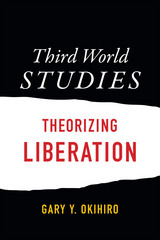 Third World Studies: Theorizing Liberation
Gary Y. Okihiro
Duke University Press, 2016 In 1968 the Third World Liberation Front at San Francisco State College demanded the creation of a Third World studies program to counter the existing curricula that ignored issues of power—notably, imperialism and oppression. The administration responded by institutionalizing an ethnic studies program; Third World studies was over before it began. Detailing the field's genesis and premature death, Gary Y. Okihiro presents an intellectual history of ethnic studies and Third World studies and shows where they converged and departed by identifying some of their core ideas, concepts, methods, and theories. In so doing, he establishes the contours of a unified field of study—Third World studies—that pursues a decolonial politics by examining the human condition broadly, especially in regard to oppression, and critically analyzing the locations and articulations of power as manifested in the social formation. Okihiro's framing of Third World studies moves away from ethnic studies' liberalism and its U.S.-centrism to emphasize the need for complex thinking and political action in the drive for self-determination.
 Third World Studies: Theorizing Liberation
Gary Y. Okihiro
Duke University Press, 2024 In this revised and expanded second edition of Third World Studies, Gary Y. Okihiro considers the methods and theories that might constitute the formation of Third World studies. Proposed in 1968 at San Francisco State College by the Third World Liberation Front but replaced by faculty and administrators with ethnic studies, Third World studies was over before it began. As opposed to ethnic studies, which Okihiro critiques for its liberalism and US-centrism, Third World studies begins with the colonized world and the anti-imperial, anticolonial, and antiracist projects located therein as described by W. E. B. Du Bois in 1900. Third World studies analyzes the locations and articulations of power around the axes of race, gender, sexuality, (dis)ability, class, and nation. In this new edition, Okihiro emphasizes the work of Third World intellectuals such as M. N. Roy, José Carlos Mariátegui, and Oliver Cromwell Cox; foregrounds the importance of Bandung and the Tricontinental; and adds discussions of eugenics, feminist epistemologies, and religion. With this work, Okihiro establishes Third World studies as a theoretical formation and a liberatory practice.
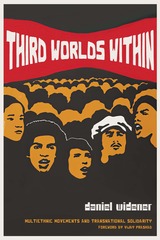 Third Worlds Within: Multiethnic Movements and Transnational Solidarity
Daniel Widener
Duke University Press, 2024 In Third Worlds Within, Daniel Widener expands conceptions of the struggle for racial justice by reframing antiracist movements in the United States in a broader internationalist context. For Widener, antiracist struggles at home are connected to and profoundly shaped by similar struggles abroad. Drawing from an expansive historical archive and his own activist and family history, Widener explores the links between local and global struggles throughout the twentieth and twenty-first centuries. He uncovers what connects seemingly disparate groups like Japanese American and Black communities in Southern California or American folk musicians and revolutionary movements in Asia. He also centers the expansive vision of global Indigenous movements, the challenges of Black/Brown solidarity, and the influence of East Asian organizing on the US Third World Left. In the process, Widener reveals how the fight against racism unfolds both locally and globally and creates new forms of solidarity. Highlighting the key strategic role played by US communities of color in efforts to defeat the conjoined forces of capitalism, racism, and imperialism, Widener produces a new understanding of history that informs contemporary social struggle.
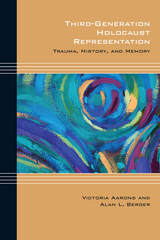 Third-Generation Holocaust Representation: Trauma, History, and Memory
Victoria Aarons and Alan L. Berger
Northwestern University Press, 2017 Victoria Aarons and Alan L. Berger show that Holocaust literary representation has continued to flourish well into the twenty-first century—gaining increased momentum even as its perspective shifts, as a third generation adds its voice to the chorus of post-Holocaust writers. In negotiating the complex thematic imperatives and narrative conceits of the literature of third-generation writers, this bold new work examines those structures, tropes, patterns, ironies, disjunctions, and overall tensions that produce a literature that laments unrecoverable loss for a generation removed spatially and temporally from the extended trauma of the Holocaust. Aarons and Berger address evolving notions of “postmemory”; the intergenerational and ongoing transmission of trauma; issues of Jewish cultural identity; inherited memory; the psychological tensions of post-Holocaust Jewish identity; the characteristic tropes of memory and the personalized narrative voice; issues of generational dislocation and anxiety; the recurrent antagonisms of assimilation and historical alienation; the imaginative re-creation and reconstruction of the past; and the future of Holocaust memory and representation.
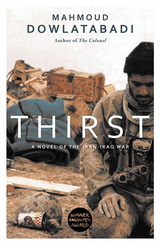 Thirst
Mahmoud Dowlatabadi
Haus Publishing, 2014 On a strategic hill overlooking the frontier, Iraqi and Iranian troops battle for access to a water tank. The troops are thirsty and on the brink of madness. They are, moreover, characters in a novel being written by an Iraqi journalist. That is, if he is given the chance to write it, a chance denied him by an Iraqi major who is in charge of a military prison and commands the journalist to write a fictitious report about a murder in the camp in hope of demoralising enemy soldiers.
At the same time, on the other side of the border, an Iranian author writes the story of the same troop of soldiers but from an Iranian perspective. He, likewise, is interrupted, not by external forces, but by memories of his first encounter with a gun.
Told in a kaleidoscopic style that weaves between the ongoing battle and the struggles of the writers, Thirst is rich with dark humour and surreal images. The emphasis on maintaining humanity and individual identity during war shows, once again, why Mahmoud Dowlatabadi is the most important Iranian writer of the last century.
Thirst for Growth: Water Agencies as Hidden Government in California
Robert Gottlieb
University of Arizona Press, 1991 An overview of the key issues of public accountability and water policy innovation that confront urban and agricultural water agencies throughout the country--notably in California where the prospects for future water development have become especially problematic. Focusing on six agencies in the Southern California region, they offer a series of case studies analyzing the issues of water quality, including groundwater contamination and disinfection by-products; reallocation and transfer of existing supplies; and management programs based on pricing changes, the conjunctive use of surface and groundwater supplies, and increased storage capacity aimed at greater efficiencies in stretching those existing supplies.
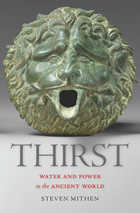 Thirst: Water and Power in the Ancient World
Steven Mithen
Harvard University Press, 2012 Water is an endangered resource, imperiled by population growth, mega-urbanization, and climate change. Scientists project that by 2050, freshwater shortages will affect 75 percent of the global population. Steven Mithen puts our current crisis in historical context by exploring 10,000 years of humankind’s management of water. Thirst offers cautionary tales of civilizations defeated by the challenges of water control, as well as inspirational stories about how technological ingenuity has sustained communities in hostile environments.
As in his acclaimed, genre-defying After the Ice and The Singing Neanderthals, Mithen blends archaeology, current science, and ancient literature to give us a rich new picture of how our ancestors lived. Since the Neolithic Revolution, people have recognized water as a commodity and source of economic power and have manipulated its flow. History abounds with examples of ambitious water management projects and hydraulic engineering—from the Sumerians, whose mastery of canal building and irrigation led to their status as the first civilization, to the Nabataeans, who created a watery paradise in the desert city of Petra, to the Khmer, who built a massive inland sea at Angkor, visible from space.
As we search for modern solutions to today’s water crises, from the American Southwest to China, Mithen also looks for lessons in the past. He suggests that we follow one of the most unheeded pieces of advice to come down from ancient times. In the words of Li Bing, whose waterworks have irrigated the Sichuan Basin since 256 BC, “Work with nature, not against it.”
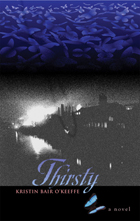 Thirsty: A Novel
Kristin Bair O’Keeffe
Ohio University Press, 2009 It is 1883, and all of Klara Bozic’s girlish dreams have come crashing down as she arrives in Thirsty, a gritty steel town carved into the slopes above the Monongahela River just outside of Pittsburgh. She has made a heartbreaking discovery. Her new husband Drago is as abusive as the father she left behind in Croatia. In Kristin Bair O’Keeffe’s debut novel, Klara’s life unfolds over forty years as she struggles to find her place in a new country where her survival depends on the friends who nurture her: gutsy, funny Katherine Zupanovic, who isn‘t afraid of Drago’s fist; BenJo, the only black man in Thirsty to have his own shop; and strangely enough, Old Man Rupert, the town drunk. Thirsty follows a chain of unlikely events that keep Klara’s spirit aloft: a flock of angelic butterflies descends on Thirsty; Klara gives birth to her first child in Old Man Rupert’s pumpkin patch; and BenJo gives her a talking bird. When Klara’s daughter marries a man even more brutal than Drago, Klara is forced to act. If she doesn’t finally break the cycle of violence in her family, her granddaughters will one day walk the same road, broken and bruised. As the threads that hold her family together fray and come undone, Klara has to decide if she has the courage to carve out a peaceful spot in the world for herself and her girls.
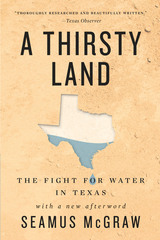 A Thirsty Land: The Fight for Water in Texas
By Seamus McGraw
University of Texas Press, 2018 As a changing climate threatens the whole country with deeper droughts and more furious floods that put ever more people and property at risk, Texas has become a bellwether state for water debates. Will there be enough water for everyone? Is there the will to take the steps necessary to defend ourselves against the sea? Is it in the nature of Americans to adapt to nature in flux? The most comprehensive—and comprehensible—book on contemporary water issues, A Thirsty Land delves deep into the challenges faced not just by Texas but by the nation as a whole, as we struggle to find a way to balance the changing forces of nature with our own ever-expanding needs. Part history, part science, part adventure story, and part travelogue, this book puts a human face on the struggle to master that most precious and capricious of resources, water. Seamus McGraw goes to the taproots, talking to farmers, ranchers, businesspeople, and citizen activists, as well as to politicians and government employees. Their stories provide chilling evidence that Texas—and indeed the nation—is not ready for the next devastating drought, the next catastrophic flood. Ultimately, however, A Thirsty Land delivers hope. This deep dive into one of the most vexing challenges facing Texas and the nation offers glimpses of the way forward in the untapped opportunities that water also presents.
Thirteen Alabama Ghosts and Jeffrey
Kathryn Tucker Windham
University of Alabama Press, 1987
Jeffrey is the mischievous "something" that has headquarters in the Windham home in Selma, Alabama. He first made his presence known in October 1966, and since then he has continued, at irregular and infrequent intervals, to clump down the hall, slam doors, rock in a chair, frighten the family cat (now deceased, through no fault of Jeffrey), move heavy pieces of furniture, cause electronic equipment to malfunction, and hide objects. He frequently accompanies Mrs. Windham on her travels, and tales of Jeffrey's antics are widely recounted.
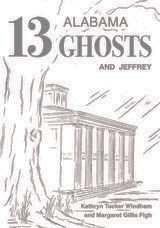 Thirteen Alabama Ghosts and Jeffrey: Commemorative Edition
Kathryn Tucker Windham
University of Alabama Press, 1969 One of the best-known and widely shared books about the South, Thirteen Alabama Ghosts and Jeffrey has haunted the imaginations of generations of delighted young readers since it was first published in 1969. Written by nationally acclaimed folklorists Kathryn Tucker Windham and Margaret Gillis Figh, the book recounts Alabama’s thirteen most ghoulish and eerie ghost legends.
Curated with loving expertise, these thirteen tales showcase both Windham and Figh’s masterful selection of stories and their artful and suspenseful writing style. In crafting stories treasured by children and adults alike, the authors tell much more than ghost tales. Embedded in each is a wealth of fact and folklore about Alabama history and the old South. “I don’t care whether you believe in ghosts,” Windham was fond of saying. “The good ghost stories do not require that you believe in ghosts.”
Millions of readers cherish memories of being chilled as teachers and parents read them unforgettable stories like “The Unquiet Ghost at Gaineswood,” about the ghost of Evelyn Carter, who fills this Demopolis antebellum mansion with midnight musical lamentations because her body wasn’t returned to her native Virginia, and “The Phantom Steamboat of the Tombigbee,” about the wreck of the steamboat Eliza Battle, which caught fire on the way to Mobile and sank one February night in 1858. People who live along the river say the flaming steamboat wreck still rises on cold nights, its cotton cargo blazing across the waves while its terrified survivors cry for help from the icy water.
The title’s “Jeffrey” refers to a friendly ghost who resides in the Windham home and who served as Windham’s unofficial collaborator in this work and the subsequent books in this popular series, all of which are now available in high-quality reproductions of their spooky originals.
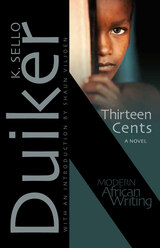 Thirteen Cents: A Novel
K. Sello Duiker
Ohio University Press, 2013 Every city has an unspoken side. Cape Town, between the picture postcard mountain and sea, has its own shadow: a place of dislocation and uncertainty, dependence and desperation, destruction and survival, gangsters, pimps, pedophiles, hunger, hope, and moments of happiness. Living in this shadow is Azure, a thirteen-year-old who makes his living on the streets, a black teenager sought out by white men, beholden to gang leaders but determined to create some measure of independence in this dangerous world. Thirteen Cents is an extraordinary and unsparing account of a coming of age in Cape Town. Reminiscent of some of the greatest child narrators in literature, Azure’s voice will stay with the reader long after this short novel is finished. Based on personal experiences, Thirteen Cents is Duiker’s debut novel, originally published in 2000. This first edition to be published outside South Africa includes an introduction by Shaun Viljoen and a special glossary of South African words and phrases from the text translated into English.
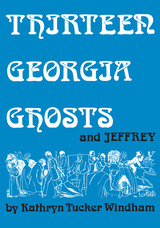 Thirteen Georgia Ghosts and Jeffrey: Commemorative Edition
Kathryn Tucker Windham
University of Alabama Press, 1987 Petrifying the Peach State, hosts of haints have beset the state of Georgia throughout its storied history. In Thirteen Georgia Ghosts and Jeffrey, best-selling folklorist Kathryn Tucker Windham, along with her trusty spectral companion Jeffrey, introduce thirteen of Georgia’s most famous ghost stories.
Windham won hearts across the nation in her regular radio broadcasts and many public appearances. The South’s most prolific raconteur of revenants, Windham, giving new meaning to the phrase “ghost-writer,” does more than tell ghost stories—she captures the true spirit of the place.
Evoking Georgia’s colonial era, “The Eternal Dinner Party” explains why the sounds of an elegant dinner soirée still waft from the grove of Savannah’s Bonaventure estate. At the onset of the Revolution, the Tattnall family abandoned Bonaventure and slipped away to England. Young Josiah Tattnall eventually returned to fight in the Revolution, restored Bonaventure, and later became Georgia’s governor. One holiday eve, when the mansion was bedecked with magnolia and holly and crowded with visitors, a fire too large to control swept through the old house. Tattnall, exhibiting his cool head and impeccable manners, ordered the massive dinner table carried out to the garden where he enjoined his holiday revelers to continue their stately meal. The melancholy strains of Tattnall’s dinner guests still echo through Bonaventure’s ancient oaks on moonlight nights.
In “The Ghost of Andersonville,” Windham takes visitors near the woebegone Confederate prisoner-of-war camp. A plaque there still recounts the tale of Swiss immigrant and Confederate captain Henry Wirz. Convicted—many thought wrongly—of war crimes, Wirz’s restless ghost still perambulates the highways of south Georgia. Writing for the Georgia Historical Commission, Miss Bessie Lewis quips in her preface to this beloved collection, “Who should be better able to tell of happenings long past than the ghosts of those who had a part in them?”
A perennial favorite, this commemorative edition restores Thirteen Georgia Ghosts and Jeffrey to the ghastly grandeur of its original 1973 edition.
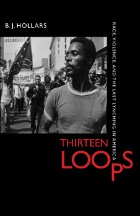 Thirteen Loops: Race, Violence, and the Last Lynching in America
B. J. Hollars
University of Alabama Press, 2011 Thirteen Loops: Race, Violence, and the Last Lynching in America recounts the story of three innocent victims, all of whom suffered violent deaths through no fault of their own: Vaudine Maddox in 1933 in Tuscaloosa, Sergeant Gene Ballard in 1979 in Birmingham, and Michael Donald in 1981 in Mobile.
The death of Vaudine Maddox—and the lynchings that followed—serves as a cautionary tale about the violence that occurred in the same region nearly fifty-years later, highlighting the cowardice, ignorance, and happenstance that sustained a culture of racial intolerance far into the future.Nearly half a century later, after a black bank robber was acquitted for the murder of police Sergeant Gene Ballard, two Klansmen took it upon themselves to exact revenge on an innocent victim--nineteen-year-old African American Michael Donald. Donald's murder--deemed the last lynching in America--reignited the race debate in America and culminated in a courtroom drama in which the United Klans of America were at long last put on trial.
While tracing the relationships among these murders, B. J. Hollars's research led him deep into the heart of Alabama’s racial, political, and legal landscapes. A work of literary journalism, Thirteen Loops draws upon rarely examined primary sources, court documents, newspaper reports, and first-hand accounts in an effort to unravel the twisted tale of a pair of interconnected murders that forever altered United States' race relations.
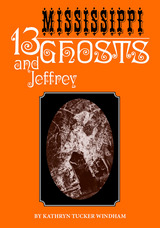 Thirteen Mississippi Ghosts and Jeffrey: Commemorative Edition
Kathryn Tucker Windham
University of Alabama Press, 2015 A deluxe, commemorative edition of famed southern author and folklorist Kathryn Tucker Windham’s introduction to Mississippi’s thirteen most famous haunted houses and ghostly visitations
For as long as Mississippi has existed (and then some), flocks of phantoms have haunted the mortal inhabitants of the Magnolia State. In Thirteen Mississippi Ghosts and Jeffrey, best-selling folklorist Kathryn Tucker Windham, along with her trusty spectral companion Jeffrey, introduces thirteen of the state’s most famous ghost stories.
Although stories about Mississippi’s spirits seemingly outnumber the ghosts themselves, Windham observes that “Southern ghost tales are disappearing because people no longer sit around on the porch on summer nights and tell stories. The old folks who grew up with these stories are dying now, and the stories are dying with them.”
Fortunately for us, Windham was a writer dedicated to preserving these tales in print. The veteran author spent many years tracking down these stories and chronicling the best ones. From the ghost of Mrs. McEwen still wearing her beloved cameo pin and keeping a watchful eye over Featherston Place, her home in Holly Springs, where, she swore, she would stay forever, to the ghostly visage fixed permanently on the bedroom window pane of Catherine McGehee, who searched the horizon ardently for her unrequited love to come to her as promised at Cold Spring Plantation in Pinckneyville, Windham’s stories cover the breadth and depth of Mississippi—at times more moonlight than magnolia.
An enduring classic, this commemorative edition restores Thirteen Mississippi Ghosts and Jeffrey to the ghastly grandeur of its original 1974 edition.
 Thirteen Tennessee Ghosts and Jeffrey: Commemorative Edition
Kathryn Tucker Windham
University of Alabama Press, 2016 A deluxe, commemorative edition of famed southern author and folklorist Kathryn Tucker Windham’s introduction to the Volunteer State’s most enduring ghost stories
In Thirteen Tennessee Ghosts and Jeffrey, beloved and best-selling folklorist Kathryn Tucker Windham presents a spine-tingling collection of Tennessee’s eeriest ghost tales. Accompanied by her faithful companion, Jeffrey, a friendly spirit who resided in her home, Windham traveled from the mysterious muds of Memphis to the haunted hollow’s of east Tennessee to collect the spookiest collection of Volunteer State revenants ever written.
In these perennial favorites, Windham captures the gentle folk humor of native Tennesseans as well as fascinating facts about the state’s rich history. In “The Dark Legend,” Windham recounts the story of explorer Merriwether Lewis, who met an untimely end on the Natchez Trace 1809 and whose spirit, it is said, still treads through Tennessee’s forests. Windham also visits central Tennessee’s Chapel Hill, where people who know the town say those who stand on the train tracks on dark, lonely nights can often see a disembodied light floating along the tracks. Neighbors say it’s the ghost of a headless flagman who returns to cavort with night-time guests.
High in Tennessee’s Appalachian mountains, Windham encounters Martin, the phantom fiddler of Johnson County. Legend has it that in life Martin’s musical skills so mesmerized the snakes of the Stone Mountains that they would slither from their dens to listen tamely to his fiddling. Intrepid visitors to the rocky tops of northeast Tennessee’s mountains say you can still hear Martin’s ghost fiddling in the hollows.
This handsome, new commemorative hardback edition returns Windham’s suspenseful classic to its original keepsake quality and includes a new afterword by the author’s children.
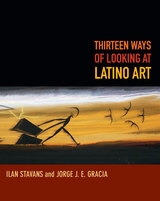 Thirteen Ways of Looking at Latino Art
Ilan Stavans, Jorge J. E. Gracia
Duke University Press, 2014 The essayist and cultural commentator Ilan Stavans and the analytic philosopher Jorge J. E. Gracia share long-standing interests in the intersection of art and ideas. Here they take thirteen pieces of Latino art, each reproduced in color, as occasions for thematic discussions. Whether the work at the center of a particular conversation is a triptych created by the brothers Einar and Jamex de la Torre, Andres Serrano's controversial Piss Christ, a mural by the graffiti artist BEAR_TCK, or Above All Things, a photograph by María Magdalena Campos-Pons, Stavans and Gracia's exchanges inevitably open out to literature, history, ethics, politics, religion, and visual culture more broadly. Autobiographical details pepper Stavans and Gracia's conversations, as one or the other tells what he finds meaningful in a given work. Sparkling with insight, their exchanges allow the reader to eavesdrop on two celebrated intellectuals—worldly, erudite, and unafraid to disagree—as they reflect on the pleasures of seeing.
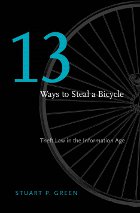 Thirteen Ways to Steal a Bicycle: Theft Law in the Information Age
Stuart P. Green
Harvard University Press, 2012 Theft claims more victims and causes greater economic injury than any other criminal offense. Yet theft law is enigmatic, and fundamental questions about what should count as stealing remain unresolved—especially misappropriations of intellectual property, information, ideas, identities, and virtual property.
In Thirteen Ways to Steal a Bicycle, Stuart Green assesses our current legal framework at a time when our economy increasingly commodifies intangibles and when the means of committing theft and fraud grow ever more sophisticated. Was it theft for the editor of a technology blog to buy a prototype iPhone he allegedly knew had been lost by an Apple engineer in a Silicon Valley bar? Was it theft for doctors to use a patient’s tissue without permission in order to harvest a valuable cell line? For an Internet activist to publish tens of thousands of State Department documents on his Web site?
In this full-scale critique, Green reveals that the last major reforms in Anglophone theft law, which took place almost fifty years ago, flattened moral distinctions, so that the same punishments are now assigned to vastly different offenses. Unreflective of community attitudes toward theft, which favor gradations in blameworthiness according to what is stolen and under what circumstances, and uninfluenced by advancements in criminal law theory, theft law cries out for another reformation—and soon.
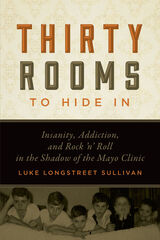 Thirty Rooms to Hide In: Insanity, Addiction, and Rock ‘n’ Roll in the Shadow of the Mayo Clinic
Luke Longstreet Sullivan
University of Minnesota Press, 2014 Author Luke Longstreet Sullivan has a simple way of describing his new memoir: “It’s like The Shining . . . only funnier.” Thirty Rooms to HideIn tells the astonishing story of Sullivan’s father and his descent from one of the world’s top orthopedic surgeons at the Mayo Clinic to a man who is increasingly abusive, alcoholic, and insane, ultimately dying alone on the floor of a Georgia motel room. For his wife and six sons, the years prior to his death were characterized by turmoil, anger, and family dysfunction; but somehow they were also a time of real happiness for Sullivan and his brothers, full of dark humor and much laughter. Through the 1950s and 1960s, the six brothers had a wildly fun and thoroughly dysfunctional childhood living in a forbidding thirty-room mansion, known as the Millstone, on the outskirts of Rochester, Minnesota. The many rooms of the immense home, as well as their mother’s loving protection, allowed the Sullivan brothers to grow up as normal, mischievous boys. Against a backdrop of the times—the Cold War, the Cuban Missile Crisis, fallout shelters, JFK’s assassination, and the Beatles—the cracks in their home life and their father’s psyche continue to widen. When their mother decides to leave the Millstone and move the family across town, the Sullivan boys are able to find solace in each other and in rock ’n’ roll. As Thirty Rooms to HideIn follows the story of the Sullivan family—at times grim, at others poignant—a wonderful, dark humor lifts the narrative. Tragic, funny, and powerfully evocative of the 1950s and 1960s, Thirty Rooms to Hide In is a tale of public success and private dysfunction, personal and familial resilience, and the strange power of humor to give refuge when it is needed most, even if it can’t always provide the answers.
Thirty Rules for Healthcare Leaders: Illustrated by Danny Suárez
Sanjay Saint
Michigan Publishing, 2019 Thirty Rules for Healthcare Leaders is the essential guide for everyone in healthcare, from those just starting their careers to those who are established leaders. The authors have been in leadership roles within healthcare systems for several years, and have carefully studied healthcare leadership during site visits to hospitals around the world. The book presents practical and timely advice packaged in pithy “pearls” that can be used by time-pressured professionals. Original artwork makes each rule memorable. Meant to be read in one sitting, or one at a time, Thirty Rules for Healthcare Leaders speaks to a broad range of healthcare professionals, regardless of title or experience. If you work in healthcare, this is your new must-read book.
Thirty Rules for Healthcare Leaders: Illustrated by Gina Kim
Sanjay Saint
Michigan Publishing, 2019 Thirty Rules for Healthcare Leaders is the essential guide for everyone in healthcare, from those just starting their careers to those who are established leaders. The authors have been in leadership roles within healthcare systems for several years, and have carefully studied healthcare leadership during site visits to hospitals around the world. The book presents practical and timely advice packaged in pithy “pearls” that can be used by time-pressured professionals. Original artwork makes each rule memorable. Meant to be read in one sitting, or one at a time, Thirty Rules for Healthcare Leaders speaks to a broad range of healthcare professionals, regardless of title or experience. If you work in healthcare, this is your new must-read book.
Thirty Rules for Healthcare Leaders: Illustrated by Victoria Bornstein
Sanjay Saint
Michigan Publishing, 2019 Thirty Rules for Healthcare Leaders is the essential guide for everyone in healthcare, from those just starting their careers to those who are established leaders. The authors have been in leadership roles within healthcare systems for several years, and have carefully studied healthcare leadership during site visits to hospitals around the world. The book presents practical and timely advice packaged in pithy “pearls” that can be used by time-pressured professionals. Original artwork makes each rule memorable. Meant to be read in one sitting, or one at a time, Thirty Rules for Healthcare Leaders speaks to a broad range of healthcare professionals, regardless of title or experience. If you work in healthcare, this is your new must-read book.
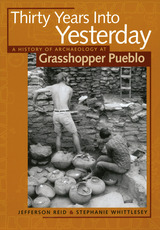 Thirty Years Into Yesterday: A History of Archaeology at Grasshopper Pueblo
Jefferson Reid and Stephanie Whittlesey
University of Arizona Press, 2005 For thirty years, the University of Arizona Archaeological Field School at Grasshopper—a 500-room Mogollon pueblo located on what is today the Fort Apache Indian Reservation in Arizona—probed the past, taught scholars of international repute, and generated controversy. This book offers an extraordinary window into a changing American archaeology and three different research programs as they confronted the same pueblo ruin.
Like the enigmatic Mogollon culture it sought to explore and earlier University of Arizona field schools in the Forestdale Valley and at Point of Pines, Grasshopper research engendered decades of controversy that still lingers in the pages of professional journals. Jefferson Reid and Stephanie Whittlesey, players in the controversy who are intimately familiar with the field school that ended in 1992, offer a historical account of this major archaeological project and the intellectual debates it fostered.
Thirty Years Into Yesterday charts the development of the Grasshopper program under three directors and through three periods dominated by distinct archaeological paradigms: culture history, processual archaeology, and behavioral archaeology. It examines the contributions made each season, the concepts and methods each paradigm used, and the successes and failures of each. The book transcends interests of southwestern archaeologists in demonstrating how the three archaeological paradigms reinterpreted Grasshopper, illustrating larger shifts in American archaeology as a whole. Such an opportunity will not come again, as funding constraints, ethical concerns, and other issues no doubt will preclude repeating the Grasshopper experience in our lifetimes.
Ultimately, Thirty Years Into Yesterday continues the telling of the Grasshopper story that was begun in the authors’ previous books. In telling the story of the archaeologists who recovered the material residue of past Mogollon lives and the place of the Western Apache people in their interpretations, Thirty Years Into Yesterday brings the story full circle to a stunning conclusion.
Thirty Years of Phoenix Poets, 1983 to 2012: An E-Sampler
Selected by University of Chicago Press Staff
University of Chicago Press, 2013 For thirty years now the Phoenix Poets series has been publishing the best poets working in English, from young poets publishing their first books to renowned masters at the peak of storied careers. This sample presents some of the best poets and poems from those three decades—it’s sure to whet your appetite and get you coming back for more!
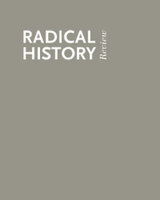 Thirty Years of Radical History: The Long March, Volume 2001
Van Gosse, ed.
Duke University Press This special issue of Radical History Review (RHR) offers not only a self-portrait of the journal but also a retrospective of radical history as a movement, an ideology, and a transformative force in historical scholarship. In an engaging combination of interviews, articles, and round-table discussions, this issue highlights the relentless challenge that radical history has posed to liberal and conservative paradigms. Recognizing the creative power of pluralism, the RHR editors have marshalled a diverse troop of historical scholars in this issue. In “Forum on Radical History,” sixteen historians discuss how the notion of radicalism has affected the way they write, teach, and live, and in "A Conversation about the Radical History Review," past and present members of the editorial board zero in on the journal itself and the political and academic context in which it was born. Offering a more personal perspective, Mike Wallace, Pulitzer Prize winner and radical history founder, shares his thoughts on RHR and the movement. Other articles in this special issue tackle the state of radicalism today, analyzing the academic labor movement, the significance of physical space in Pinochet’s reign of terror, and the enduring symbolism of a particular statue in Prague. This retrospective issue celebrates the journal’s past, but it also reflects on the present and looks forward to a future in which radicalism will continue to shape the landscape of historical and political discourse. Contributors. Tani E. Barlow, Dan Bender, Paul Buhle, Gabriela Cano, Anna Clark, Martin Duberman, Ellen Carol DuBois, Ian Christopher Fletcher, Rob Gregg, Harry D. Harootunian, Winston James, Nikki R. Keddie, Dave Kinkela, Staughton Lynd, Teresa Meade, Joanne Pope Melish, Ellen Noonan, Enrique C. Ochoa, Gary Y. Okihiro, Cynthia Paces, Max Page, Vijay Prashad, David Price, David Roediger, Andor Skotnes, Mike Wallace
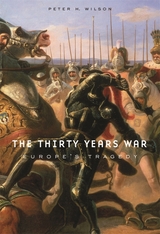 The Thirty Years War: Europe’s Tragedy
Peter H. Wilson
Harvard University Press, 2011 A deadly continental struggle, the Thirty Years War devastated seventeenth-century Europe, killing nearly a quarter of all Germans and laying waste to towns and countryside alike. Peter Wilson offers the first new history in a generation of a horrifying conflict that transformed the map of the modern world.
When defiant Bohemians tossed the Habsburg emperor’s envoys from the castle windows in Prague in 1618, the Holy Roman Empire struck back with a vengeance. Bohemia was ravaged by mercenary troops in the first battle of a conflagration that would engulf Europe from Spain to Sweden. The sweeping narrative encompasses dramatic events and unforgettable individuals—the sack of Magdeburg; the Dutch revolt; the Swedish militant king Gustavus Adolphus; the imperial generals, opportunistic Wallenstein and pious Tilly; and crafty diplomat Cardinal Richelieu. In a major reassessment, Wilson argues that religion was not the catalyst, but one element in a lethal stew of political, social, and dynastic forces that fed the conflict.
By war’s end a recognizably modern Europe had been created, but at what price? The Thirty Years War condemned the Germans to two centuries of internal division and international impotence and became a benchmark of brutality for centuries. As late as the 1960s, Germans placed it ahead of both world wars and the Black Death as their country’s greatest disaster.
An understanding of the Thirty Years War is essential to comprehending modern European history. Wilson’s masterful book will stand as the definitive account of this epic conflict.
For a map of Central Europe in 1618, referenced on page XVI, please visit this book’s page on the Harvard University Press website.
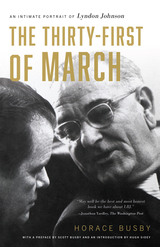 The Thirty-first of March: An Intimate Portrait of Lyndon Johnson
Horace Busby, with a Preface by Scott Busby and an Introduction by Hugh Sidey
University of Texas Press, 2023 An intimate retelling of Lyndon B. Johnson’s politics and presidency by one of his closest advisors.
Horace Busby was one of LBJ’s most trusted advisors; their close working and personal relationship spanned twenty years. In The Thirty-First of March he offers an indelible portrait of a president and a presidency at a time of crisis. From the aftereffects of the Kennedy assassination, when Busby was asked by the newly sworn-in president to sit by his bedside during his first troubled nights in office, to the concerns that defined the Great Society—civil rights, the economy, social legislation, housing, and the Vietnam War—Busby not only articulated and refined Johnson's political thinking, he also helped shape the most ambitious, far-reaching legislative agenda since FDR's New Deal. Here is Johnson the politician, Johnson the schemer, Johnson who advised against JFK’s choice of an open limousine that fateful day in Dallas, and Johnson the father, sickened by the deaths of young men fighting and dying in Vietnam on his orders. The Thirty-first of March is a rare glimpse into the inner sanctum of Johnson's presidency, as seen through the eyes of one of the people who understood him best.
The Thirty-Foot Elvis: A novel
Jane F. Hankins
Parkhurst Brothers, Inc., 2013 Set in the 1980s, when Bill Clinton was governor of Arkansas, this Flaggesque exploration of Southern characters is filled with plot twists, character surprises, New Orleans parties and true love. The second volume in the Peavine Chronicles Series, Hankins undergirds the narrative with a whimsical spirituality and delivers belly-laugh reading enjoyment with an afterglow.
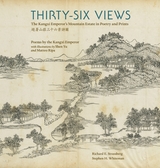 Thirty-Six Views: The Kangxi Emperor’s Mountain Estate in Poetry and Prints
Translated by Richard E. Strassberg, with Introductions by Richard E. Strassberg and Stephen H. Whiteman
Harvard University Press In 1712, the Kangxi emperor published Imperial Poems on the Mountain Estate for Escaping the Heat (Yuzhi Bishu shanzhuang shi) to commemorate his recently completed summer palace. Through his perceptions of thirty-six of its most scenic views, his poems and descriptions present an unusually intimate self-portrait of the emperor at the age of sixty that reflected the pleasures of his life there as well as his ideals as the ruler of the Qing Empire. Kangxi was closely involved in the production of the book and ordered several of his outstanding court artists—the painter Shen Yu and the engravers Zhu Gui and Mei Yufeng—to produce woodblock prints of the Thirty-Six Views, which set a new standard for topographical illustration. He also ordered Matteo Ripa, an Italian missionary serving as a court-artist, to translate these images into the medium of copperplate engraving, which introduced this technique to China. Ripa’s hybridized interpretations soon began to circulate in Europe and influenced contemporary aesthetic debates about the nature and virtues of the Chinese garden. This artistic collaboration between a Chinese emperor and a western missionary-artist thus marked a significant moment in intercultural imagination, production, and transmission during an earlier phase of globalization.
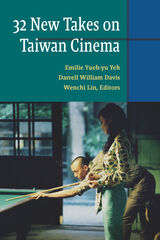 Thirty-two New Takes on Taiwan Cinema
Emilie Yueh-yu Yeh, Darrell William Davis, Wenchi Lin, Editors
University of Michigan Press, 2022 Thirty-two New Takes on Taiwan Cinema covers thirty-two films from Taiwan, addressing a flowering of new talent, moving from art film to genre pictures, and nonfiction. Beyond the conventional framework of privileging “New and Post-New Cinema,” or prominence of auteurs or single films, this volume is a comprehensive, judicious take on Taiwan cinema that fills gaps in the literature, offers a renewed historiography, and introduces new creative force and voices of Taiwan’s moving image culture to produce a leading and accessible work on Taiwan film and culture.
Film-by-film is conceived as the main carrier of moving picture imagery for a majority of viewers, across the world. The curation offers an array of formal, historical, genre, sexual, social, and political frames, which provide a rich brew of contexts. This surfeit of meanings is carried by individual films, one by one, which breaks down abstractions into narrative bites and outsized emotions.
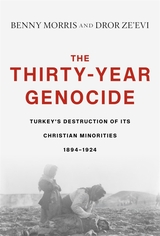 The Thirty-Year Genocide: Turkey’s Destruction of Its Christian Minorities, 1894–1924
Benny Morris and Dror Ze’evi
Harvard University Press, 2019 A Financial Times Book of the Year
A Foreign Affairs Book of the Year
A Spectator Book of the Year
“A landmark contribution to the study of these epochal events.”
—Times Literary Supplement
“Brilliantly researched and written…casts a careful eye upon the ghastly events that took place in the final decades of the Ottoman empire, when its rulers decided to annihilate their Christian subjects…Hitler and the Nazis gleaned lessons from this genocide that they then applied to their own efforts to extirpate Jews.”
—Jacob Heilbrun, The Spectator
Between 1894 and 1924, three waves of violence swept across Anatolia, targeting the region’s Christian minorities. By 1924, the Armenians, Assyrians, and Greeks, once nearly a quarter of the population, had been reduced to 2 percent. Most historians have treated these waves as distinct, isolated events, and successive Turkish governments presented them as an unfortunate sequence of accidents. The Thirty-Year Genocide is the first account to show that all three were actually part of a single, continuing, and intentional effort to wipe out Anatolia’s Christian population. Despite the dramatic swing from the Islamizing autocracy of the sultan to the secularizing republicanism of the post–World War I period, the nation’s annihilationist policies were remarkably constant, with continual recourse to premeditated mass killing, homicidal deportation, forced conversion, and mass rape. And one thing more was a constant: the rallying cry of jihad. While not justified under the teachings of Islam, the killing of two million Christians was effected through the calculated exhortation of the Turks to create a pure Muslim nation.
“A subtle diagnosis of why, at particular moments over a span of three decades, Ottoman rulers and their successors unleashed torrents of suffering.”
—Bruce Clark, New York Times Book Review
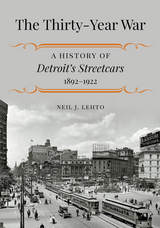 The Thirty-Year War: A History of Detroit's Streetcars, 1892–1922
Neil J. Lehto
Michigan State University Press, 2017 Streetcars played an especially important role in society around the turn of the twentieth century in Detroit, in part because of the downtown hub-and-spoke design of its main streets. During this period the streetcar was the main mode of transportation for the average citizen, as horse-drawn carriages and automobiles were not found outside of the upper class. Control over streetcar franchises was highly coveted—this control was simultaneous with having power over how and where people were transported throughout the city, making it an incredible political tool. The Thirty-Year War was a battle waged between 1892 and 1922 by the City of Detroit against the politically powerful and deeply entrenched corporations that owned streetcar franchises for control of the city’s streetway system. This compelling history shows how and why the owners of monopoly franchises of great public utilities such as bridges, street railways, electricity, natural gas, and cable television will protect and defend their privilege against public ownership or control, and is an example of how one city successfully fought back.
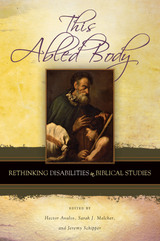 This Abled Body: Rethinking Disabilities in Biblical Studies
Hector Avalos
SBL Press, 2007 The burgeoning field of disability studies has recently emerged within the humanities and social sciences and, as a result, disability is no longer seen as the biological condition of an individual body but as a complex product of social, political, environmental, and biological discourses. The groundbreaking essays of This Abled Body engage biblical studies in conversation with the wider field of disability studies. They explore the use of the conceptual category “disability” in biblical and Near Eastern texts and examine how conceptions of disability become a means of narrating, interpreting, and organizing human life. Employing diverse approaches to biblical criticism, scholars explore methodological issues and specific texts related to physical and cognitive disabilities. Responses to the essays by established disability activists and academics working in the social sciences and humanities conclude the volume. The contributors are Martin Albl, Hector Avalos, Bruce C. Birch, Carole R. Fontaine, Thomas Hentrich, Nicole Kelley, Janet Lees, Sarah J. Melcher, David Mitchell, Jeremy Schipper, Sharon Snyder, Holly Joan Toensing, Neal H. Walls, and Kerry H. Wynn.
This Africa: Novels by West Africans in English and French
Judith Illsley Gleason
Northwestern University Press, 1965 This Africa is both a literary history and a survey of the West African novel. Gleason explores seventeen novels in French and eight in English, developing a framework of literary criticism that includes the conqueror, the hero, city life, village life, and personal identity. Authors whose works are studied include Chinua Achebe, Cyprian Ekwensi, Mongo Beti, and Camara Layer.
This Alaska
Carlie Hoffman
Four Way Books, 2021 To live in an Alaska of the mind is to map the imagined cartography of winter on all that is physical. To dwell perpetually in a symbolic cold, and to emerge, with grace, unscathed. This book questions what it means to live and love in such a buried season. This Alaska interrogates all that emotional and physical intimacy cannot salvage or keep warm. Death and dreams are at the very center of this book. But life — and all it entails and circles and loses and loves — is at its heart.
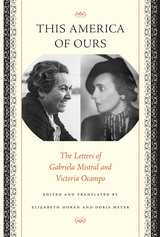 This America of Ours: The Letters of Gabriela Mistral and Victoria Ocampo
By Gabriela Mistral and Victoria Ocampo
University of Texas Press, 2003 2005 — Best Book Translation Prize – New England Council of Latin American Studies Gabriela Mistral and Victoria Ocampo were the two most influential and respected women writers of twentieth-century Latin America. Mistral, a plain, self-educated Chilean woman of the mountains who was a poet, journalist, and educator, became Latin America's first Nobel Laureate in 1945. Ocampo, a stunning Argentine woman of wealth, wrote hundreds of essays and founded the first-rate literary journal Sur. Though of very different backgrounds, their deep commitment to what they felt was "their" America forged a unique intellectual and emotional bond between them. This collection of the previously unpublished correspondence between Mistral and Ocampo reveals the private side of two very public women. In these letters (as well as in essays that are included in an appendix), we see what Mistral and Ocampo thought about each other and about the intellectual and political atmosphere of their time (including the Spanish Civil War, World War II, and the dictatorships of Latin America) and particularly how they negotiated the complex issues of identity, nationality, and gender within their wide-ranging cultural connections to both the Americas and Europe.
 This America We Dream of: Rodo and "Ariel" One Hundred Years on
Edited by Gustavo San Roman
University of London Press, 2001 Jose Enrique Rodo (1871-1917) is a key figure in the history of Latin American culture. His best known work is 'Ariel', an influential essay published a hundred years ago in his native Montevideo. Partly inspired by Spain's defeat over Cuba and Puerto Rico two years earlier, 'Ariel' is the subcontinent's foremost call for a concerted Latin Americanism to counter the cultural impact of the United States, and has influenced later interpretations of that relationship. The essays gathered in this volume provide a complex view of Rodo and make a significant contribution to the current renewal of interest in the work of a writer whose message is likely to need further reinterpreting efforts well into the second centenary of 'Ariel'. Contributors include: Iain A.D. Stewart, University of St. Andrews; Jason Wison, University College, London; Gordon Brotherston, Stanford University; Stephen M. Hart, University College, London; Stephen G.H. Roberts, University of Nottingham.
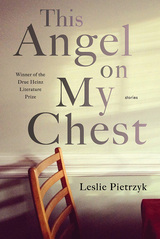 This Angel on My Chest
Leslie Pietrzyk
University of Pittsburgh Press, 2015 WINNER OF THE 2015 DRUE HEINZ LITERATURE PRIZE
Selected by Jill McCorkle
This Angel on My Chest is a collection of unconventionally linked stories, each about a different young woman whose husband dies suddenly and unexpectedly. Ranging from traditional stories to lists, a quiz, a YouTube link, and even a lecture about creative writing, the stories grasp to put into words the ways in which we all cope with unspeakable loss.
Based on the author’s own experience of losing her husband at age thirty-seven, this book explores the resulting grief, fury, and bewilderment, mirroring the obsessive nature of grieving. The stories examine the universal issues we face at a time of loss, as well as the specific concerns of a young widow: support groups, in-laws, insurance money, dating, and remarriage. This Angel on My Chest ultimately asks, how is it possible to move forward with life while “till death do you part” rings in your ears—and, how is it possible not to?
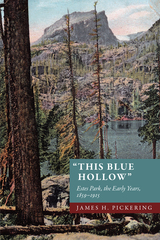 This Blue Hollow: Estes Park, the Early Years, 1859-1915
James H. Pickering
University Press of Colorado, 2005 This Blue Hollow is the first comprehensive account of the early history of Estes Park, Colorado, the "gem of the Rockies." In this enthralling narrative, James H. Pickering traces the development of Estes Park as a mountain resort community, from the time of its first recorded discovery by Joel Estes in 1859 to the establishment of Rocky Mountain National Park in 1915. Though Estes and his family stayed only briefly, others quickly followed: hunters, homesteading settlers, lumbermen, mountaineers, artists, writers, and vacationers. They came for many reasons: first for settlement, exploration, and exploitation and later for escape, health, recreation, and renewal. Their collective experiences and accomplishments-their successes as well as their failures-are chronicled in this book. Based on Pickering's extensive use of primary sources, This Blue Hollow details the lives of such characters as Joel Estes and Griffith J. Evans, the valley's first residents; the "notorious" James Nugent ("Rocky Mountain Jim") and his short but tempestuous relationship with the celebrated English traveler Isabella Lucy Bird; and the Earl of Dunraven, a wealthy Irishman who was successful in his (illegal) attempt to secure control of as much of the park as possible for his own uses. The book also explores such significant events as the coming of the first pioneer families and permanent settlers, as well as their development of Estes Park as a place to farm, ranch, and entertain tourists; the conquest of Longs Peak and the first explorations of other high and remote places; and the people and circumstances that led to the establishment of the town of Estes Park in 1905 and Rocky Mountain National Park a decade later.
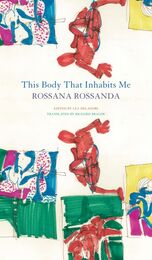 This Body That Inhabits Me
Rossana Rossanda
Seagull Books, 2022 A collection of essays on the mysteries of the body from one of Italy’s leading postwar communist intellectuals.
Politician, translator, and journalist Rossana Rossanda was the most important female left-wing intellectual in post-war Italy. Central to the Italian Communist Party’s cultural wing during the 1950s and ’60s, she left an indelible mark on the life of the mind. The essays in this volume, however, bring together Rossanda’s reflections on the body—how it ages, how it is gendered, what it means to examine one’s own body. The product of a decades-long dialogue with the Italian women’s movement (above all with Lea Melandri, a vital feminist writer who provides an afterword to the current volume), these essays represent an honest and raw meeting between communist and feminist thought. Ranging from reflections on her own hands through to Chinese cinema, from figures such as the Russian cross-dressing soldier Nadezhda Durova to the Jacobin revolutionary Theroigne de Mericourt, here we see Rossanda’s fierce intellect and extraordinary breadth of knowledge applied to the body as a central question of human experience.
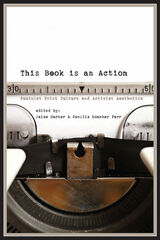 This Book Is an Action: Feminist Print Culture and Activist Aesthetics
Edited by Jaime Harker and Cecilia Konchar Farr
University of Illinois Press, 2016 The Women's Liberation Movement held a foundational belief in the written word's power to incite social change. In this new collection, Jaime Harker and Cecilia Konchar Farr curate essays that reveal how second-wave feminists embraced this potential with a vengeance. The authors in This Book Is an Action investigate the dynamic print culture that emerged as the feminist movement reawakened in the late 1960s. The works created by women shined a light on taboo topics and offered inspiring accounts of personal transformation. Yet, as the essayists reveal, the texts represented something far greater: a distinct and influential American literary renaissance. On the one hand, feminists took control of the process by building a network of publishers and distributors owned and operated by women. On the other, women writers threw off convention to venture into radical and experimental forms, poetry, and genre storytelling, and in so doing created works that raised the consciousness of a generation. Examining feminist print culture from its structures and systems to defining texts by Margaret Atwood and Alice Walker, This Book Is an Action suggests untapped possibilities for the critical and aesthetic analysis of the diverse range of literary production during feminism's second wave.
 This Book is Free and Yours to Keep: Notes from the Appalachian Prison Book Project
Connie Banta
West Virginia University Press, 2024 2024 Weatherford Award Winner, Nonfiction
This Book Is Free and Yours to Keep presents a captivating collection of letters and artwork by people in prison that highlights the crucial work done by the Appalachian Prison Book Project (APBP), a nonprofit that provides books to incarcerated people in West Virginia, Virginia, Tennessee, Kentucky, Ohio, and Maryland. Through the words of people directly impacted by the criminal punishment system, the collection provides uncommon insight into reading practices and everyday life in prisons and jails while being an inspiration for prison book projects, prison reform, and abolition.
Simultaneously communicating the vital importance of access to books and education, and conveying the power of community, the letters sent to APBP by incarcerated people spark conversations about race, poverty, and incarceration and shed light on the movement for accountability for state violence. This Book Is Free and Yours to Keep elucidates the violence and neglect perpetuated by carceral systems and offers a way forward based on solidarity and collaboration.
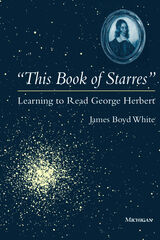 "This Book of Starres": Learning to Read George Herbert
James Boyd White
University of Michigan Press, 1995 "A real pleasure. . . . Reading this book was like revisiting a country I thought I knew well with a guide who could show me all kinds of delights I had missed in my previous sojourns. . . . A terrific, engaging book." --Michael Schoenfeldt, author of Prayer and Power: George Herbert and Renaissance Courtship
"This Book of Starres" is one of those all-too-rare books in which an author's love of someone's work--in this case, the seventeenth-century English poet George Herbert--leads to a journey of exploration.
Herbert's poetry presents a special set of challenges: It is to the modern ear archaic, difficult in thought and structure, and entirely theological in character. Yet no poet is more deeply admired by those who know him well. "This Book of Starres" is meant to engage the reader in a process of reading by which this verse can be seen to be vivid and alive. It is the record of one person's life-changing involvement with the poetry of George Herbert; in this it is about not only how, but why we read great poetry.
"It is a joy to experience Herbert's poetry in the company of James Boyd White, whose affinity for the work is always convincing and seems at times preternatural. 'This Book of Starres' is a necessary pleasure: all readers of poetry, whether expert or inexpert, will find it enriching." --Alice Fulton
". . . both a delight to read, and one of the most instructive exercises in literature and theology I have read for a long time. . . . Herbert emerges as one of the greatest, a writer to test and change the imagination, the very way in which we think about the world and that which is beyond it." --Literature and Theology
James Boyd White is Hart Wright Professor of Law, Professor of English, and Adjunct Professor of Classical Studies, University of Michigan.
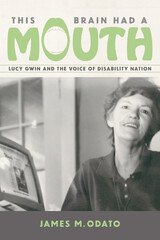 This Brain Had a Mouth: Lucy Gwin and the Voice of Disability Nation
James M. Odato
University of Massachusetts Press, 2021 Author, advocacy journalist, disability rights activist, feminist, and founder of Mouth magazine, Lucy Gwin (1943—2014) made her mark by helping those in "handicaptivity" find their voice. Gwin produced over one hundred issues of the magazine—one of the most radical and significant disability rights publications—and masterminded its acerbic, sometimes funny, and often moving articles about people from throughout the disability community.
In this engrossing biography, James M. Odato provides an intimate portrait of Gwin, detailing how she forged her own path into activism. After an automobile accident left her with a brain injury, Gwin became a tireless advocate for the equal rights of people she termed "dislabled." More than just a publisher, she fought against corruption in the rehabilitation industry, organized for the group Not Dead Yet, and much more. With Gwin's story at the center, Odato introduces readers to other key disability rights activists and organizations, and supplies context on current contentious topics such as physician-assisted suicide. Gwin's impact on disability rights was monumental, and it is time her story is widely known.
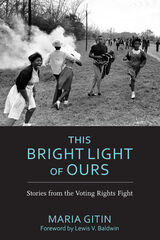 This Bright Light of Ours: Stories from the Voting Rights Fight
Maria Gitin
University of Alabama Press, 2014 This Bright Light of Ours offers a tightly focused insider’s view of the community-based activism that was the heart of the civil rights movement. A celebration of grassroots heroes, this book details through first-person accounts the contributions of ordinary people who formed the nonviolent army that won the fight for voting rights.
Combining memoir and oral history, Maria Gitin fills a vital gap in civil rights history by focusing on the neglected Freedom Summer of 1965 when hundreds of college students joined forces with local black leaders to register thousands of new black voters in the rural South. Gitin was an idealistic nineteen-year-old college freshman from a small farming community north of San Francisco who felt called to action when she saw televised images of brutal attacks on peaceful demonstrators during Bloody Sunday, in Selma, Alabama.
Atypical among white civil rights volunteers, Gitin came from a rural low-income family. She raised funds to attend an intensive orientation in Atlanta featuring now-legendary civil rights leaders. Her detailed letters include the first narrative account of this orientation and the only in-depth field report from a teenage Summer Community Organization and Political Education (SCOPE) project participant.
Gitin details the dangerous life of civil rights activists in Wilcox County, Alabama, where she was assigned. She tells of threats and arrests, but also of forming deep friendships and of falling in love. More than four decades later, Gitin returned to Wilcox County to revisit the people and places that she could never forget and to discover their views of the “outside agitators” who had come to their community. Through conversational interviews with more than fifty Wilcox County residents and former civil rights workers, she has created a channel for the voices of these unheralded heroes who formed the backbone of the civil rights movement.
This Cannot Happen Here: Integration and Jewish Resistance in the Netherlands, 1940-1945
Ben Braber
Amsterdam University Press, 2013 This sweeping work is the first comprehensive English-language study of Jewish resistance in the Netherlands during World War II.
Adopting a comparative approach, Ben Braber explores the situation of Jews in the Netherlands against the backdrop of their experiences in other Western European countries. Charting the occurrences of Jewish resistance, he pays particular attention to the ways in which the integration of Jews into Dutch society influenced their responses to German persecution. Braber’s incisive analyses shed new light on Dutch and Jewish history, pointing the way toward future paths of inquiry.
This Close to the Earth: Poems
SHOMER ENID
University of Arkansas Press, 1992 The Pope Joan section, 1992 winner of the Eunice Tietjens Memorial Prize from Poetry Magazine
This Clumsy Living
Bob Hicok
University of Pittsburgh Press, 2006 Winner of the 2008 Bobbit National Poetry Prize.
“Few others in contemporary poetry are so brilliantly able to combine wit and weight, to charge the language so it virtually glows in the dark. Hicok's poems just plain rock. They rock because they are gorgeous. They rock because they are sad and turn on the radio. They dance our 'clumsy living' with our shadows and our isolations to a music that always, always remembers the original delight in which 'the feel of things, if [we] cherish, helps [us] live / more like a minute than a clock.'”--Beckian Fritz Goldberg
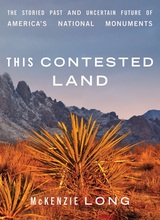 This Contested Land: The Storied Past and Uncertain Future of America's National Monuments
McKenzie Long
University of Minnesota Press, 2022 One woman’s enlightening trek through the natural histories, cultural stories, and present perils of thirteen national monuments, from Maine to Hawaii—now available in paperback This land is your land. When it comes to national monuments, the sentiment could hardly be more fraught. Gold Butte in Nevada, Organ Mountains–Desert Peaks in New Mexico, Katahdin Woods and Waters in Maine, Cascade–Siskiyou in Oregon and California: these are among the thirteen natural sites McKenzie Long visits in This Contested Land, an eye-opening exploration of the stories these national monuments tell, the passions they stir, and the controversies surrounding them today. Starting amid the fragrant sagebrush and red dirt of Bears Ears National Monument on the eve of the Trump Administration’s decision to reduce the site by 85 percent, Long climbs sandstone cliffs, is awed by Ancestral Pueblo cliff dwellings and is intrigued by 4,000-year-old petroglyphs. She hikes through remote pink canyons recently removed from the boundary of Grand Staircase–Escalante, skis to a backcountry hut in Maine to view a truly dark night sky, snorkels in warm Hawaiian waters to plumb the meaning of marine preserves, volunteers near the most contaminated nuclear site in the United States, and witnesses firsthand the diverse forms of devotion evoked by the Rio Grande. In essays both contemplative and resonant, This Contested Land confronts an unjust past and imagines a collaborative future that bears witness to these regions’ enduring Indigenous connections. From hazardous climate change realities to volatile tensions between economic development and environmental conservation, practical and philosophical issues arise as Long seeks the complicated and often overlooked—or suppressed—stories of these incomparable places. Her journey, mindfully undertaken and movingly described, emphasizes in clear and urgent terms the unique significance of, and grave threats to, these contested lands.
This Country of Mothers
Julianna Baggott
Southern Illinois University Press, 2001 A mosaic of memories, the poems of This Country of Mothers recollect Julianna Baggott’s experiences as both mother and daughter. With wit, compassion, aggression, and anxiety, Baggott examines her maternal history. She recalls moments of creation and destruction in her life, times of elation and of desperation that mold her as both a woman and a poet. This affecting study of motherhood is framed in issues of Catholicism and of poetry itself, challenging and espousing the roles of both. Throughout her poems, Baggott’s personal experiences embrace universal themes to birth poems in a language and style that is both powerfully feminine and accessibly human.
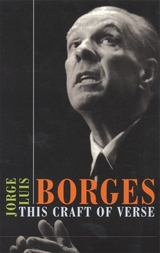 This Craft of Verse
Jorge Luis Borges
Harvard University Press, 2000 Through a twist of fate that the author of Labyrinths himself would have relished, these lost lectures given in English at Harvard in 1967–1968 by Jorge Luis Borges return to us now, a recovered tale of a life-long love affair with literature and the English language. Transcribed from tapes only recently discovered, This Craft of Verse captures the cadences, candor, wit, and remarkable erudition of one of the most extraordinary and enduring literary voices of the twentieth century. In its wide-ranging commentary and exquisite insights, the book stands as a deeply personal yet far-reaching introduction to the pleasures of the word, and as a first-hand testimony to the life of literature.
Though his avowed topic is poetry, Borges explores subjects ranging from prose forms (especially the novel), literary history, and translation theory to philosophical aspects of literature in particular and communication in general. Probably the best-read citizen of the globe in his day, he draws on a wealth of examples from literature in modern and medieval English, Spanish, French, Italian, German, Greek, Latin, Arabic, Hebrew, and Chinese, speaking with characteristic eloquence on Plato, the Norse kenningar, Byron, Poe, Chesterton, Joyce, and Frost, as well as on translations of Homer, the Bible, and the Rubáiyát of Omar Khayyám.
Whether discussing metaphor, epic poetry, the origins of verse, poetic meaning, or his own “poetic creed,” Borges gives a performance as entertaining as it is intellectually engaging. A lesson in the love of literature and in the making of a unique literary sensibility, this is a sustained encounter with one of the writers by whom the twentieth century will be long remembered.
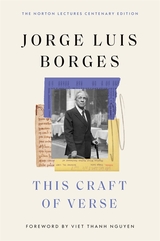 This Craft of Verse
Jorge Luis Borges
Harvard University Press, 2025 “A wondrously limpid testament to the pleasures of reading.” —Steven Poole, The Guardian
Six incandescent lectures on literature from the patron saint of mirrors, metafiction, and infinite libraries.
For more than thirty years, Jorge Luis Borges’s Norton Lectures went unpublished. Recorded at Harvard in 1967 and 1968, the tapes gathered dust in a library vault until their discovery after his death. It was a twist that the author of Labyrinths would have relished. This volume assembles the recovered materials, offering a priceless window into the Argentinian master’s lifelong love affair with the English language.
This Craft of Verse captures the cadences, candor, wit, and erudition of one of the twentieth century’s enduring literary voices. Though his avowed topic is poetry, Borges explores subjects ranging from prose forms—especially the novel—to literary history, translation theory, and philosophical aspects of communication writ large. Borges here draws on a wide range of literary examples—modern and medieval English, Spanish, French, Italian, German, Greek, Latin, Arabic, Hebrew, and Chinese. He brings characteristic eloquence and inexhaustible enthusiasm to readings of Plato, the Old Norse kenningar, Byron, Poe, Chesterton, Joyce, and Frost, as well as translations of Homer, the Bible, and the Rubáiyát of Omar Khayyám.
Whether discussing metaphor, the origins of verse, or his own “poetic creed,” Borges gives a performance as entertaining as it is intellectually engaging. A lesson in the love of literature and the making of a unique artistic sensibility, This Craft of Verse is a sustained encounter with one of the writers whose place in the twentieth century will be forever remembered.
 This Day and Time: A Critical Edition
Linda Behrend
University of Tennessee Press, 2025 Considered by many scholars to be the first novel to realistically depict the Appalachian region and its people, Anne Armstrong's This Day and Time (1930) follows a resilient young woman named Ivy, deserted by her husband and raising a young son in the mountains after having tried working factory jobs in town. With lyrical descriptions of the landscape and careful, if archaic, use of dialect, Armstrong explores both timeless and contemporaneous themes, including the impact of industrialization, the deep connection between mountaineers and their land, the roles and victimization of women, and the cycle of life through the changing seasons. Agrarian critic Donald Davidson called it “as true a novel of the mountains as has been written.”
For this new edition of Armstrong's work, editor Linda Behrend has written a critical introduction that discusses these literary themes and other components of the text,including biographical information, an analysis of Armstrong's style and technique, and connections to other literary works of the time. An extensive bibliography includes archival and primary sources, book reviews from This Day and Time's original appearance in 1930, reviews of stage adaptations of the book, and sources that shed light on its unique linguistic style. Almost a century after This Day and Time was first published, this edition offers both an engaging narrative and an insightful study for a new generation of readers.
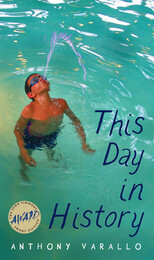 This Day in History
Anthony Varallo
University of Iowa Press, 2005 On the verge of maturity--where parents are distant or absent, friendships are often more accidental than deliberate, and restless angst is common--Anthony Varallo's adolescent protagonists dissect the world, and their place in it, with keen perception. This Day in History deftly collects their moments of discovery. “There's a feeling I get whenever I enter an unfamiliar house, as if a secret inventory has been handed to me, and I am made to understand that the sofa cushions are stained underneath, the coffee table nursing one gimp leg, the books along the bookcase stolen from summer rental, and the dining room table used only for Christmas and taxes,” the narrator confesses in the first of Varallo's twelve stories. Here, a birthday party for an unpopular classmate reveals an adult world both familiar and utterly strange. In subsequent stories a young girl longs to be a part of her best friend's family, only to discover the family is less than ideal; two sisters recall the childhood houses they grew up--and apart--in, places inseparable from each woman's notion of the other; and a mother and son set off on a bold and hopeless errand, their suburban neighborhood momentarily transformed into a stage.As these children stand on the brink of adulthood, unsure how to move forward, striving to make sense of the world around them, they often discover that the distance between themselves and others is no nearly so great as first imagined. Funny, sad, and hopeful, Varallo's stories make a gentle argument for connection and community and, in doing so, seek to extend our sympathy toward the world.
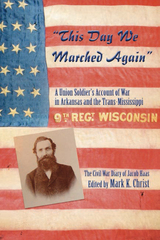 "This Day We Marched Again": A Union Soldier's Account of War in Arkansas and the Trans-Mississippi
Mark K. Christ
Butler Center for Arkansas Studies, 2014 A testament to the valor and determination of a common soldier On September 17, 1861, twenty-two-year-old Jacob Haas enlisted in the Sheboygan Tigers, a company of German immigrants that became Company A of the Ninth Wisconsin Infantry Regiment. Over the next three years, Haas and his comrades marched thousands of miles and saw service in Arkansas, Kansas, Missouri, and the Indian Territory, including pitched battles at Newtonia, Missouri, and Jenkins’ Ferry, Arkansas. Haas describes the war from the perspective of a private soldier and an immigrant as he marches through scorching summers and brutally cold winters to fight in some of the most savage combat in the west. His diary shows us an extraordinary story of the valor and determination of a volunteer soldier. Though his health was ruined by war, Haas voiced no regrets for the price he paid to fight for his adopted country.
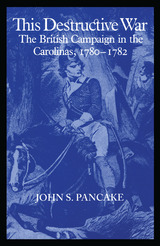 This Destructive War: The British Campaign in the Carolinas, 1780-1782
John S. Pancake
University of Alabama Press, 1985 An exciting and accurate portrayal of the military action in the southern colonies that led to a new American nation Following up the success of his 1777: The Year of the Hangman about the northern theaters of the American Revolutionary War, historian John Pancake now cover the war in the South, from General Clinton's attack on Charleston in the spring of 1780 to Cornwallis's surrender at Yorktown in October 1781. Pancake expertly takes the reader back and forth between British and American headquarters to provide a brisk and sharp view from both sides of the conflict. His artful analysis also adds insights to the familiar narrative of the British losing because of their mistakes, American victory thanks to tenacity (particularly in the person of southern Continental forces commander Nathanael Greene), and British failure to overcome logistical problems of geography. Readers enjoy Pancake's wide-ranging knowledge of military history as applied to the Revolution as where, for example, he cites that tests conducted by the US Navy in World War II demonstrated that gun crews that were 100 percent efficient in training lost 35 percent of their efficiency in their first performance in combat. Pancake has a writer's eye for telling details, and he creates characters sketches of the main players in the conflict that readers will always remember. This Destructive War includes a number of figures as well as detailed maps of the region where battle took place. General readers as well as scholars and students of the American Revolution will welcome anew this classic, definitive study of the campaign in the Carolinas.
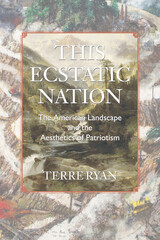 This Ecstatic Nation: The American Landscape and the Aesthetics of Patriotism
Terre Ryan
University of Massachusetts Press, 2011
Americans' cultural love affair with their country's landscape started in the nineteenth century, when expansionism was often promoted as divine mission, the West was still the frontier, and scenery became the backdrop of nationalist mythology. With a promise of resources ripe for development, Manifest Destiny–era aesthetics often reinforced a system of environmental degradation while preserving the wide and wild view. Although the aesthetics have evolved, contemporary media are filled with American landscape images inspired by the nineteenth century.
Terre Ryan examines this phenomenon by exploring the overlapping trails of national mythology, landscape aesthetics, patriotic discourse, and public policy. Tracing her journeys around bombing grounds in Nevada, logging sites in Oregon, and energy fields in Wyoming, she argues that business and government agencies often frame commercial projects and national myths according to nineteenth-century beliefs about landscape and bounty. Advertisements and political promotional materials following this aesthetic framework perpetuate frontier-era ideas about the environment as commodity, scenery, and cultural trashlands. Transmitted through all types of media, nineteenth-century perspectives on landscape continue to inform mainstream perceptions of the environment, environmental policies, and representations of American patriotism.
Combining personal narrative with factual reportage, political and cultural critique, and historical analysis, Ryan reframes the images we see every day and places them into a larger national narrative.
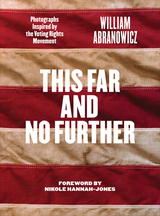 This Far and No Further: Photographs Inspired by the Voting Rights Movement
By William Abranowicz; foreword by Nikole Hannah-Jones
University of Texas Press, 2021 Standing on the Edmund Pettus Bridge in Selma, Alabama, in 2017, photographer William Abranowicz was struck by the weight of historical memory at this hallowed site of one of the civil rights movement's defining episodes: 1965's “Bloody Sunday,” when Alabama police officers attacked peaceful marchers. To Abranowicz’s eye, Selma seemed relatively unchanged from its apperance in the photographs Walker Evans made there in the 1930s. That, coupled with an awareness of renewed voter suppression efforts at state and federal levels, inspired Abranowicz to explore the living legacy of the civil and voting rights movement through photographing locations, landscapes, and individuals associated with the struggle, from Rosa Parks and Harry Belafonte to the barn where Emmett Till was murdered. The result is This Far and No Further, a collection of photographs from Abranowicz's journey through the American South. Through symbolism, metaphor, and history, he unearths extraordinary stories of brutality, heroism, sacrifice, and redemption hidden within ordinary American landscapes, underscoring the crucial necessity of defending—and exercising—our right to vote at this tenuous moment for American democracy.
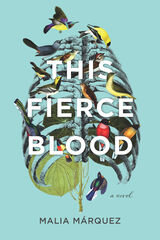 This Fierce Blood: A Novel
Malia Márquez
Acre Books, 2021 A multicultural saga, This Fierce Blood follows three generations of women in the Sylte family.
In rural late-nineteenth-century New England, Wilhelmina Sylte is a settler starting a family with her Norwegian immigrant husband. When she forms an inexplicable connection with a mountain lion and her cubs living near their farm, Mina grapples with divided loyalties and the mysterious bond she shares with the animals.
In 1927 in southern Colorado, Josepa is accused of witchcraft by a local priest for using the healing practices passed down from her Native mother. Fighting for her family’s reputation and way of life, Sepa finds strength in worldly and otherworldly sources.
When Magdalena, an ecologist, inherits her great-grandmother Wilhelmina’s Vermont property, she and her astrophysicist husband decide to turn the old farm into a summer science camp for teens. As Magda struggles with both personal and professional responsibilities, the boundary between science and myth begins to blur.
Rich in historical and cultural detail, This Fierce Blood combines magical realism with themes of maternal ancestral inheritance, and also explores the ways Hispano/Indigenous traditions both conflicted and wove together, shaping the distinctive character of the American Southwest. Readers of Téa Obreht and Ruth Ozeki will find much to admire in this debut novel.
This Fine Place So Far from Home: Voices of Academics from the Working Class
edited by C. L. Barney Dews and Carolyn Leste Law
Temple University Press, 1995 These autobiographical and analytical essays by a diverse group of professors and graduate students from working-class families reveal an academic world in which "blue-collar work is invisible." Describing conflict and frustration, the contributors expose a divisive middle-class bias in the university setting. Many talk openly about how little they understood about the hierarchy and processes of higher education, while others explore how their experiences now affect their relationships with their own students. They all have in common the anguish of choosing to hide their working-class background, to keep the language of home out of the classroom and the ideas of school away from home. These startlingly personal stories highlight the fissure between a working-class upbringing and the more privileged values of the institution.
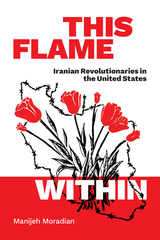 This Flame Within: Iranian Revolutionaries in the United States
Manijeh Moradian
Duke University Press, 2022 In This Flame Within Manijeh Moradian revises conventional histories of Iranian migration to the United States as a post-1979 phenomenon characterized by the flight of pro-Shah Iranians from the Islamic Republic and recounts the experiences of Iranian foreign students who joined a global movement against US imperialism during the 1960s and 1970s. Drawing on archival evidence and in-depth interviews with members of the Iranian Students Association, Moradian traces what she calls “revolutionary affects”—the embodied force of affect generated by experiences of repression and resistance—from encounters with empire and dictatorship in Iran to joint organizing with other student activists in the United States. Moradian theorizes “affects of solidarity” that facilitated Iranian student participation in a wide range of antiracist and anticolonial movements and analyzes gendered manifestations of revolutionary affects within the emergence of Third World feminism. Arguing for a transnational feminist interpretation of the Iranian Student Association’s legacy, Moradian demonstrates how the recognition of multiple sources of oppression in the West and in Iran can reorient Iranian diasporic politics today.
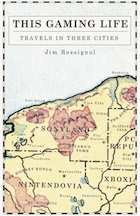 This Gaming Life: Travels in Three Cities
Jim Rossignol
University of Michigan Press, 2009 "In May 2000 I was fired from my job as a reporter on a finance newsletter because of an obsession with a video game. It was the best thing that ever happened to me.” So begins this story of personal redemption through the unlikely medium of electronic games. Quake, World of Warcraft, Eve Online, and other online games not only offered author Jim Rossignol an excellent escape from the tedium of office life. They also provided him with a diverse global community and a job—as a games journalist. Part personal history, part travel narrative, part philosophical reflection on the meaning of play, This Gaming Life describes Rossignol’s encounters in three cities: London, Seoul, and Reykjavik. From his days as a Quake genius in London’s increasingly corporate gaming culture; to Korea, where gaming is a high-stakes televised national sport; to Iceland, the home of his ultimate obsession, the idiosyncratic and beguiling Eve Online, Rossignol introduces us to a vivid and largely undocumented world of gaming lives. Torn between unabashed optimism about the future of games and lingering doubts about whether they are just a waste of time, This Gaming Life also raises important questions about this new and vital cultural form. Should we celebrate the “serious” educational, social, and cultural value of games, as academics and journalists are beginning to do? Or do these high-minded justifications simply perpetuate the stereotype of games as a lesser form of fun? In this beautifully written, richly detailed, and inspiring book, Rossignol brings these abstract questions to life, immersing us in a vibrant landscape of gaming experiences. “We need more writers like Jim Rossignol, writers who are intimately familiar with gaming, conversant in the latest research surrounding games, and able to write cogently and interestingly about the experience of playing as well as the deeper significance of games.”
—Chris Baker, Wired “This Gaming Life is a fascinating and eye-opening look into the real human impact of gaming culture. Traveling the globe and drawing anecdotes from many walks of life, Rossignol takes us beyond the media hype and into the lives of real people whose lives have been changed by gaming. The results may surprise you.”
—Raph Koster, game designer and author of A Theory of Fun for Game Design “Is obsessive video gaming a character flaw? In This Gaming Life, Jim Rossignol answers with an emphatic ‘no,’ and offers a passionate and engaging defense of what is too often considered a ‘bad habit’ or ‘guilty pleasure.’” —Joshua Davis, author of The Underdog “This is a wonderfully literate look at gaming cultures, which you don't have to be a gamer to enjoy. The Korea section blew my mind.”
—John Seabrook, New Yorker staff writer and author of Flash of Genius and Other True Stories of Invention digitalculturebooks is an imprint of the University of Michigan Press and the Scholarly Publishing Office of the University of Michigan Library dedicated to publishing innovative and accessible work exploring new media and their impact on society, culture, and scholarly communication. Visit the website at www.digitalculture.org.
This Giving Birth: Pregnancy and Childbirth in American Women's Writing
Julie Tharp
University of Wisconsin Press, 2000 Compelling essays which underline the central place pregnancy and childbirth hold in women’s writing. Embracing three centuries of prose and poetry, the anthology traces the evolution of American maternity literature, exploring the difficulties mothers faced as they struggled to transform themselves from objects into maternal subjects. Women as diverse as Anne Bradstreet, Anne Sexton, Sharon Olds, Kate Chopin, Toni Morrison, and Louise Erdrich all labored to reclaim the birthing process by giving voice to experiences and emotions long devalued by a patriarchal culture. Their voices resonate throughout this collection.
 This Grand and Magnificent Place: The Wilderness Heritage of the White Mountains
Christopher Johnson
University of New Hampshire Press, 2020 This is the complex story of New Hampshire's White Mountains, from the range's days as the majestic homeland of the Abenaki, first seen by English colonists four centuries ago, to its unassailable standing today as one of America's most beloved national forests, comprising 112,000 acres of protected wilderness.
Christopher Johnson, an avid hiker intimately familiar with the White Mountains, achieves two important objectives in This Grand and Magnificent Place. He lovingly explores their rich ecological, political, economic, and cultural history and, more broadly, opens a panoramic window on the evolution of American attitudes and policies toward wilderness over time.
Two competing visions of wilderness historically have coexisted in America: the instrumental, in which the wilderness is seen as a conglomeration of resources to be exploited for the benefit of entrepreneurs and consumers, and the aesthetic, in which the wilderness is appreciated for its natural beauty, the personal growth that it stimulates, the national pride it engenders, and the spiritual truth it offers. Johnson never loses sight of this fundamental dichotomy as he shares marvelous true tales of the first intrepid European settlers who "tamed" the Whites. He discusses Ethan Allen Crawford, the area's first innkeeper, the emergence of tourism, and America's love affair with the "wilderness experience"; and he explores tales of Thomas Cole, Nathaniel Hawthorne, and other renowned artists who immortalized these mountains in their works. He considers the coming of grand resort hotels—and the contemporaneous wilderness revival—in the late nineteenth century and the passing of the landmark 1911 Weeks Act, which was instrumental in preserving American wilderness in the face of development and threats of irreparable environmental damage. Johnson traces the perilous course of the twentieth-century movement toward wilderness preservation, which has successfully conserved the Whites, an extraordinary American treasure, for future generations. Finally, he poses thoughtful and essential questions regarding the destiny of this American wilderness, exploring the balance between maintaining its usefulness while conserving its glorious heritage.
This skillful and accessible history will rivet general readers, students, and professionals interested in the history, culture, and politics of the White Mountains, as well as those fascinated by environmental history and wilderness protection everywhere.
|
|

